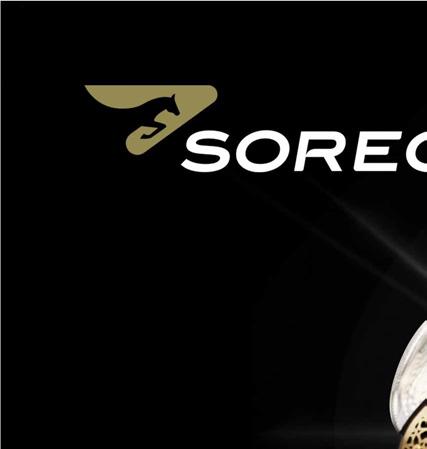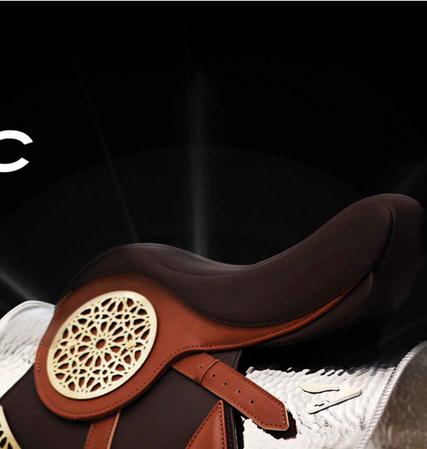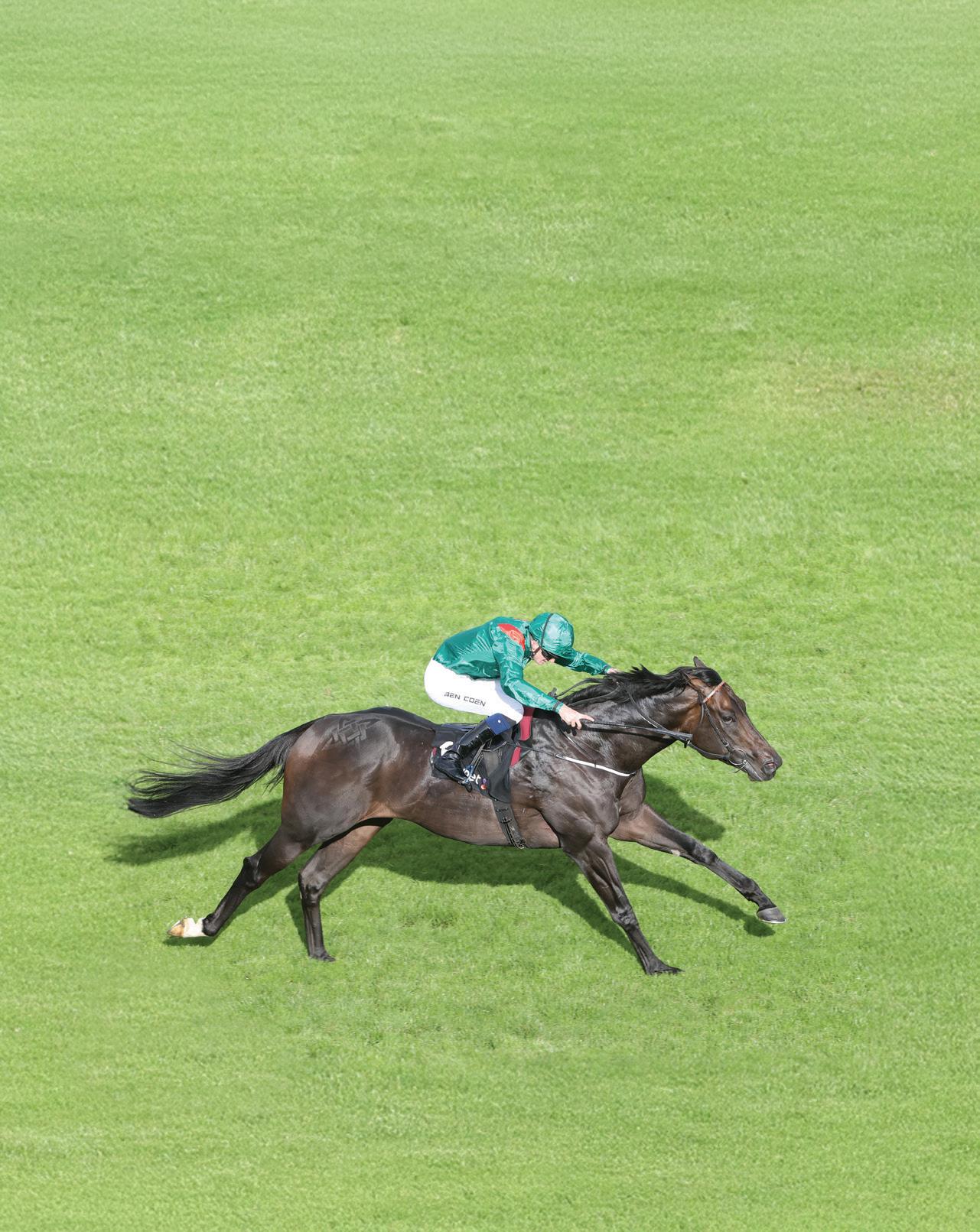
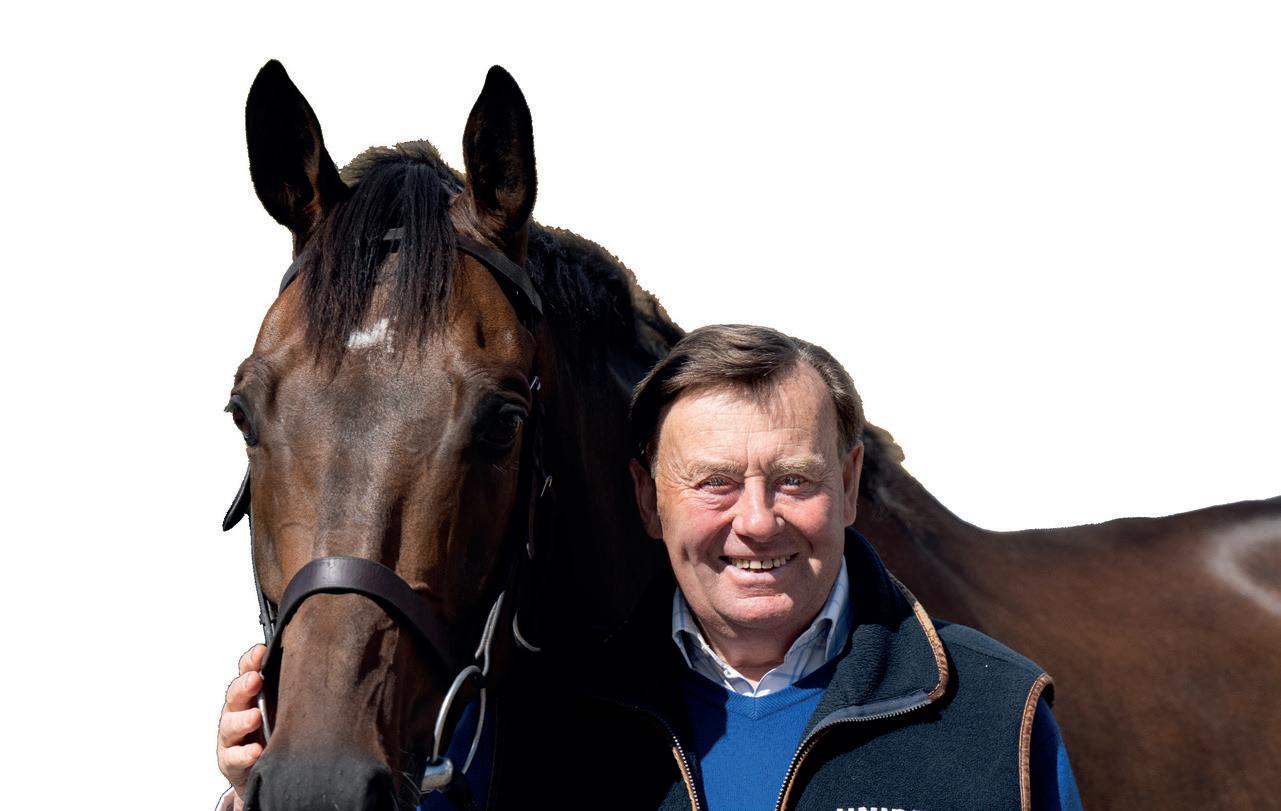
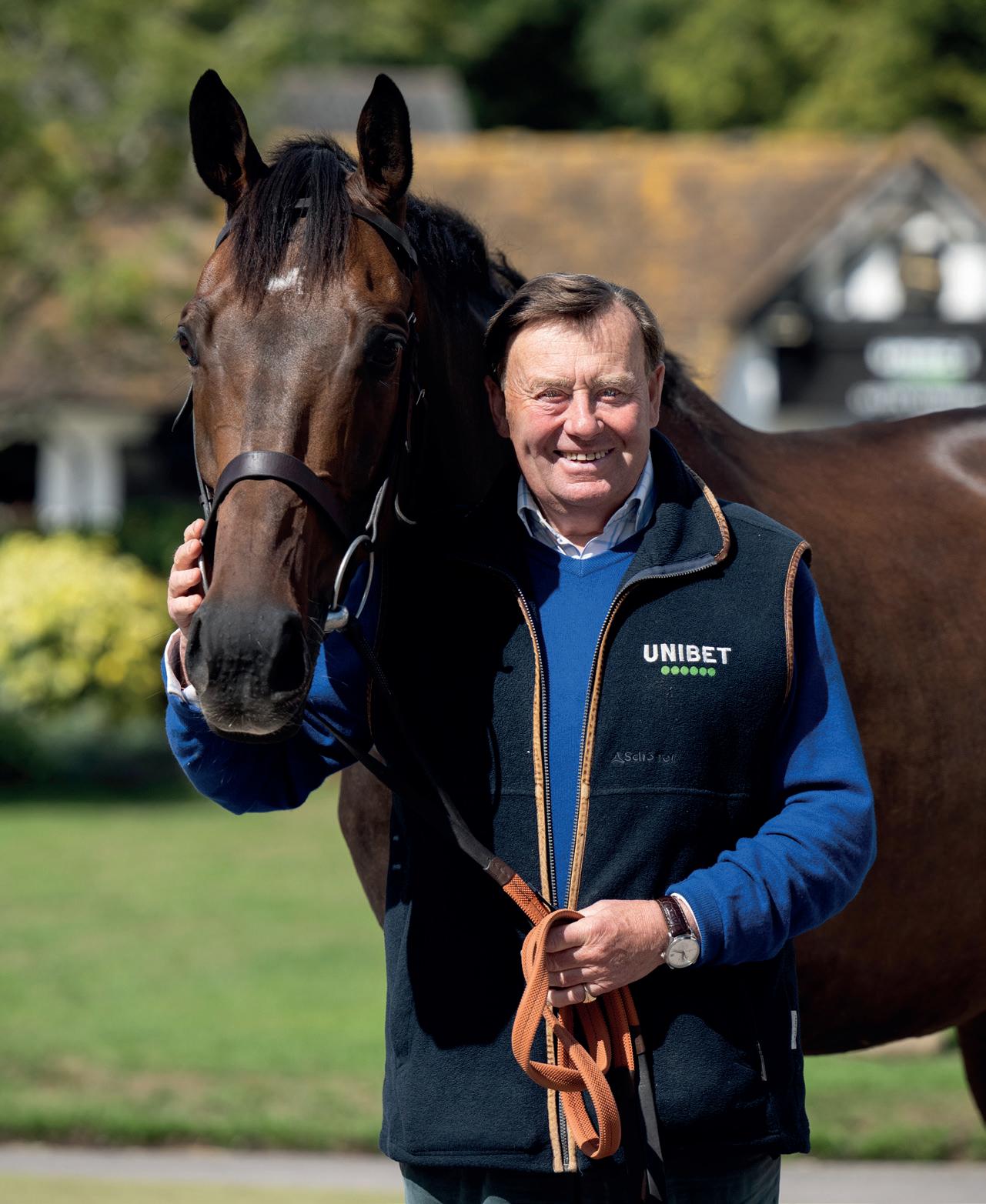
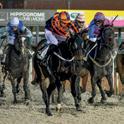
HAVE HORSE, WILL TRAVEL
Key

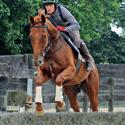
Analysing
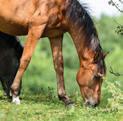













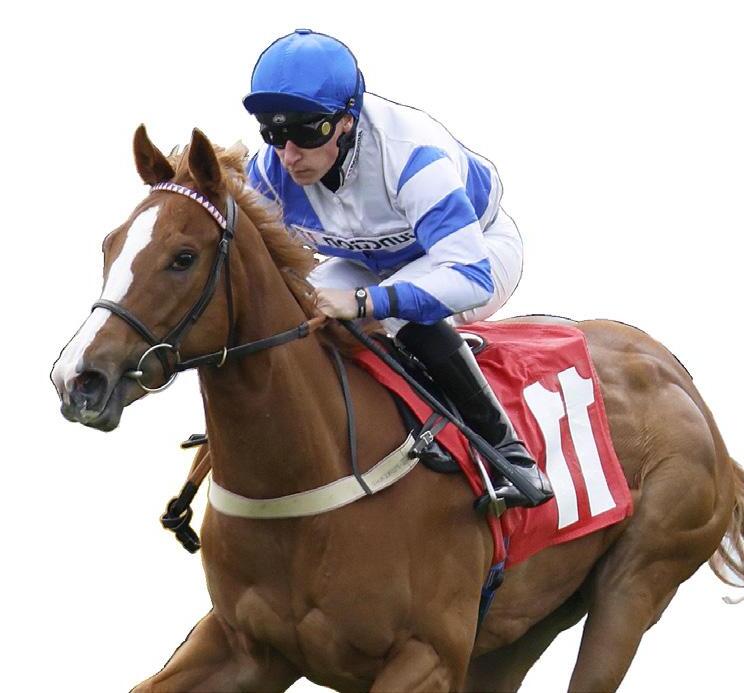








HAVE HORSE, WILL TRAVEL
Key


Analysing


















This issue includes the results of our important survey of European Thoroughbred Racehorse Practices. This survey was the first to be conducted on a Europe wide scale, based specifically on the needs of the racehorse.
With responses from over 141 trainers and pre-trainers from nine countries: Belgium, Denmark, France, Germany, Great Britain, Ireland (Republic and Northern), Spain and Sweden, the thorough survey demonstrates the level of care and understanding that trainers have for the welfare of the horses in their care.
But what impact will the results of the survey have? The survey was prompted by the review currently being conducted by the European Commission (EC) on animal husbandry, and its specific focus on horses. The EC has engaged its scientific advisors, the European Food Safety Authority (EFSA), to produce a scientific opinion on the protection of horses, and a technical report on current practices for their keeping.
So first and foremost, the results of the survey will be shared with the likes of the EFSA as well through the European Horse
Network (of which the European Trainers’ Federation is a member). The EHN regularly advises politicians in the European Parliament on equine related issues.
A big thank you to all who took the time to respond to the survey and especially to Dr. Paull Khan who has painstakingly pieced together an extensive article based on the survey results which can be found in this issue of the magazine.
Our cover profile trainer needs little introduction. Now in his 47th season with a training license, Nicky Henderson has won pretty much every major National Hunt race – bar one. As Alysen Miller discovered, a Grand National trophy is missing from the mantlepiece at Seven Barrows.
In this issue, we include a fascinating article on the latest research into the biomechanics of jumping. Biomechanics is the scientific study of the movement of a living body, in this case a racehorse, looking at how muscles, bones, tendons and ligaments all work in sync to produce a specific movement.
Our nutrition feature in this issue explores the role of gut health in racehorse performance, the risks posed by modern feeding practices, and the latest published research including recent field trials carried out on a novel gut supplement containing pre-biotics, digestible fibres, B-vitamins and postbiotics to show how trainers can give their horses a competitive edge.
The ‘Have Horse Will Travel’ series focuses on opportunities at the Breeders’ Cup meeting in Del Mar at the end of October. The international festivals in Morocco, Bahrain, Hong Kong, Dubai and opportunities at the Pegasus World Cup next January also come under the spotlight.
For our jumps trainers, we highlight the changes of qualification for Grade 1 Novices’ and Juvenile Hurdle races as well as looking at the Go North Series, which culminates in Finals weekend at Kelso, Musselburgh and Carlisle racecourses in late March.
Wherever your racing takes you this autumn - good luck!

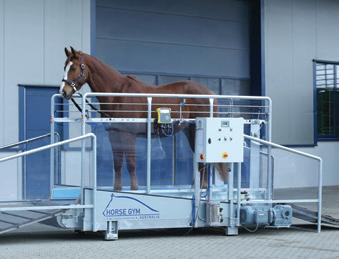
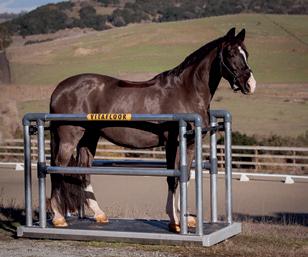

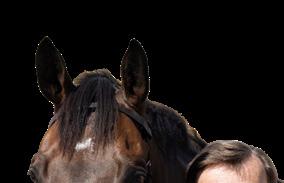

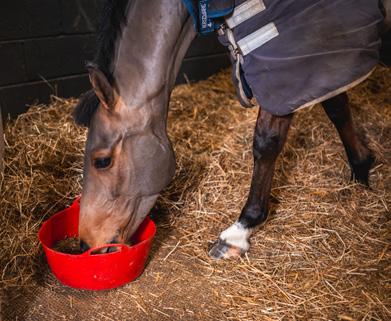
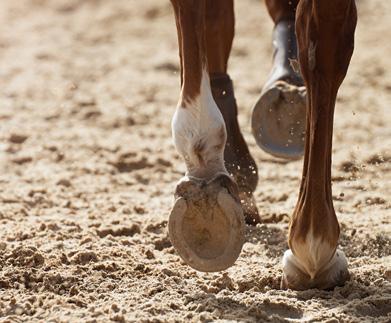
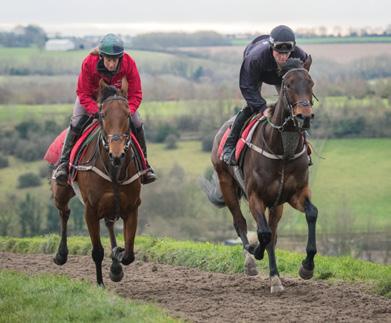
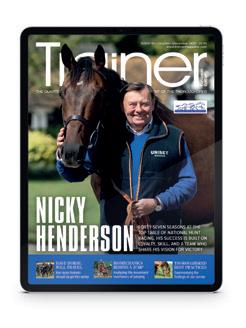
download our current digital editions and access back issues of both European and North American Trainer
06 Cavalor Trainer of the Quarter
Lissa Oliver talks to Eoin McCarthy – who had six winners at the recent Listowel Festival. Quite an achievement for a yard with just 36 horses riding out at present.
08 A vision for victory
Alysen Miller profiles six-time champion trainer Nicky Henderson on his fortyseven seasons at the top table of National Hunt racing.
20 The race starts in the gut
Sorcha O’Connor looks at the new research available for optimising digestive health for peak performance.
30 Have horse, will travel
Lissa Oliver looks at the international racing opportunities that trainers should be targeting this winter.
40 Racing on the edge
Laura Steley reviews the new research perspectives on SDFT and SL injuries in thoroughbreds.
48 Forces in flight
Laura Steley helps us understand how biomechanics and training can optimise a horse’s jumping performance.
56 The results are in!
Paull Khan reports on the results of the survey conducted into the husbandry practices that are adopted in the training of racehorses across Europe.
66 AI in the Equine Sector
David Doherty reports from the 2025 AI in the Equine Sector Conference on the latest advances in AI technology in racing and breeding.
70 Elie Hennau interview
Katherine Ford speaks with France Galop CEO Elie Hennau discussing the way forward for French racing.
74 Diagnostic testing
Jacqui Matthews gives top tips on how trainers can develop effective worm control strategies that help safeguard the effectiveness of wormers.
80 A look at ‘Learning Theory’
Jackie Zions interviews Sally King and Dr. Katrina Merkies on how learning theory can reduce stress and aid the development of top performers.
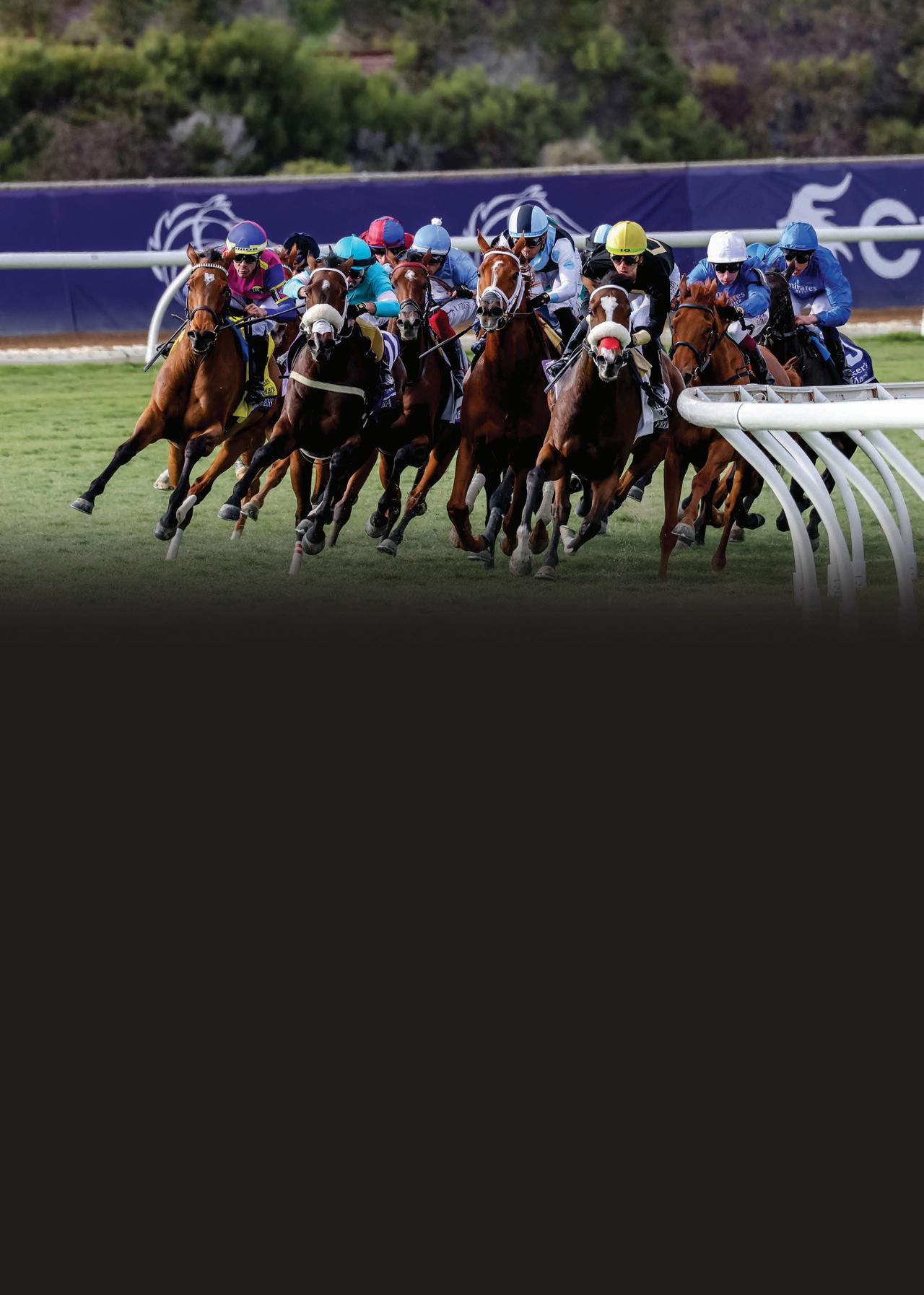
Pre-Entry Opens Online October 1
Breeders’ Cup World Championships
14 Grade I Championship Races • Over $34 Million in Purses and Awards
It’s time to take your place among the world’s greats. Pre-entry for the 2025 Breeders’ Cup World Championships opens online October 1 and closes at Noon (PDT), on Monday, October 20. All Breeders’ Cup World Championships races are non-invitational and are open to all thoroughbreds competing around the globe.
Offering purses and awards over $34 million and each race pays through the 10th finish position! Each Breeders’ Cup World Championships starter receives a travel award up to $10,000 for domestic horses and $40,000 for international horses shipping into California.
Enjoy exclusive world-class hospitality on racing’s biggest stage, including premium reserved seating for you and your guests, participant hotel accommodations including a credit for your stay, access to hospitality lounges, executive car service, and invitations to exclusive events.
To pre-enter online beginning October 1 and access the digital Horsemen’s Information Guide, visit members.breederscup.com.
Editorial Director/Publisher
Giles Anderson
Sub-Editor
Nico Jeeves
Design/Production
Damian Browning
Advert Production
Lauren Godfray
Circulation/Website
Lauren Godfray
Advertising Sales
Giles Anderson
Cover Photograph
Georgina Preston
Trainer magazine is published by Anderson & Co Publishing Ltd.
This magazine is distributed for free to all ETF members. Editorial views expressed are not necessarily those of the ETF. Additional copies can be purchased for £8.95 (ex P&P). No part of this publication may be reproduced in any format without the prior written permission of the publisher.
Printed in the European Union
For all editorial and advertising queries please contact:
Anderson & Co. Publishing
Tel: +44 (0) 1380 816777
Fax: +44 (0) 1380 816778
email: info@trainermagazine.com www.trainermagazine.com
Issue 91
Jackie Bellamy- Zions is communications manager at Equine Guelph for the past ten years, Jackie has over 30 years of experience in the horse industry in the capacity of coach, trainer, stable manager, competitor, judge and journalist.
David Doherty is a technology consultant with a background in medicine and nearly four decades of experience using biosensor technologies with elite racing animals. In 2017, he founded the HorseTech Conference at the Royal Veterinary College, London, to advance innovation in equine health and technology.
Katherine Ford was born in Yorkshire where she was raised with ponies, hunting and point to pointing. After completing a degree in languages and the BHA Graduate Development programme, she moved to France for a season with the International Racing Bureau’s Paris office. Three years later she joined French racing channel Equidia’s international department which took her on travels to racecourses from Brazil to Japan, California to Cape Town. She now splits her time between Equidia, Sky Sports Racing’s French coverage and freelance writing and translating, and dreams of future successes for the progeny of her two broodmares.
Paull Khan, PhD. is an international horseracing consultant. He is a member of the Executive Council of the International Federation of Horseracing Authorities (the global peak body for thoroughbred racing) and Chief Executive Officer of the European and Mediterranean Horseracing Federation. His other clients include the British Horseracing Authority. Previously, Dr Khan held many senior roles at Weatherbys, including Banking Director and Racing Director.
Prof. Jacqui Matthews qualified as a vet before completing a PhD in parasitology. She worked in academia for >25 years, leading projects valued >£14M. Outputs include >150 peer-reviewed papers, plus patents and lay articles. She is a fellow of the RCVS and Royal Society of Edinburgh and RCVS Specialist in Parasitology.
Alysen Miller is a writer, editor and producer based in London. She has written about racing for publications including The Sunday Times. She launched and produced CNN International’s first dedicated horseracing magazine show, Winning Post. She has ridden on the Flat as an amateur and currently competes in eventing on her retrained racehorse, Southfork.
Sorcha O’Connor graduated with her MVB from University College Dublin in 2017. After six years in equine and mixed practice, she joined Connolly’s Red Mills equine technical support team. Passionate about nutrition and preventative medicine, she has undertaken research in antimicrobial resistance, equine nutrition and hindgut health.
Lissa Oliver lives in Co. Kildare, Ireland and is a regular contributor to The Irish Field and the Australian magazine, Racetrack. Lissa is also the author of several collections of short stories and two novels.
Laura Steley BSc Hons in Equine Sports Science, is the Senior Stud Secretary at Shadwell Stud in Newmarket, alongside being the regular contributor for the Equine Health Update Section in Owner Breeder magazine. She has previously gained invaluable experience within the thoroughbred pre-training and rehabilitation sector, as well as fulfilling the role of an International Racing Data Analyst. Laura has a deep-rooted passion for equine science and feels passionately about applying scientific findings to sustain and improve equine welfare standards.

AIMS and OBJECTIVES of the ETF:
AIMS andOBJECTIVES of theETF:
a) To represent theinterests of allmembertrainers’ associationsinEurope.
a) To represent the interests of all member trainers’ associations in Europe.
b) To liaise with politicaland administrative bodies on behalf of European trainers.
b) To liaise with political and administrative bodies on behalf of European trainers.
c) To exchange information between members for the benefit of European trainers.
c) To exchange information betweenmembers forthe benefitofEuropeantrainers.
d) To provide anetwork of contacts to assist each member to developits policyand services to member trainers.
d) To provide a network of contacts to assist each member to develop its policy and services to member trainers.

Chairmanship:
GuyHeymans (B elgium)
CHAIRMANSHIP: Gavin Hernon (France)
Tel:+32(0)495389140
tel: +33 (0)7 87 16 02 48 email: contact@aedg.fr
Email: heymans1@telenet.be

Vice Chairmanship:
NicolasClément(France)
Tel:+33(0)344572539
Fax:+33(0)344575885
Email:entraineurs.de.galop@wanadoo.fr
VICE CHAIRMANSHIP: Paul Johnson (United Kingdom)
tel: +44 (0) 1488 71719 email: p.johnson@racehorsetrainers.org
Mrs Živa Prunk
Tel: +38640669918
Email: ziva.prunk@gmail.com

Joseph Vana
ITALY
Tel:+42(0)602429629
Ottavio Di Paolo
Email: horova@velka-chuchle.cz
tel: +39 328 355 95 81 email: ottaviodipaolo@gmail.com
Aggeliki Amitsis
Tel:302299081332+
Email: angieamitsis@yahoo.com

SWEDEN
GERMANY
Jessica Long
ErikaMäder
email: jplong@live.se
Tel:+49(0)2151594911
Fax:+49(0)2151590542
Email: trainer-und-jockeys@netcologne.de

Vice Chairmanship:
Christianvon derRecke (Germany)
Tel:+49(02254)845314
Fax:+49(02254)845315
Email: recke@t-online.de
VICE CHAIRMANSHIP: Christian von der Recke (Germany)
tel: +49 171 542 5050 email: recke@t-online.de
Mr Botond Kovács
Email: botond.kovacs@kincsempark.hu

BELGIUM
Agostino Affe
Email: affegaloppo@gmail.com
tel: +32 (0) 495389140 email: heymans1@telenet.be
Geert van Kempen
Mobile: +31 (0)6 204 02 830
Email: renstalvankempen@hotmail.com

GERMANY
Erika Mäder
Are Hyldmo
Mobile: +47 984 16 712
tel: +49 (0) 2151594911
Email: arehyldmo@hotmail.com
www.trainersfederation.eu

Treasu ship:
MichaelGrassick(Ireland)
TREASURERSHIP:
Tel:+353(0)45522981
Mobile:+353(0)872588770
Fax:+353(0)45522982
Feidhlim Cunningham (Ireland)
Email:office@irta.ie
tel: +353 (0) 45522981 email: office@irta.ie
Rupert Arnold
Tel:+44(0)148871719
Fax:+44(0)148873005
Email: r.arnold@racehorsetrainers.org

RUSSIA
Olga Polushkina
Email:p120186@yandex.ru
Birkje Hoorens Van Heyningen
tel: +31 (0) 250 930 016
email: birkjehvh@gmail.com
Jaroslav Brecka
Email: jaroslav.brecka@gmail.com

NORWAY
Tom Lühnenschloss
SWEDEN CarolineMalmborg
mobile: +47 (0) 46445345
Email: caroline@stallmalmborg.se
email: lynet3108@yahoo.no
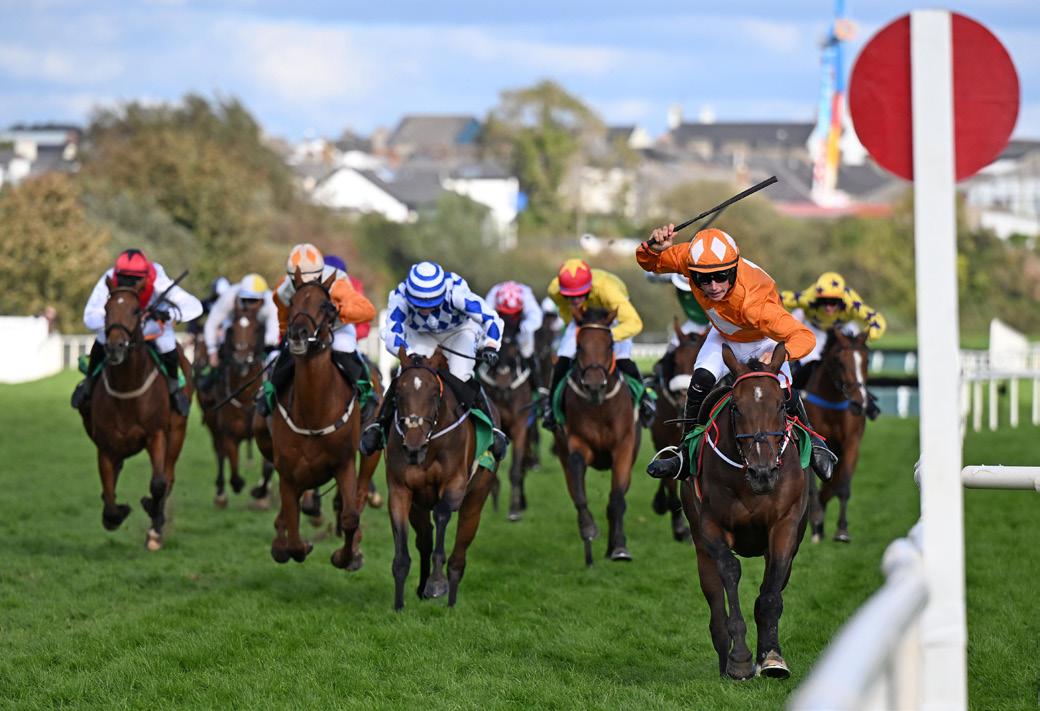
TRAINER OF THE QUARTER
The Cavalor Trainer of the Quarter award has been won by Eoin McCarthy. McCarthy and his team will receive a Cavalor voucher of €1,000 for Cavalor supplements and care products as well as a consultation with one of their senior product specialists.
WORDS: LISSA OLIVER PHOTOGRAPHY: HEALY RACING
Our Cavalor Trainer of the Quarter, Eoin McCarthy, was selected not for one outstanding performance but for six! McCarthy sent out the six winners, plus four placed horses at his local meeting, the prestigious Listowel Festival, and in doing so topped the Leading Trainer table, ahead of such powerhouses as Willie Mullins. Quite an achievement for a yard with 36 horses riding out at present.
McCarthy has been training National Hunt, Point-to-Point and Flat horses since 2012, as well as providing pre-training and breaking, from his family-run yard in Templethea. The yard sits in the tranquil countryside of County Limerick in the West of Ireland and while McCarthy says he has “the basic” in terms of
a four-furlong (800m) woodchip gallop and arena, less run-ofthe-mill is the access to a river for the horses to walk through and 40-acres of forest with a good mile of trekking paths, keeping his horses fit in both body and mind.
As a local trainer, Listowel is of huge importance to McCarthy, “it’s like a blood bank, if you don’t perform well at the meeting others do and they’re soaking up new owners.” Horses are individuals, but McCarthy has shown he can have them all ready for that one important week. “It’s not an overly big yard so it’s very easy to keep an eye on them, I took some horses to work at the Curragh on The Old Vic gallop, while others never went away and did everything here, you get to know what works best for each horse.”
LEFT: Fast Felix and Thomas O’Connor win the Adare Manor Opportunity Handicap Hurdle — the second of six winners at the week-long 2025 Listowel Harvest Festival for trainer Eoin McCarthy.
The results were Carla’s Pet opening the meeting with a win, a double the following day with Shadow Paddy and Fast Felix, and topping it all the following afternoon the first treble of McCarthy’s career with Ollie La Ba Ba, Regards To Rose and Tropical Image. Throw into the mix the placed runners Moon Sky, Wholelotofbusiness, Jekiki and Elusive Ogie and it was something of a bonanza for McCarthy.
“It’s something that you only dream of, it’s unbelievable,” he admits. “The amount of people still coming over congratulating me, it’s very special as racing moves forward so quick, yesterday’s race forgotten. Without the owners and staff it won’t work, and my family are working alongside me, too.

Trainer
“I’m riding out every lot each morning, it’s my favourite part, I love being hands on. It might sound silly, but I only train because I love horses, I love working with them, and I really enjoy it when the three-year-olds start coming in and getting them jumping.
and
“I don’t look at it like a business, if a horse takes two years to come along so be it, let him. It’s probably not the best business model and it takes time, but it’s beginning to pay off now and we’re going in the right direction.”




CAVALOR FREEBUTE & CAVALOR LACTATEC
Cavalor FreeBute supports muscles and joints for improved mobility. FreeBute will offer relief from discomfort in the recovery process after heavy effort.
Cavalor LactaTec is a complete supplement that supports muscle activity, stimulates muscle recovery and prevents stiffness, damage, and fatigue in a variety of ways.
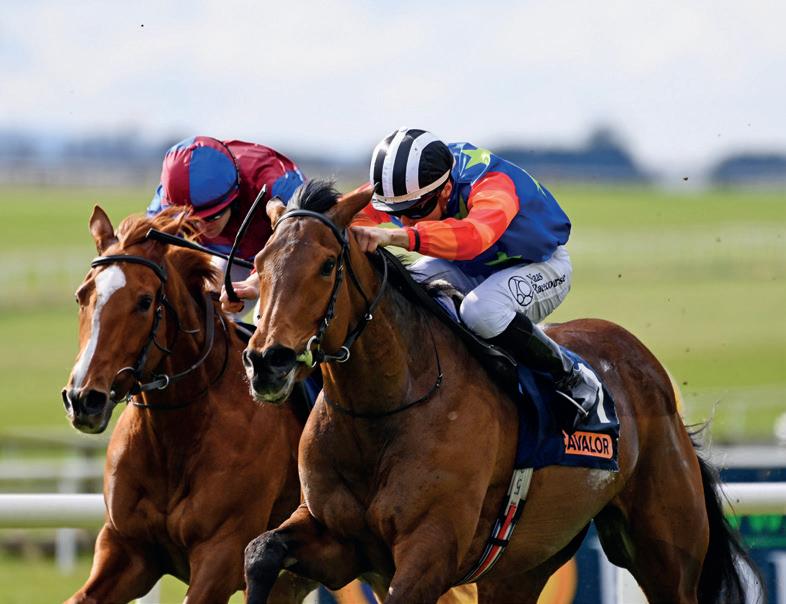
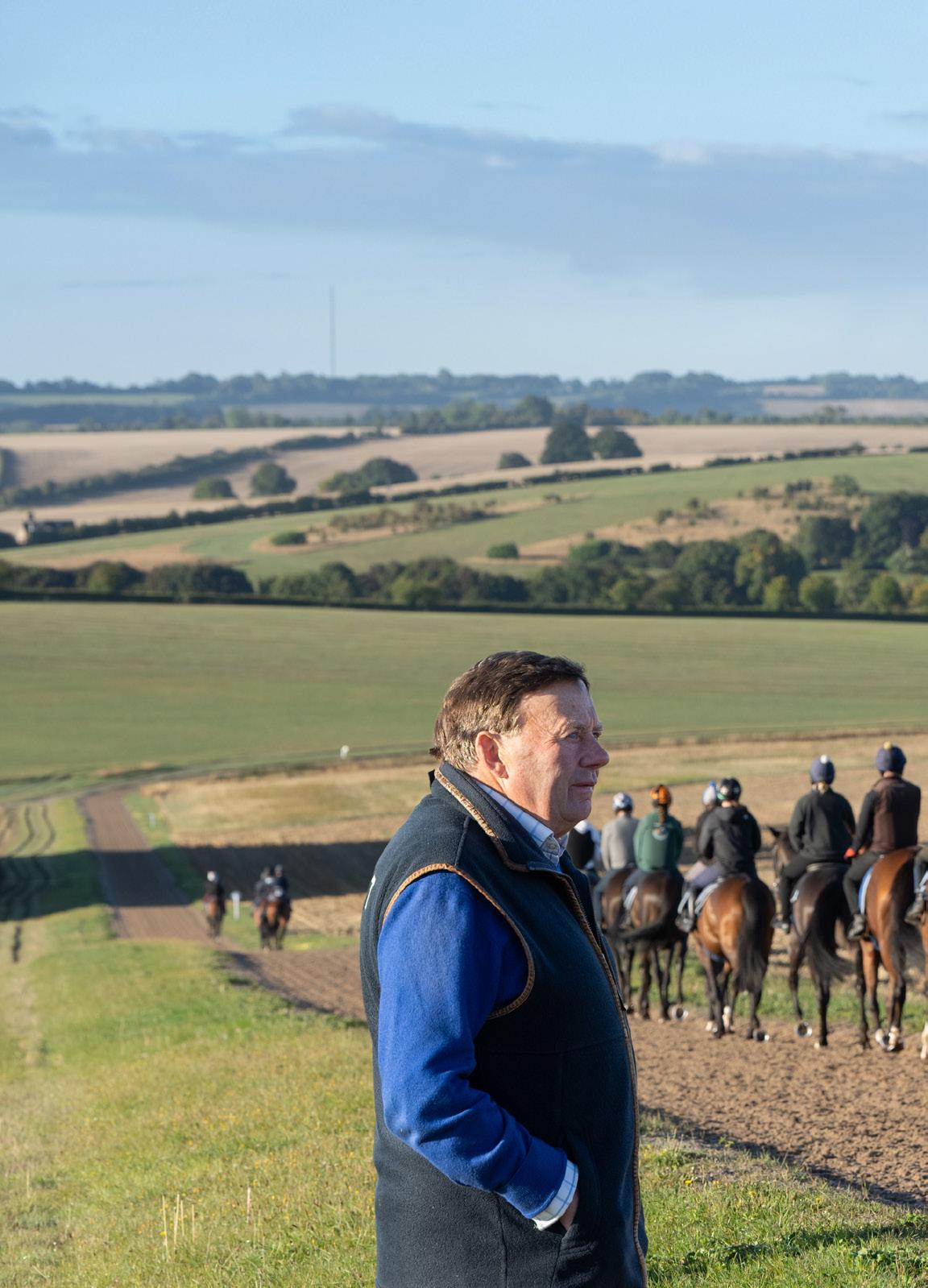
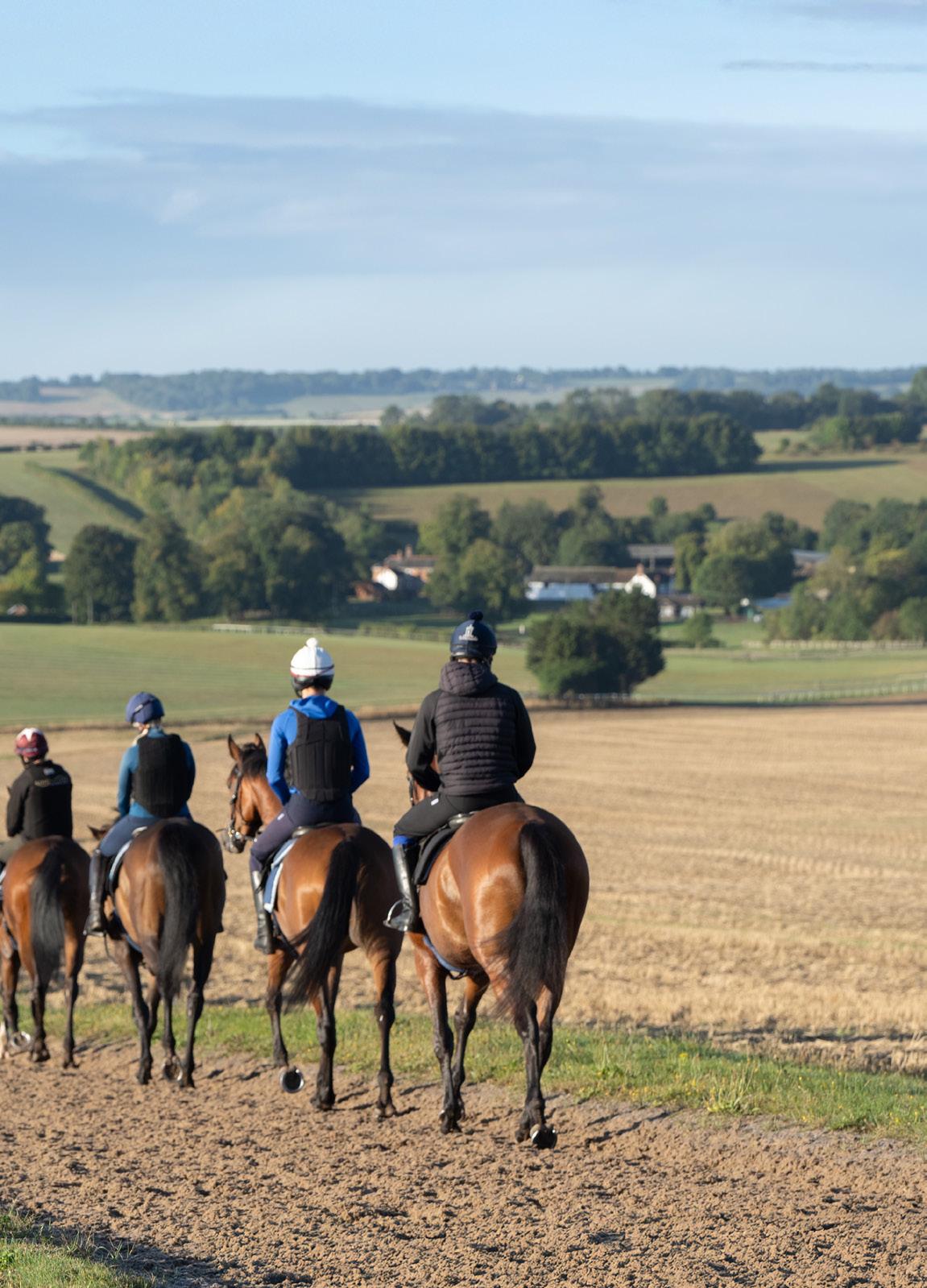
“I’VE BEEN VERY, VERY LUCKY... IT’S BEEN FUN. AND IT’S STILL FUN. AND I INTEND TO GO ON HAVING FUN.”
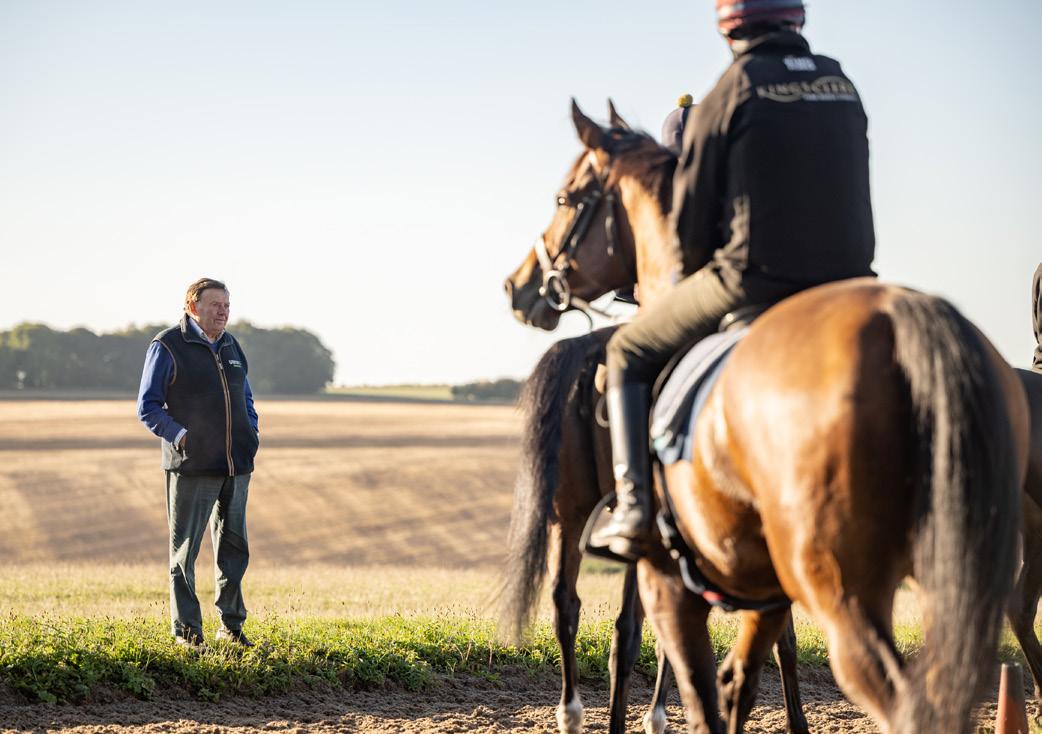
Of course, they’d never let me have a driving licence,” chortles Nicky Henderson. We are in his jeep hurtling across the Lambourn Downs on our way to watch first lot get put through their paces. I reach reflexively for my seatbelt.
“I drive around here [‘here’ being, naturally, the historic Seven Barrows] but I wouldn’t see a car coming until it’s 50 yards away. Which is not a very safe way of driving,” he admits.
Henderson suffers from macular degeneration – an eye disease that affects central vision. People with macular degeneration can’t see things that are directly in front of them. Henderson started experiencing blurred vision 10 years ago. Since then, his eyesight has become progressively worse. “When you lose those these things gradually, you don’t notice it to start with,” he says.
While living with the condition certainly comes with challenges, it cannot be said that Henderson’s failing eyesight has dulled the six-time champion trainer’s enthusiasm for the game. “There are a lot of things I can’t do, and there are definitely things that I miss,” he explains. “The worst thing is not being able to see people’s faces. I can’t really read without putting it in great big letters [on his iPad], and even then it still doesn’t work particularly well. I read what I have to read.”
This includes reading the Racing Post cover to cover every day. “Well, the greyhounds get a miss,” he says. “But I don’t read a daily newspaper. I’m probably the only person you’ve ever written an article about who will never read it,” he quips. “But I can see horses. That’s the one thing I can see. Once they’re out, I know exactly who’s who and what’s where. If that was a human, I couldn’t tell you who it was if I didn’t know them at that distance. But I can see the whole horse.”
There is little that hasn’t already been written about Nicholas John Henderson LVO OBE, obviating the need for him to read my humble contribution to the canon. He is the son of Johnny Henderson, a banker and racehorse owner (not to mention
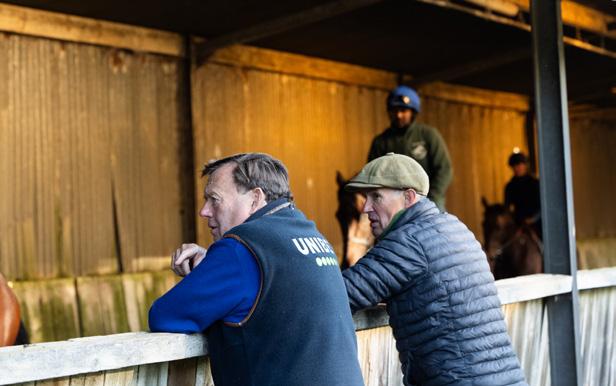

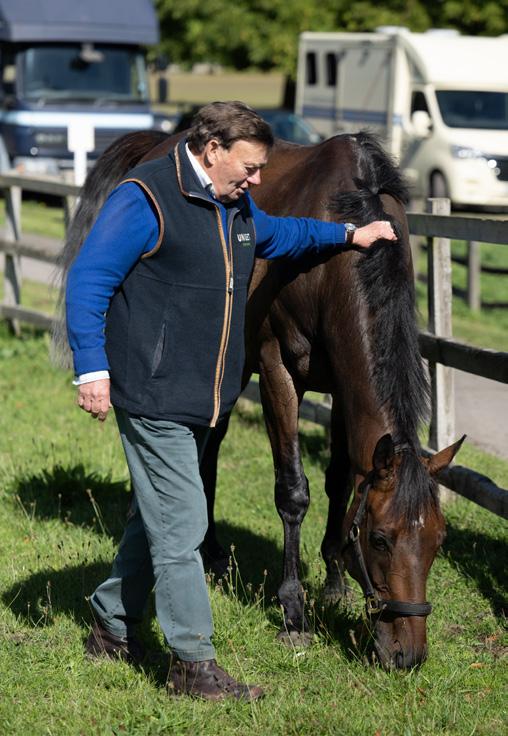
aide-de-camp to Field Marshal Viscount Montgomery of Alamein, whom he tapped to be Nicky’s godfather) who was instrumental in keeping Cheltenham Racecourse out of the clutches of property developers when, in 1963, he and other Jockey Club members formed Racecourse Holdings Trust, a non-profit-making organisation that raised £240,000 (approximately £4.4 million today) to purchase the racecourse and safeguard its future, and that of the Cheltenham Festival.
Henderson père’s name was added to the title of the Grand Annual Handicap Chase in 2005. It had been expected that Henderson fils would follow his father’s well-healed footsteps into pinstripe suited respectability. “And I did, in a roundabout way,” he says. He spent a year in the Sydney offices of aristocratic private stockbroker Cazenove. He had been “mucking about in Western Australia with sheep and cattle and horses” when he was summoned back to London to start his City career. “I didn’t like the idea of it, so they came up with a great idea,” he says. “I could go back to Australia and be in their Sydney office, which had two people in it. That was going to suit me an awful lot better than sitting in London. So off I went, back to Australia, until it was eventually time to go back to London and get serious.” He lasted a year and a half. “I just couldn’t sit behind a desk and stare at a wall,” he says.
Instead, he became assistant trainer to the legendary Fred Winter. “I was at Fred’s for five years,” he says. “Then it was either a matter of going elsewhere to see if I could learn something else or kicking off [on my own] and seeing what happened.” So the legend goes, in 1978 he was at the pub when he agreed to purchase Windsor House Stables from Roger Charlton. “We just dreamt it up one night. Roger was going to go and be Jeremy Tree’s assistant and he said, ‘Well, why don’t you buy my place?’” he reminisces. “So he went off to Jeremy’s and I went down the road from Uplands, which was where Fred was. We had about five horses to start with. I hadn’t got a clue what we were doing, but it sort of got off the ground, miraculously.”

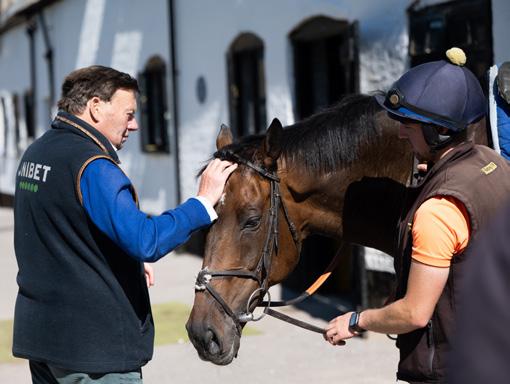
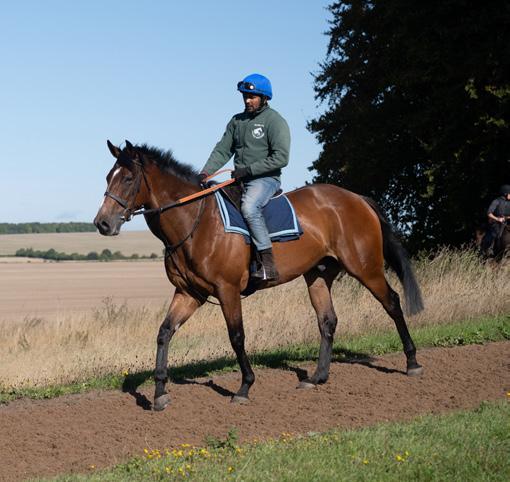
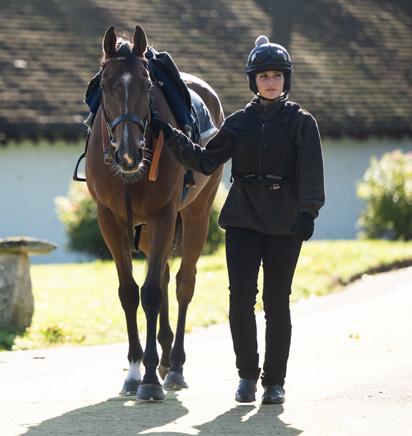
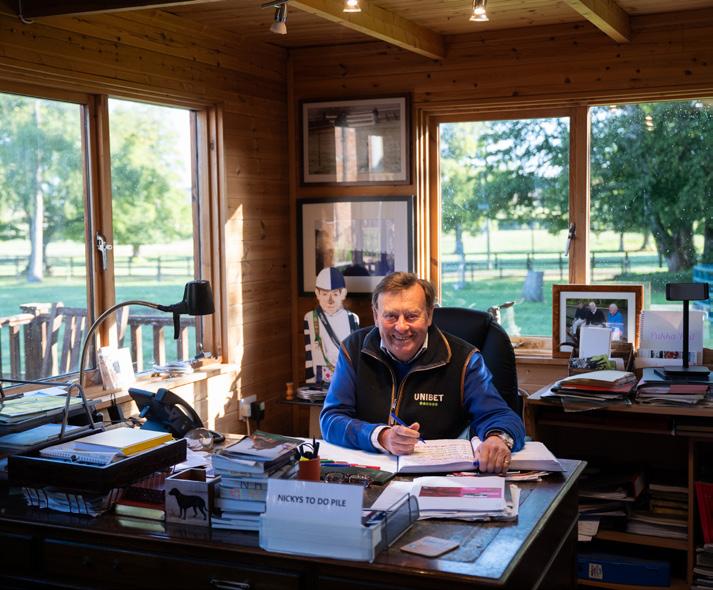
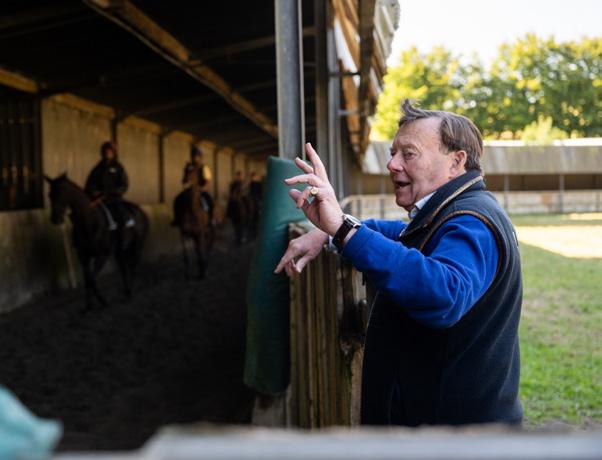

The Windsor House Stables purchase came with two amenities – an equine swimming pool (something of a novelty at the time) and Head Lad Corky Browne. “Roger said to me, ‘I’ve got this amazing head lad who you really want to take on.’” Corky would become Henderson’s right-hand man and remain an integral part of the team for more than four decades. He eventually retired in 2019.
“And then somebody said to me, ‘I’ve got a really good travelling head lad,’ which was Johnny Worrall,” Henderson continues. “And there was only one other person we needed: Jimmy Nolan, who used to ride for Fulke Walwyn. So I had the best head lad you could have, the best travelling head lad you could have, and a really good rider in Jimmy.”
The second half of the twentieth century was a golden age for National Hunt trainers in Lambourn. “There was Fred and Fulke, and then Richard Head and Jenny Pitman came along later,” he says. “They were great, legendary, men that you just looked up to and spoke to very quietly, if required to speak. We had such enormous awe and respect for those guys. They were icons. They were gods.”
Now Nicky Henderson is one of those icons. His accolades include nine Champion Hurdles and six Champion Chases. Amongst currently active trainers only Willie Mullins has won more races at the Cheltenham Festival than Henderson, making him Britain’s most successful trainer at the Festival. His encyclopaedic list of winners runs from Altior to Zongalero, the latter of whom was second in the Grand National in Henderson’s first year as a trainer. “A horse like him comes along and you nearly win the Grand National in your first year… Well, that would have been daft,” says Henderson. “Fred Winter did it, incidentally. But to come second in the Grand National in our first ever year? That’s how lucky you can be,” he says self-deprecatingly.
I put it to him that Napoleon famously said he’d rather have lucky generals than good ones. “I don’t think Monty would appreciate that!” Henderson laughs. Monty – Field Marshal Montgomery – and Henderson maintained a correspondence throughout the general’s life. “He was a fascinating man, and we got on very well. We had some very funny times together. We did write to each other a lot. But if I had said, ‘God, you were lucky,’ I think he’d think was a bit more skill in it than that!”


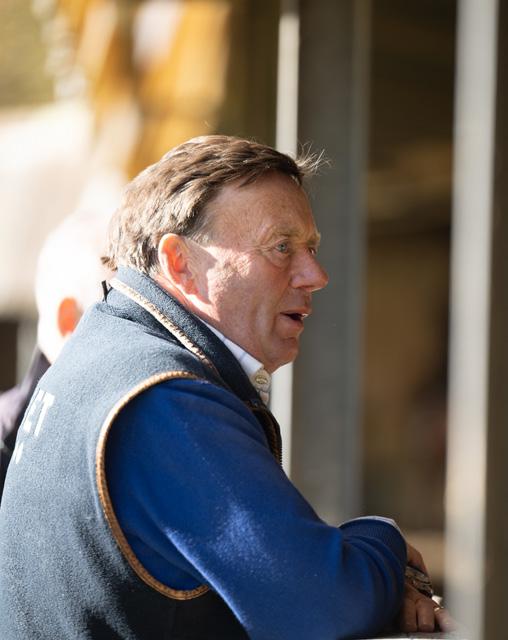
Zongalero’s second place in the 1979 Grand National – beaten by two lengths by Rubstic, the smallest horse in the race – has yet to be bettered by a Seven Barrows runner. But Henderson remains grateful for his first flag bearer. “He was the first horse I was ever asked to train,” he remembers. “He was quite a well-known horse. Tom Jones – who trained him – was becoming more and more of a flat trainer, so he was giving up the jumpers. He had this great big thing and he thought it was better for him to go somewhere else and, blow me down, I got this amazing letter one day – before we’d even opened the yard – saying, ‘I’ve got this horse. I’d like you to train it for me.’ I thought he was mad. Anyway, Zongalero came along with a few others, and, you know, the bits and pieces suddenly turned up and it sort of got the ball rolling. But I see him as the first great horse.”
If Zongalero was the first great horse, he certainly was not the last. Henderson’s current stable stars include Jonbon, Constitution Hill, Sir Gino, Lulamba and Jango Baie. “Those top horses are as good a string as anyone could have,” says Henderson. “They’re all genuine Group 1 horses, the top of their categories.”
But after four decades at the top of the game, does Henderson ever worry about the Young Turks snapping at his heels? “There are a lot of very good young trainers coming through, particularly National Hunt,” he says. “I think we’re probably all competitive. I know I am. You wouldn’t do this if you didn’t want to win. There’s no point in going out there thinking, ‘I’m just going to do this for fun.’”
So what’s the secret to his longevity? “There are two things you need: good horses and good people. You’ve got to have an awful lot of good people,” he says firmly. “That is essential.” He is quick to pay credit to Charlie Morlock –whom he describes in Montgomerian terms as his aide-de-camp – and Assistant Trainer George Daly as well as his wife, Sophie. “I know you’re trying to write about me,” he says, breaking the fourth wall. “But it’s not about me. Gosh, no. It’s the whole operation.
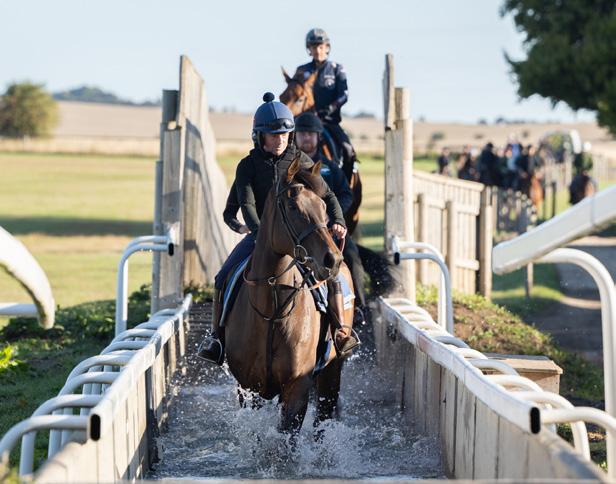
“We were talking about eyes,” he continues. “I have actually got three different pairs of eyes,” he says, “in Charlie, George and Sophie. I would be in serious trouble without them. They’re vital.” Morlock previously assisted Henderson for 10 years before striking off to train in his own name. “And he did fine,” says Nicky. “But it was a mutual idea that we get back together again. And he’s been here for God knows how long this time. George is my assistant trainer, he’s Charlie’s aide-de-camp. We just do everything together.” It all sounds a bit like being a field marshal, I suggest. “I suppose so,” he says. “It has to be reasonably regimented with that number of people and that number of horses. We pull out at 7.30am every single morning, 365 days of the year, except Sundays.” Every evening Henderson goes round half the yard. “I’m feeling their legs, looking at them. ‘You’ve got lighter,’ ‘You’ve put weight on,’ ‘I don’t like your leg,’ ‘You look well,’ ‘You look shocking.’ Not many yards would do evening stables like we do here. It’s still very old fashioned.”
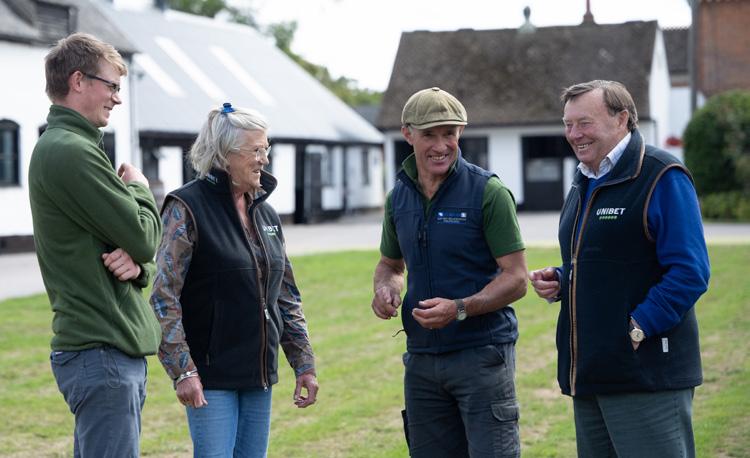
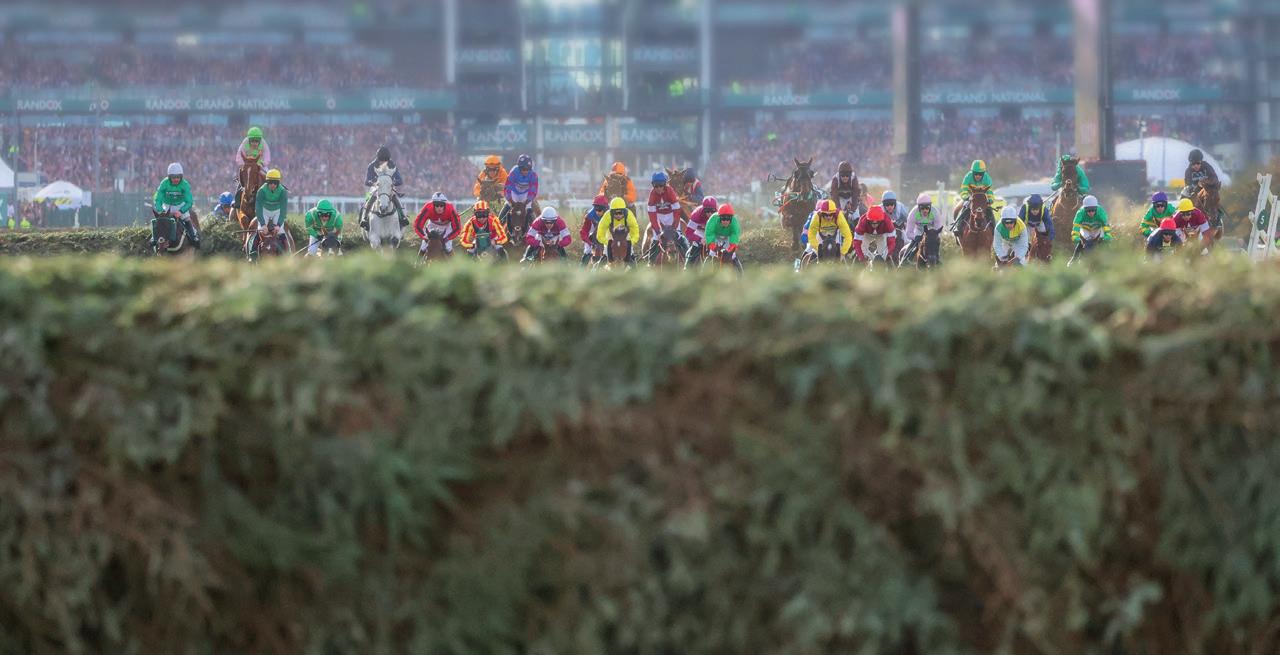
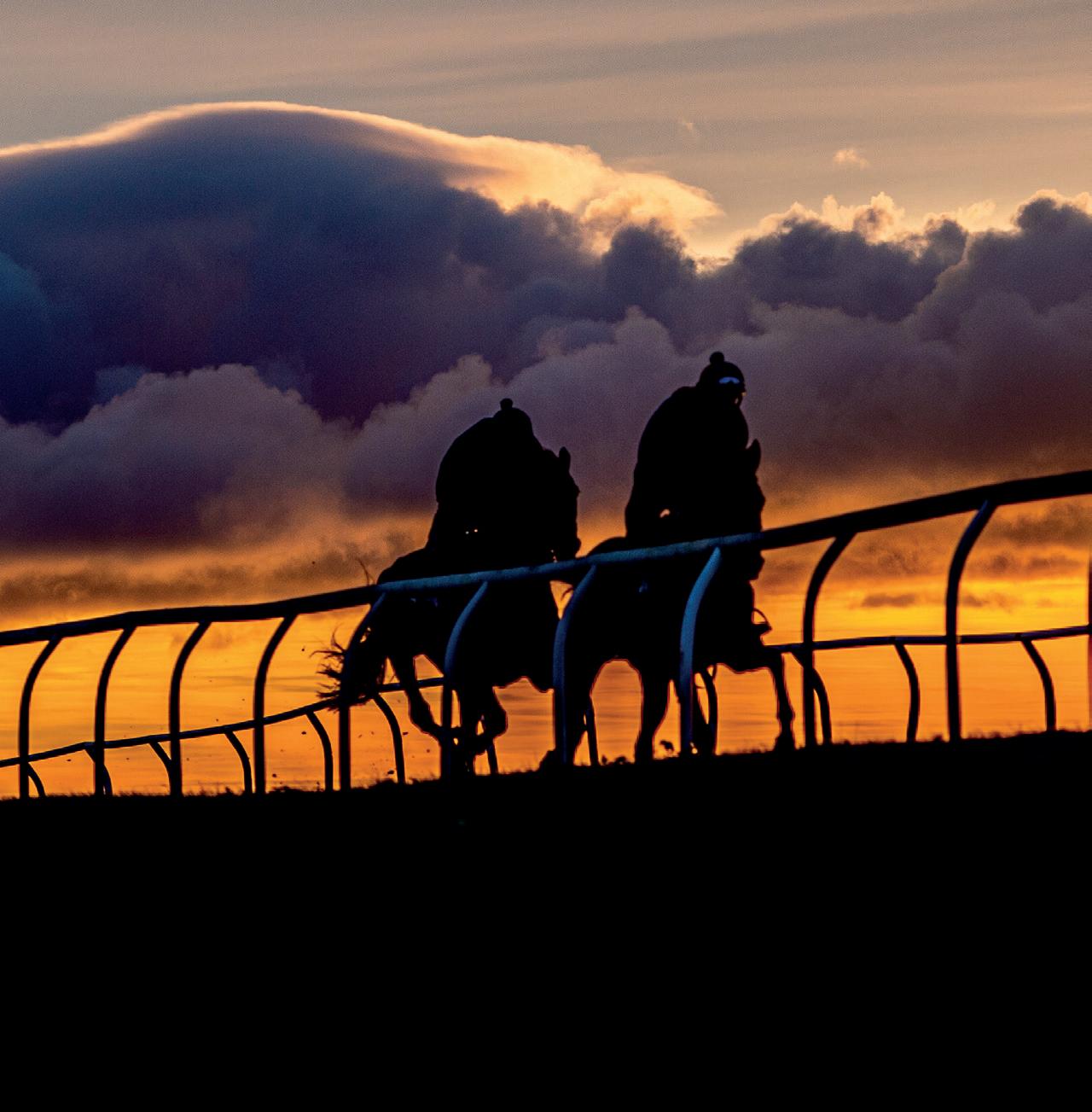

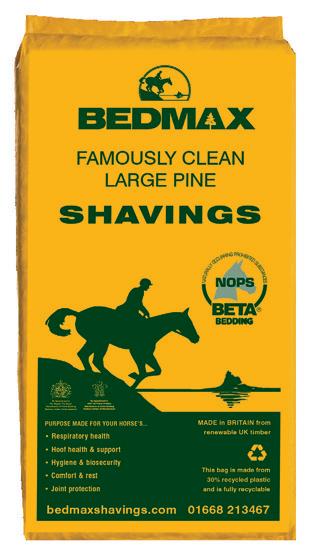

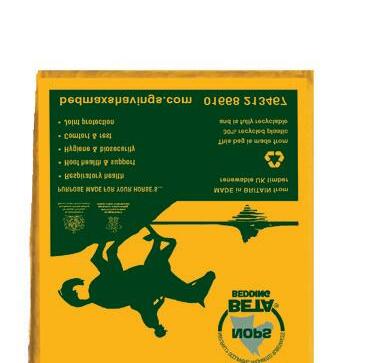
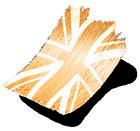
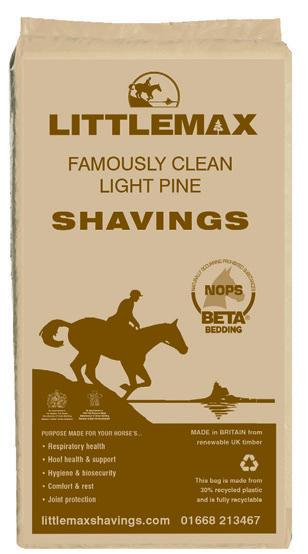

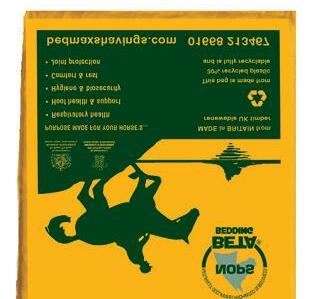
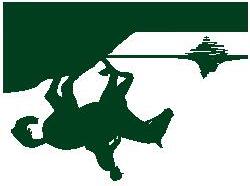
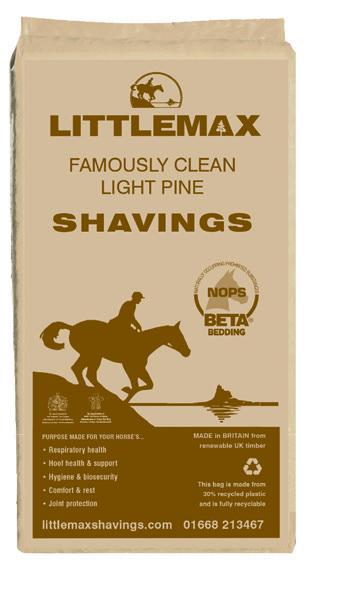
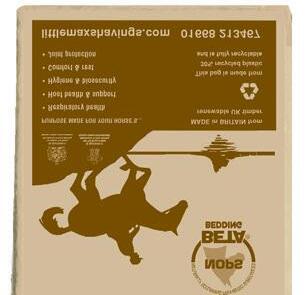


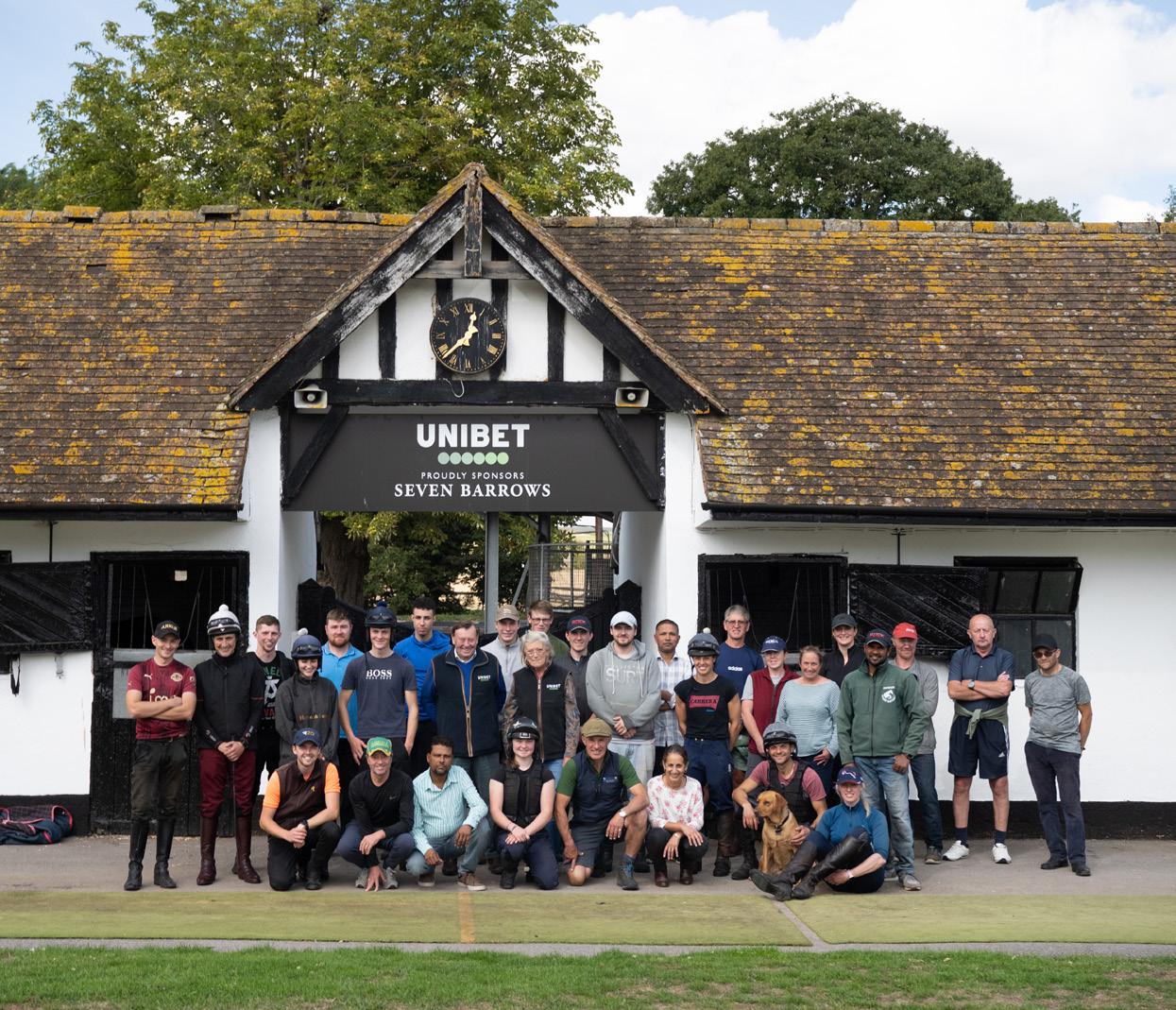
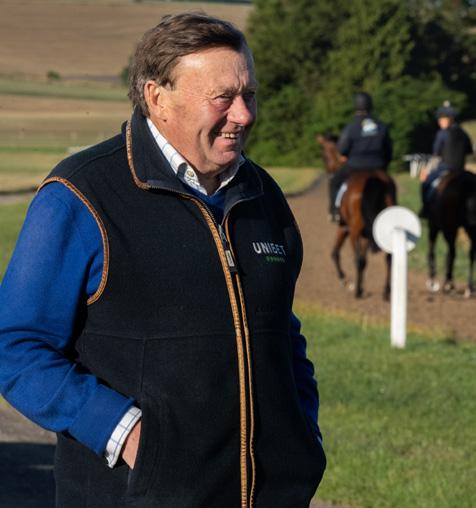
Despite his insistence on his antiquity, Henderson is not immune to the proliferation of technology that has swept through the racing industry in the past decade. “It’s got its advantages,” he admits. “We use heart rate monitors. There is blood testing and scoping, all the modern technology. It filters through.” But there are limits to his embrace of technology: “It’s not like I’m still going to school like these guys are, or have been over to Australia and America to learn all the new technology they have over there that you can bring to this country. We’ll pick it up somewhere along the line,” he says. Henderson has also revealed an unexpected gift for social media. (“I hate it,” he says.) And yet few among us will ever look at a photo of a printed page of Calibri the same way again.
In the course of researching this profile I managed to turn up a news report from 1979 (written by one Brough Scott) that describes Henderson’s training as showing “a mastery and skill beyond his years.” It is submitted that, more than four decades later, the reverse is true: the septuagenarian Henderson trains with an energy and enthusiasm that belies his age. As Henderson looks ahead to yet another National Hunt season – his 47th – there is one prize that eludes him: the (English) Grand National. “We’ve won all the Champion Chases and Champion Hurdles and Gold Cups, a couple of King Georges. I think most of them have got ticks by them,” he says. “But a Grand National is the obvious thing [that’s missing].

Fallen Angel winning the Group 1 Matron Stakes at Leopardstown. Congratulations to trainer Karl Burke, owners Wathnan Racing and all connections involved.

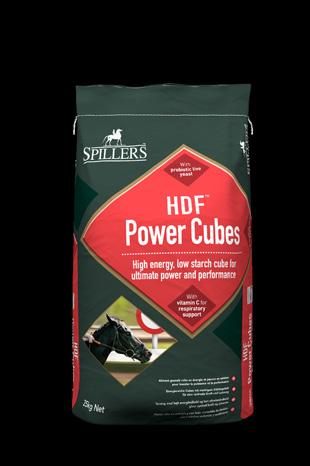
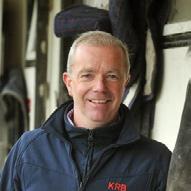

“Since
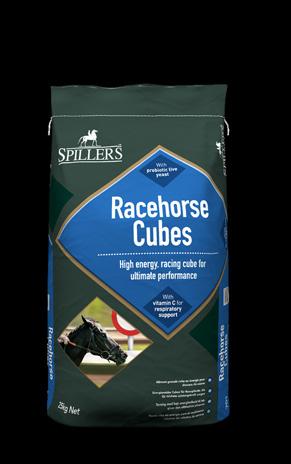
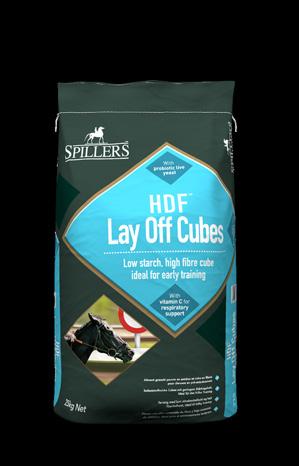


- Karl Burke


“Embarrassingly, there are no Grand Nationals [in his trophy cabinet] whatsoever. Except for the American, which I really can’t count because it’s a two-and-a-halfmile hurdle race.” The obvious candidate to capture Henderson’s white whale is Hyland. “He ran in it last year and I think he would have probably grown up from the experience. And I would think it’s probably on his agenda this season.” One can’t help but hope that Henderson will get to see a Seven Barrows runner crossing the winning post in first place at Aintree, even if he has to watch it on TV. “One thing I don’t see particularly well is on a racecourse. I can’t see even with binoculars,” he says.
With Henderson’s eyesight failing it’s tempting to think of Ludwig van Beethoven, who produced arguably his greatest works when completely deaf. Even as he rages against the dying of the light, Henderson has no intention of calling time on his training career. “I’m first to admit it, I’ve been very, very lucky. But we’ve done our best to make the most of it, and it’s been fun. And it’s still fun. And I intend to go on having fun.”
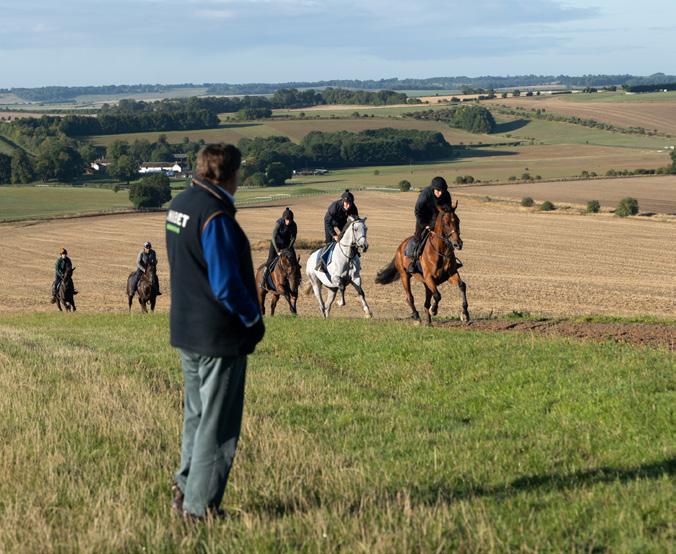
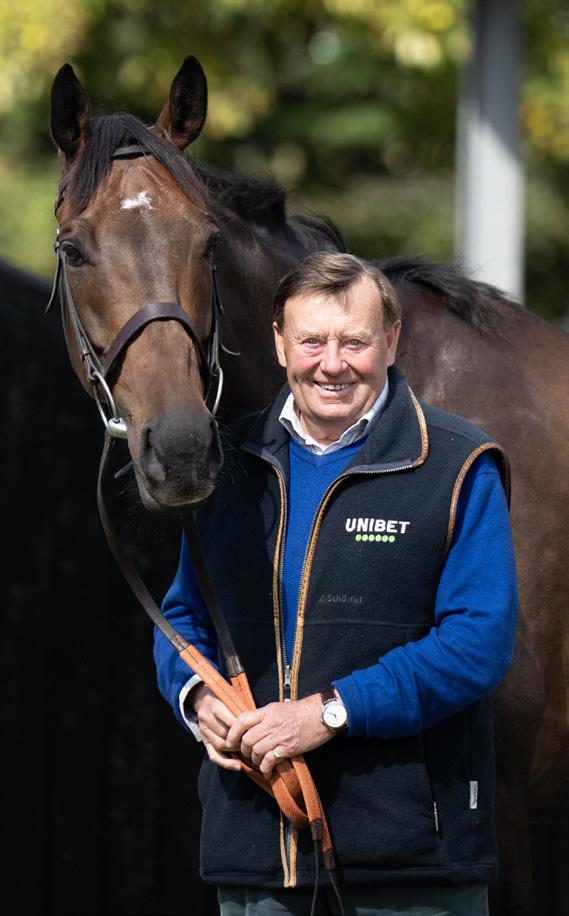

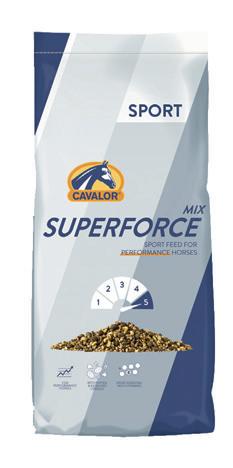



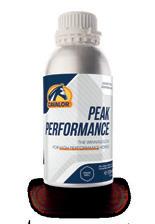
“The horses seem to find the products palatable and since using the brand from the start of 2024, we had a record-breaking season.
After kicking off 2025 well and adding a first international winner to the CV we couldn’t recommend Cavalor’s products enough and will continue to use them.”
Tom Clover Racehorse trainer
Introduction
We all know that winning races depends on far more than what happens on the day at the track. The health, fitness, and mentality of a racehorse are built long before race day. Increasingly, science tells us that one of the most powerful drivers of performance is hidden inside the horse: the gut. Understanding this hidden half of the body is key to understanding health and disease.
Gut health is central not only to digestion but also to energy supply, recovery, immunity, behaviour, and resilience against disease (O’Brien et al ., 2022). When the gut is compromised, the impact is felt in poor performance, poor recovery, and increased veterinary bills. On the other hand, when the gut is healthy, horses can perform at their best more consistently.
In this article, we explore the role of gut health in racehorse performance, the risks posed by modern feeding practices, and the latest published research including recent field trials carried out on a novel gut supplement containing pre-biotics, digestible fibres, B-vitamins and postbiotics to show how trainers can give their horses a competitive edge (O’Connor and Mulligan, 2024).

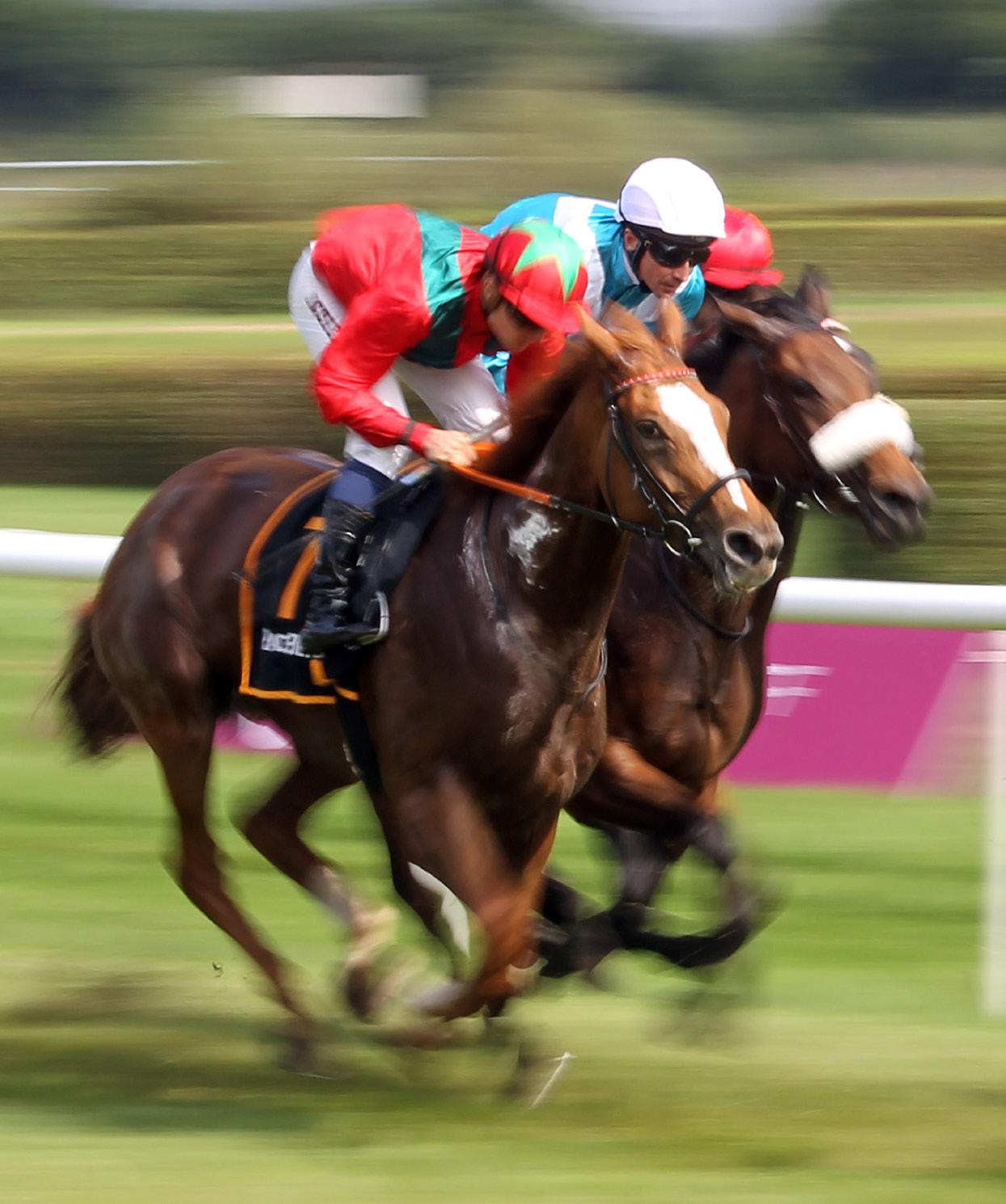

Unlike us, horses can digest fibre. Up to 70% of a racehorse’s energy can come from the fermentation of fibre in the hindgut, where microbes break it down into volatile fatty acids that fuel endurance and sustained performance. A healthy hindgut microbiome also contributes to the synthesis of B-vitamins (vital for energy metabolism and red blood cell production), it supports immune function and plays a role in hormone balance and even a horse’s behaviour (Kauter et al., 2019). Although we are only beginning to understand the many functions of the horse’s microbiome, we do know how to fuel it with a diversified, fibre-based diet (Raspa et al., 2024).
Recent research highlights how much gut health influences a horse’s career. The Well Foal Study at the University of Surrey followed thoroughbred foals from birth to three years of age and found that those with more diverse gut microbiota early in life experienced fewer illnesses and went on to have more successful racing careers (Leng et al., 2024). This connection between gut diversity, health, and future performance directly shows the importance of looking after gut health from the very start of a racehorse’s life (Fig. 1).
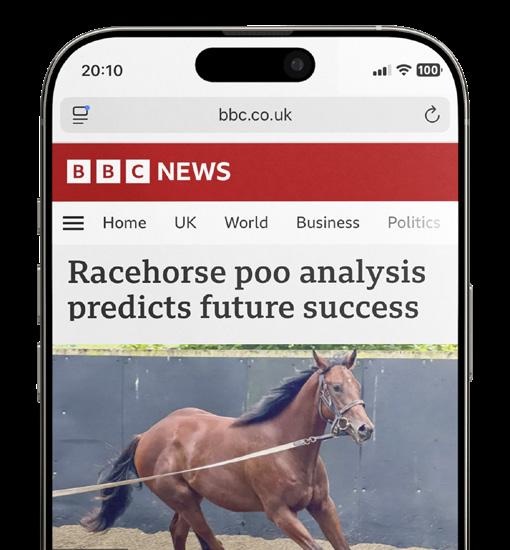
For trainers, the practical implication is clear: a horse’s ability to perform at its peak depends on the stability and balance of its gut microbiome. A compromised gut means reduced energy extraction, more risk of conditions like colic and laminitis, and behavioural changes such as nervousness or lack of focus (Boucher et al., 2024).
The natural diet of the horse is based on grazing and high-fibre forages. Modern training, however, demands higher energy intake than forage alone can provide. This has led to the widespread use of cereals and high-starch concentrates. While effective at delivering energy quickly, they also pose risks when fed in large amounts.
Studies show that feeding more than 2.5–5kg of cereal per day increases the risk of colic nearly fivefold. Horses fed more than 2.7kg of oats daily were almost six times more likely to colic (Tinker et al., 1997; Hudson et al., 2001). These figures are illustrated in Fig. 2 below.
2.5 – 5 kg of cereal per day = 4.8 x colic risk
>5 kg of cereal per day = 6.3 x colic risk
2.7 kg of oats per day = 5.9 x colic risk
Fig. 2: Concentrate amount versus colic risk.
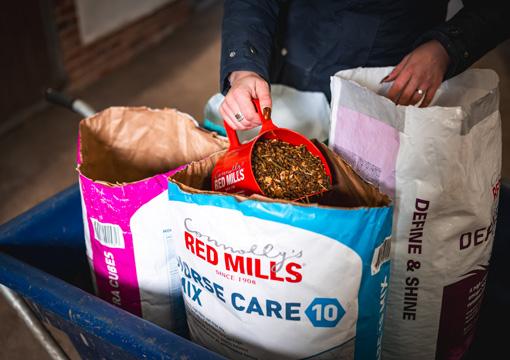

We had one horse who was underweight and looked very dull in his coat. I was struggling to get the work in to him so I could then run him. Clinical tests all came back fine so we changed his feed and added in NUTRI-GARD. The change in the horse was extraordinary, gained condition, top line and even in depth of winter had a shine to his coat. The horse went on to win two competitive races. I could not recommend NUTRI-GARD more.
PAUL NICHOLLS
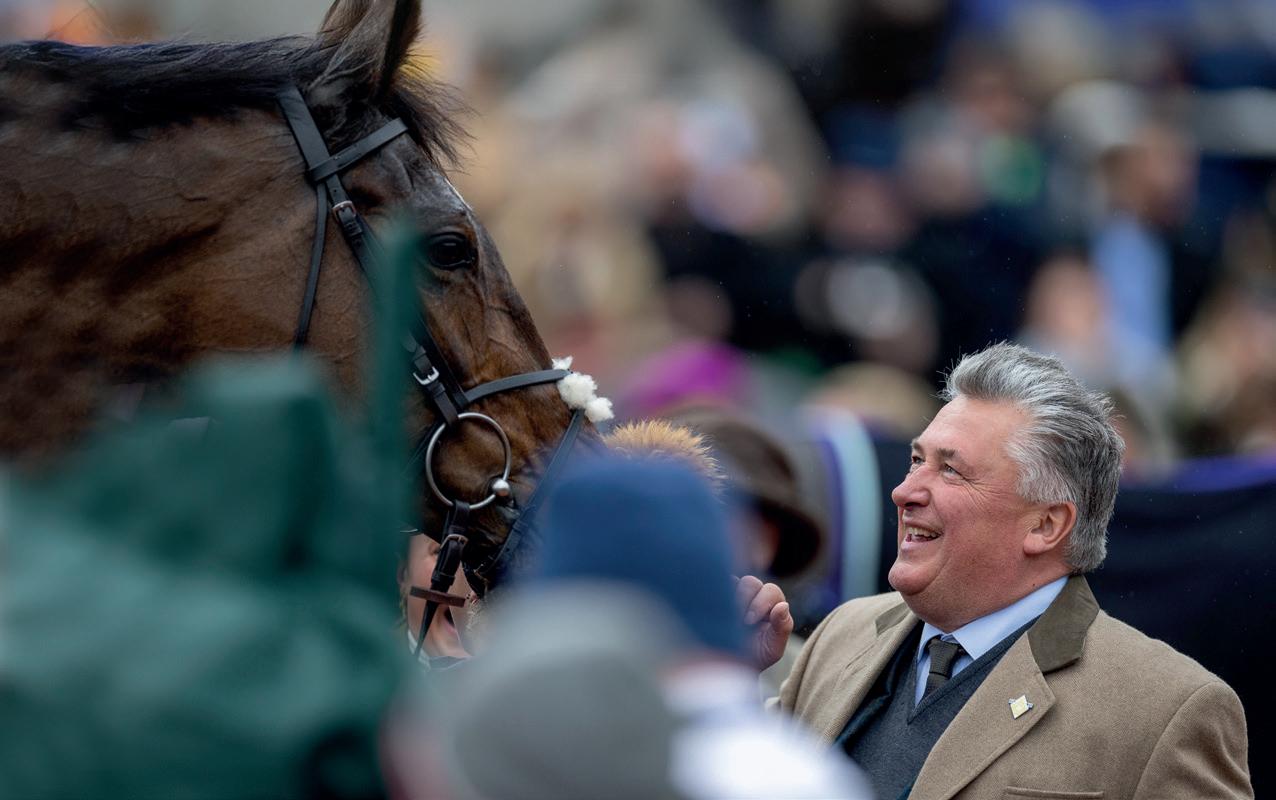

Scientifically advanced gut supplement formulated to support stomach and hindgut health and maintain overall digestive function.
Postbiotics to promote optimal gut and immune health
Prebiotics to support a healthy hindgut microbiome
Added B-vitamins to promote appetite and optimise feed utilisation
Pectin helps to buffer stomach acid
Formulated with amino acids, L-threonine and DL-methionine to support a healthy lining in the digestive tract
Contains oat fibres, naturally rich in beta-glucans
FOR Digestive health

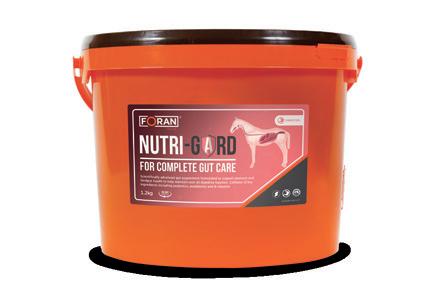
UK: Adam Johnson T: +44 7860 771063 IRE: Nicole Groyer +353 83 477 3873 Email: info@foranequine.com
Similarly, research on equine gastric ulcer syndrome (EGUS) shows that feeding more than 2g of starch per kilogram of bodyweight per meal raises the risk of squamous ulcers by over threefold (Luthersson et al., 2009). This is illustrated in terms of scoops in Fig. 3 below (based on average starch levels in a racehorse cube or muesli).
For a 500kg horse, per meal maximum amount in Stubbs scoops, would be the equivalent of:
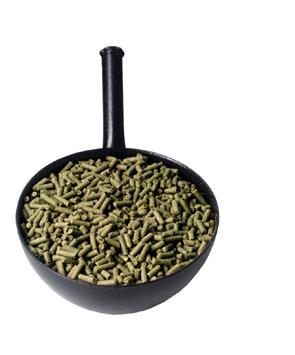
1 X 1.5
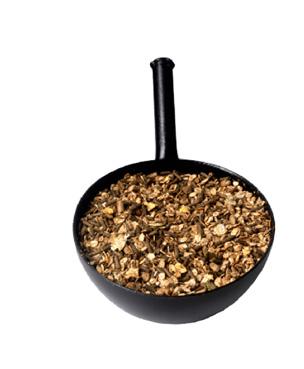
Fig.3: Safe starch volume per meal based on average starch content of compound racehorse feeds.
Why? Because the horse’s digestive anatomy is poorly adapted to digest large starch meals. Horses produce no amylase in their saliva, and their stomach and small intestine, the sites of starch digestion, are relatively small. When there is an overload of cereal, the starch bypasses these sections and enters the hindgut, where it disrupts microbial fermentation (Julliand & Grimm, 2017). The result is increased acidity, microbial imbalance (dysbiosis), and a cascade of problems ranging from ulcers and colic to poor recovery and unpredictable behaviour (Bulmer et al., 2019).
On top of diet, the stresses of a modern racehorse’s life: transport, intense training, and routine veterinary interventions put further pressure on the microbiome. Each of these factors can disrupt gut balance, setting the stage for both health issues and reduced performance (Mach et al., 2020).

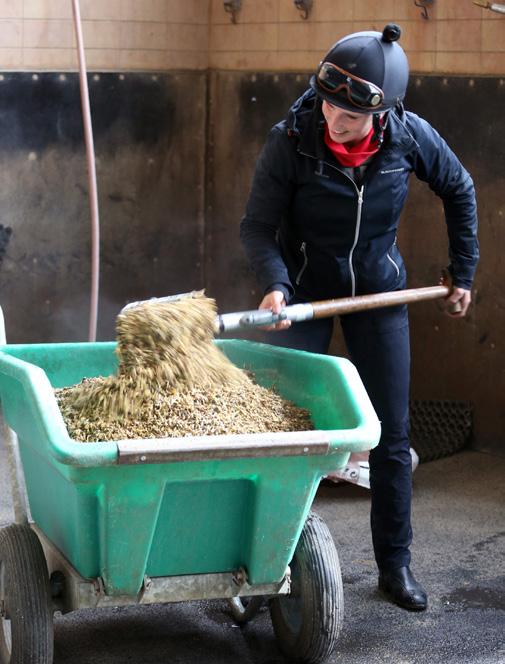
Despite these risks, trainers have good tools to support gut health. The first step is to respect the horse’s natural digestive design:
• Forage first: Provide ad lib hay or haylage where possible to keep the digestive system functioning as nature intended. Offering at least a small bit of hay before the morning hard feed has recently been shown to slow gastric emptying meaning a slower, steadier arrival of grain to the gut to allow for better digestion (Jensen et al ., 2025). This small amount of hay can create a fibrous mat in the stomach that acts as a buffer against gastric acid. This reduces the risk of acid splash onto the more sensitive squamous region of the stomach lining, thereby helping to protect against ulceration.
• Small, frequent meals: Avoid overloading the stomach and small intestine with large concentrate feeds. Horses are trickle feeders, designed to eat little and often.
• Controlled starch intake: Keep starch levels per meal controlled as described in Fig. 2 to not overwhelm the digestive capacity of the gut.
• Consistency: Avoid sudden changes in feed or forage sources, which can disrupt microbial populations. The horse’s digestive system needs a time period of at least 10-14 days to adjust to a change in their diet.
Beyond feeding management, nutritional science has delivered additional aids. These should only be considered once the main dietary and forage management is in order.
• Prebiotics: Specific fibres that serve as food for beneficial microbes and help support microbial balance.
• Probiotics: Such as Saccharomyces cerevisiae (a yeast proven to improve fibre digestion), or Saccharomyces boulardii can stabilise the hindgut in horses on high-starch diets.
• Postbiotics: More recently, attention has turned to these beneficial compounds produced during fermentation, which can positively influence gut function and whole-body health.

TARGETED AT
Æ Digestive upsets or hind gut acidity
Æ Those with loose droppings
Æ Those that have been on antibiotics
Æ Travelling or competing horses
Æ Sick horses or those on box rest
Æ Those receiving low amounts of fibre
Æ Scouring foals (consult your vet)
Æ Underweight horses
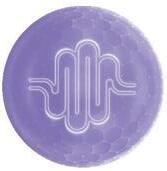

A unique support package (prebiotics, probiotics and postbiotics) for the horse’s microbiome to help promote optimum gut health

Recent field research involving thoroughbreds in training has provided new evidence on how targeted nutritional support can shape the gut environment. A novel gut supplement, a nutritional combination containing prebiotics, digestible fibres, B-vitamins, and a fermented yeast postbiotic was trialled on 34 thoroughbreds in training over an eight-week period. The horses in the trial receiving this supplement showed a significant reduction in faecal pH compared to the control group as shown in Fig. 4, indicating a healthier, more stable hindgut environment (O’Connor and Mulligan, 2024).
Why does this matter? Faecal pH has been shown as a practical measure for assessing the condition of the rest of the hindgut (Costa et al , 2015). High acidity (low pH) in the hindgut signals excess starch fermentation and an increased risk of acidosis, colic, and poor nutrient absorption. By reducing faecal pH, the supplement supported a more balanced microbial population and more efficient fibre digestion.
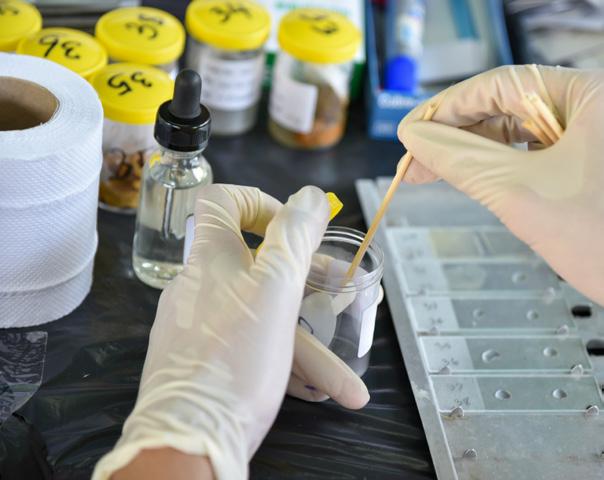
For trainers, the benefits of a more stable hindgut:
• Consistent energy supply: Better fibre fermentation means a more reliable source of slow-release energy, supporting stamina.
• Reduced digestive upset: Lower risk of colic, acidosis, loose droppings, etc.
• Improved recovery: A healthier gut environment supports nutrient absorption and immune resilience.
• Mental focus: Balanced microbiota have been linked to calmer behaviour and reduced stress responses.
This research positions postbiotics as a promising new tool in equine nutrition. While probiotics deliver live organisms and prebiotics provide fuel for the microbiome, postbiotics are the beneficial by-products themselves. They can modulate inflammation, support immunity, and stabilise the gut environment without the storage and survival challenges associated with live probiotics (Valigura et al., 2021).
While supplements are valuable, they are only one small piece of the horse’s diet. Trainers should consider gut health as a wholeyard management issue. Consistency of forage supply is key. Sudden changes in hay or haylage batches can disrupt microbial populations. Hydration must be monitored closely, as dehydration increases the risk of impaction colic. Stress management, from minimising unnecessary transport to keeping consistent training plans and providing adequate turnout or downtime, also play key roles in keeping the gut stable.
Veterinary practices should also be considered. Antibiotics, while sometimes necessary, are known to disrupt the gut microbiome for months after use. Avoiding unnecessary antibiotic use and working with vets to target treatments carefully will help protect long-term gut health and performance. The gut microbiome is made up of thousands of bacteria and other microbes that can be destroyed by an antibiotic course and may take months to recover. Antibiotics should only be used when truly necessary. When they are required, ensure the horse is on a high-quality, fibre-rich diet to help keep the gut supported during this stressful period (Collinet et al., 2021).


DID YOU KNOW?
A horse cannot consistently perform to the best of its ability with a gut flora imbalance. ProSol is a unique probiotic solution tailored to each horse, containing live beneficial bacteria harvested from the horse’s own faecal sample, which helps to restore gut flora PLUS the IEC has a bacterial cryopreservation service to preserve these bacteria for the horse’s lifetime –providing a safety net for your horses’ lifetime.
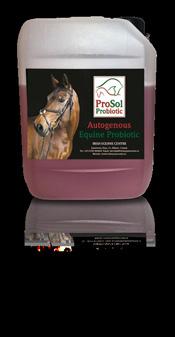
Using ProSol ensures your horses gut flora is healthy thereby helping to increase immunity, prevent disease & ensure consistent performance.

I have been using the ProSol probiotic service for some time and I appreciate its innovative concept and the fact that it’s a natural product.
It has become an important tool for training my racehorses and maintaining their wellbeing.
ProSol contains only the horse’s own beneficial bacteria suspended in sterile water.
Contact the Irish Equine Centre to talk to our experienced microbiologists who will formulate the probiotic unique to your horse.
IRISH EQUINE CENTRE, Johnstown, Naas, County Kildare, Ireland +353 (0)45 866 266 • microlab@irishequinecentre.ie • www.irishequinecentre.ie


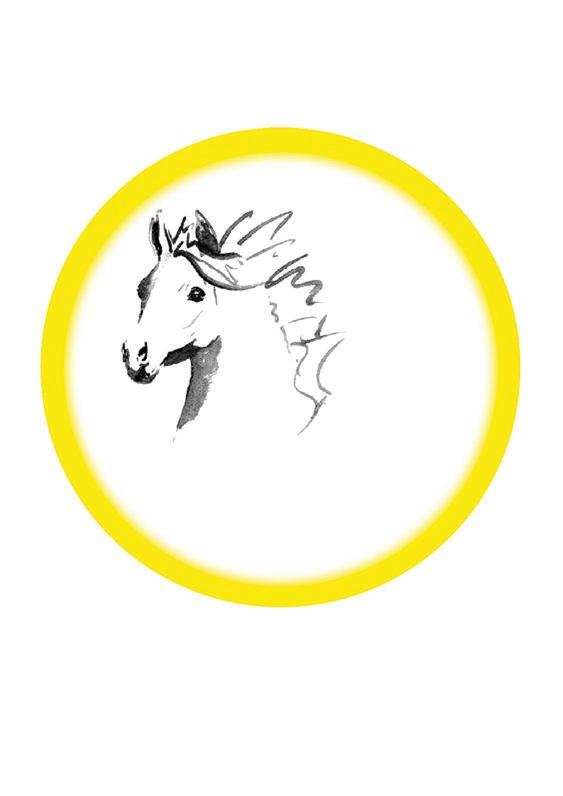

Equine microbiome research is still in its early stages, but the message is already clear, gut health is tightly connected to race performance. Trainers who prioritise digestive stability through smart feeding, careful management, and targeted nutritional support will not only reduce veterinary costs but also gain a competitive advantage on the track.
The next generation of supplements, including those using postbiotic technology, offers exciting potential to further support racehorses in training. By nurturing a healthier hindgut environment, these tools can help horses get more from their feed, recover faster, and maintain focus under the pressures of racing.
The race truly does start in the gut. By trusting and supporting that hidden engine, trainers can help their horses reach the finish line stronger, healthier, and more consistent than ever.
The gut microbiome of a foal as early as one month old plays a key role in shaping its future health and performance. The foal begins its colonisation through contact with the microbiota of the mare’s vaginal and skin surfaces and its surrounding environments. Its gut microbiome reaches a relatively stable population by approximately 60 days in age. For this reason, sourcing well-reared, high-quality stock is essential to give young horses the best start. A healthy microbiome should be supported throughout the racehorse’s career to give him the best chance of success.
For hundreds of years, the thoroughbred industry has focused on genetics, breeding from elite bloodlines to produce the fastest, strongest, and most resilient horses. Emerging research, however, suggests another layer of inheritance that may have been overlooked. A foal acquires much of its gut microbiota from its dam, meaning these microbes could prove just as influential as pedigree in determining future health and performance.
References:
• Boucher, L., Leduc, L., Leclère, M. & Costa, M.C. (2024) ‘Current understanding of equine gut dysbiosis and microbiota manipulation techniques: comparison with current knowledge in other species’, Animals (Basel), 14(5), p.758. doi:10.3390/ani14050758.
• Bulmer, L.S., Murray, J.A., Burns, N.M. et al. (2019) ‘High-starch diets alter equine faecal microbiota and increase behavioural reactivity’, Scientific Reports, 9(1), p.18621. doi:10.1038/s41598-019-54039-8.
• Collinet, A., Grimm, P., Julliand, S. & Julliand, V. (2021) ‘Sequential modulation of the equine fecal microbiota and fibrolytic capacity following two consecutive abrupt dietary changes and bacterial supplementation’, Animals (Basel), 11(5), p.1278. doi:10.3390/ani11051278.
• Costa, M.C., Silva, G., Ramos, R.V. et al. (2015) ‘Characterization and comparison of the bacterial microbiota in different gastrointestinal tract compartments in horses’, Veterinary Journal, 205(1), pp.74–80. doi:10.1016/j.tvjl.2015.03.018.
• Hudson, J.M., Cohen, N.D., Gibbs, P.G. & Thompson, J.A. (2001) ‘Feeding practices associated with colic in horses’, Journal of the American Veterinary Medical Association, 219(10), pp.1419–1425. doi:10.2460/ javma.2001.219.1419.
• Jensen RB, Walslag IH, Marcussen C, Thorringer NW, Junghans P, Nyquist NF. The effect of feeding order of forage and oats on metabolic and digestive responses related to gastric emptying in horses. Journal of Animal Science. 103:skae368. doi: 10.1093/jas/skae368. PMID: 39656737; PMCID: PMC11747703.
• Julliand, V. & Grimm, P. (2017) ‘The impact of diet on the hindgut microbiome’, Journal of Equine Veterinary Science, 52, pp.23–28. doi:10.1016/j.jevs.2017.03.002.
• Kauter, A., Epping, L., Semmler, T. et al. (2019) ‘The gut microbiome of horses: current research on equine enteral microbiota and future perspectives’, Animal Microbiome, 1(1), p.14. doi:10.1186/s42523-019-0013-3.

The gut microbiome of a foal as early as one month old plays a key role in shaping its future health and performance.
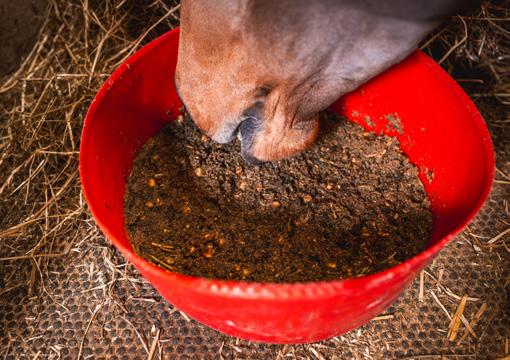
• Leng, J., Moller-Levet, C., Mansergh, R.I. et al. (2024) ‘Early-life gut bacterial community structure predicts disease risk and athletic performance in horses bred for racing’, Scientific Reports, 14(1), p.17124. doi:10.1038/ s41598-024-64657-6.
• Luthersson, N., Nielsen, K.H., Harris, P. & Parkin, T.D. (2009) ‘Risk factors associated with equine gastric ulceration syndrome (EGUS) in 201 horses in Denmark’, Equine Veterinary Journal, 41(7), pp.625–630. doi:10.2746/042516409x441929.
• Mach, N., Ruet, A., Clark, A. et al. (2020) ‘Priming for welfare: gut microbiota is associated with equitation conditions and behavior in horse athletes’, Scientific Reports, 10(1), p.8311. doi:10.1038/s41598-020-65444-9.
• O’Brien, M.T., O’Sullivan, O., Claesson, M.J. & Cotter, P.D. (2022) ‘The athlete gut microbiome and its relevance to health and performance: a review’, Sports Medicine, 52(Suppl 1), pp.119–128. doi:10.1007/s40279-022-01785-x.
• O’Connor, S. & Mulligan, F. (2024) ‘A field study of a novel nutritional combination containing prebiotics, digestible fibres, B-vitamins, and postbiotics’ effects on equine gut acidity’, presented at the 28th Congress of the European Society of Veterinary and Comparative Nutrition, Dublin, 9–10 Sept.
• Raspa, F., Vervuert, I., Capucchio, M.T. et al. A high-starch vs. high-fibre diet: effects on the gut environment of the different intestinal compartments of the horse digestive tract. BMC Veterinary Research 18, 187 (2022). www. doi.org/10.1186/s12917-022-03289-2
• Tinker, M.K., White, N.A., Lessard, P. et al. (1997) ‘Prospective study of equine colic risk factors’, Equine Veterinary Journal, 29(6), pp.454–458. doi:10.1111/j.2042-3306.1997.tb03158.x.
• Valigura, H.C., Leatherwood, J.L., Martinez, R.E., Norton, S.A. & WhiteSpringer, S.H. (2021) ‘Dietary supplementation of a Saccharomyces cerevisiae fermentation product attenuates exercise-induced stress markers in young horses’, Journal of Animal Science, 99(8), skab199. doi:10.1093/jas/skab199.

There is no doubt that training and racing place stress on the horse’s digestive system and mitigating that stress is key if horses are to perform at their best. Poor health means lost training time which ultimately impacts race performance and so it’s in everyone’s interest to feed sympathetically.
Often undervalued as an energy source, fibre can actually provide a significant amount of energy for the working horse and recent studies have shown that high fibre diets are not a barrier to performance. Research has shown that horses in training fed a combination of chopped and pelleted alfalfa at 80% of the bucket feed with just 20% oats performed just as well as those fed cereals alone, demonstrating that high levels of cereals are not required to support high intensity exercise (Martin et al., 2021).
A high fibre feed can provide plenty of energy especially when combined with other energy dense ingredients such as oil. These types of feed provide czomparable energy levels to a traditional racehorse mix or cube but with up to 10 times less starch making them particularly useful for those prone to ulcers.
Studies have shown that performance horses can utilise fibre as an energy source – the key is ensuring there is sufficient, high quality fibre in the ration for the horse to make use of. The amount of energy supplied depends on the digestibility of the fibre source which is influenced by plant type, environmental conditions and the plant’s maturity at the time of harvest. The more mature a plant, the less digestible it will be and therefore the less energy it will provide, so choosing an early cut forage is usually a good place to start when it comes to feeding the performance horse.
When it comes to choosing a suitable fibre feed to go in the bucket, the type used is important to consider. Some so-called performance products contain straw which is sun-dried and contains many more mould spores – not something we would suggest is ideal for maximising respiratory health for horses in higher levels of work.
Alfalfa, grass and sugar beet are examples of feedstuffs that contain highly digestible fibre and so are much better suited to the performance horse. Alfalfa and grass in the Dengie range are precision dried making them very clean sources of fibre – studies have shown alfalfa pellets were better than steamed hay for horses with respiratory health issues.
Super-fit performance horses can have reduced appetites and in these situations, a pelleted fibre feed is a way of continuing with a high fibre ration in a more concentrated volume of feed. Whilst some chopped fibre is still good for encouraging chew time, it can be mixed with feeds like alfalfa pellets to reduce the amount of feed the horse needs to eat.
Feeding sympathetically is key to your horse’s health and therefore performance. Our team of nutritionists can help you to maximise your horse’s potential.
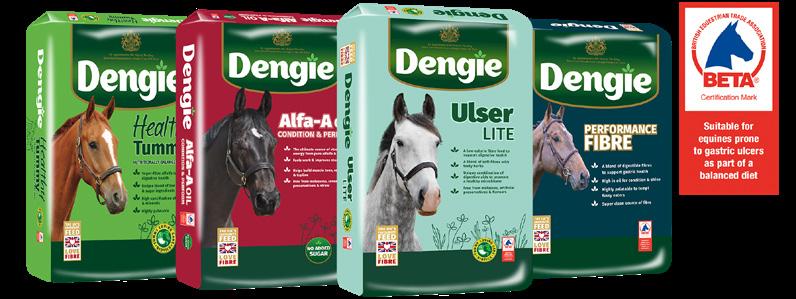

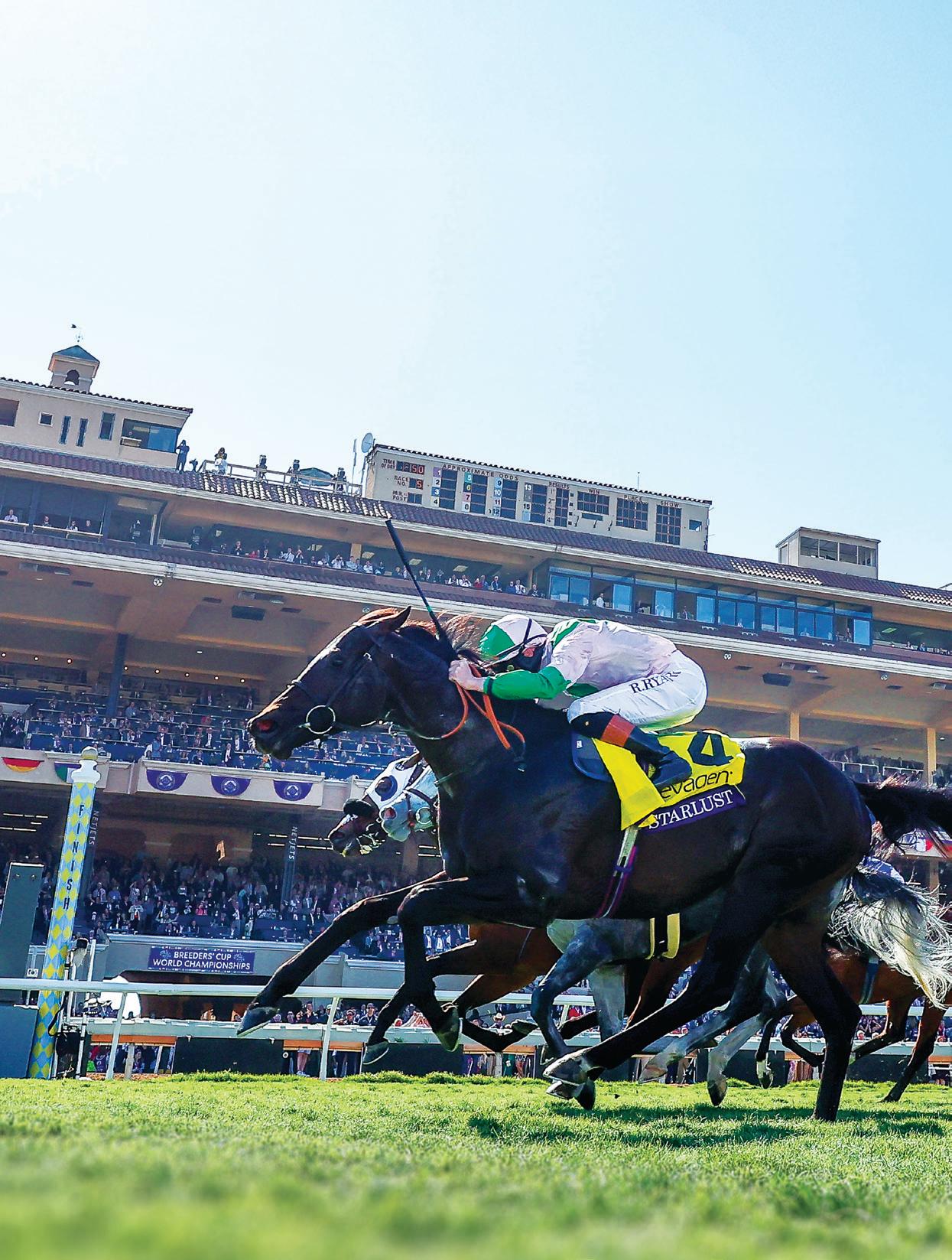


The 42nd running of the Breeders’ Cup World Championships will be held for a fourth time in Del Mar, California on Friday 31st October and Saturday 1st November. Consisting of 14 Grade 1 races with purses and awards totalling more than $34m (€29m/£25m).
Each race pays prize money through to tenth position. Each international starter receives a travel award of $40k for horses shipping directly from their home country to California.
The “win and you’re in” series consists of 69 of the best races from around the world, from June to October, awarding each winner an automatic and free entry into the Breeders’ Cup World Championships.
Pre-entries open online from October 1st (via members.breederscup.com) and close at noon (pacific time) on Monday 20th October. All races are noninvitational and open to all thoroughbreds.
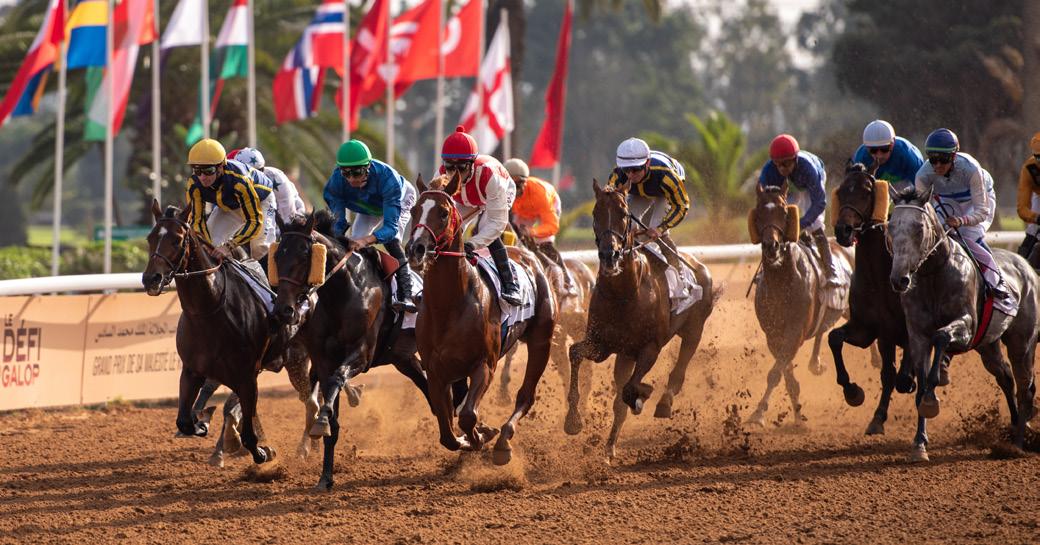

With an emphasis on quality Purebred Arabian racing, the international races staged in Morocco during November for thoroughbreds can easily slip under the radar, but the prize money available is attractive.
The 2400m (12f) Grand Prix de Sa Majesté Le Roi Mohammed VI – Défi Du Galop for three-year-olds and up tops the purses at €133,000 (£116,000), while the Grand Prix des Eleveurs for threeyear-old fillies, run over 1750m (9f) carries €71,600 (£62,500). Entry fees are €650 (£567) and €350 (£305) respectively.
The 1900m (10f) Grand Prix des Proprietaires for three-yearold colts is worth €61,500 (£53,600), entry fee €300 (£262) and there is also a 1750m (9f) race for juveniles offering €28,500 (£25,000), the Prix Jean-Pierre Laforest.
The incentives to owners and trainers are also attractive, with flights paid for by SOREC for the owner plus one, trainer plus one and the jockey. Hotel accommodation is also provided by SOREC at the official hotel and transport to and from the racecourse and training centre. Grooms stay at the Bouskoura Training Centre in La Cité du Cheval, where the horses will stay. A transport subsidy is awarded to participating horses that come overland, Spain €2,000, France €2,500 and UK and Ireland €3,000 (£2,600).
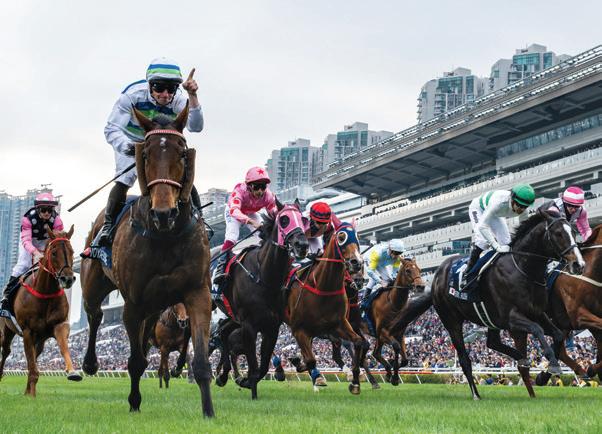
For the temporary admission of horses, all horses must have a veterinary health certificate validated by the official veterinary service, and originals of test reports from the laboratory.
For most European countries, with which SOREC has sanitary agreements, there are two analysis that are requested, the test of Equine Infectious Anemia (Coggins test within 30 days of loading) and the test of Equine Viral Arteritis at the intervals indicated, within 21 days (Spain) or 28 days (France) of loading (Serum neutralisation test). For horses regularly vaccinated against this disease, a second test within a minimum 14 days is required. Horses must be properly vaccinated against Equine Influenza and Equine Viral Rhinopneumonitis.

With the addition of public holidays, racing takes place throughout the winter twice a week, with meetings at Happy Valley on most Wednesdays and at Sha Tin mostly on Sundays. All 31 Group Races are open to international horses. The highlight is the Hong Kong International Day 14th December at Sha Tin, with four Gp.1 races, the €4.4m (£3.8m) Hong Kong Cup 2000m (10f), the €3.9m (£3.5m) Hong Kong Mile 1600m (8f), €3m (£2.7m) Hong Kong Sprint 1200m (6f) and €2.9m (£2.5m) Hong Kong Vase 2400m (12f). Champions Day is held at Sha Tin 26th April 2026, with three Gp.1 races, the €3.3m (£2.9m) QEII Cup 2000m (10f), the €2.6m (£2.3m) Champions Mile 1600m (8f) and the €2.6m (£2.3m) Chairman’s Sprint Prize 1200m (6f).
Connections of selected overseas horses for Hong Kong’s seven feature Group 1 races, Longines Hong Kong Cup, Longines Hong Kong Mile, Longines Hong Kong Sprint, Longines Hong Kong Vase, FWD QEII Cup, FWD Champions Mile and Chairman’s Sprint Prize, will enjoy travel and accommodation packages provided by the Hong Kong Jockey Club.
Flights will be provided for the owner plus one, trainer plus one and the jockey, plus two persons per horse (groom, exercise rider, etc.) and five nights hotel accommodation for each of those listed. This also includes free transfers from the airport and transport between the official hotels and Sha Tin Racecourse for morning track work and race meetings, plus transport between the official hotels and the venues for official functions.
The Club also offers shipping incentives to selected overseas horses for the same seven feature Group 1 races, covering the costs of return transport by road from home stable to departure airport, and return air transport for each selected horse.


The Quarantine Stables are located at Sha Tin Racecourse, 45 minutes from Hong Kong International Airport. The Club strongly recommends shipping horses at least eight days before the date of the race to allow for the recovery from, and appropriate treatment of, any potential travel-related illness.
During the 90 days prior to export to Hong Kong, but not within 14 days, a horse must be administered either a primary course of approved vaccinations against Equine Influenza comprising of at least two doses with an interval of 4 to 6 weeks (or according to the terms of vaccine registration with the relevant government authority) or a booster vaccination given within 12 months of a primary course.
During the 14 days prior to export, specific disease testing is to be performed. No less than 10 days prior to a horse departing for Hong Kong, irrespective of the country in which the horse is located at the time, the trainer must submit the First Medication Declaration Form (MDF1) to the Club via the online Equine MediRecord system.
Between six days (maximum) and three days (minimum) a pre-travel veterinary inspection must be performed by a Club-approved veterinary surgeon. At the time of this inspection, the inspecting veterinary surgeon must obtain from the horse’s trainer a completed and signed copy of the Second Medications Declaration Form (MDF2), which records any additional medications administered to the horse since the submission of the First Medications
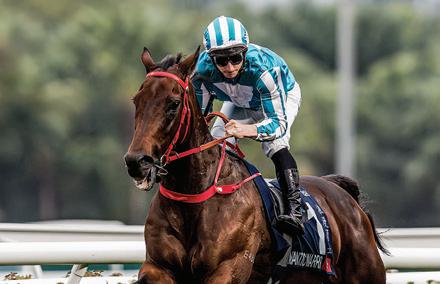
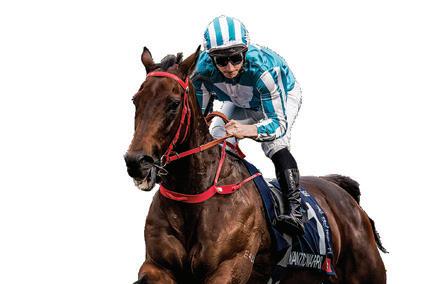


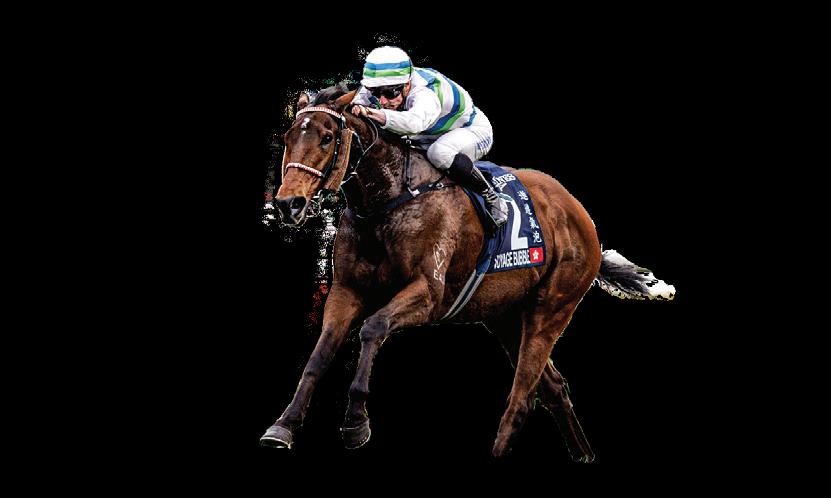


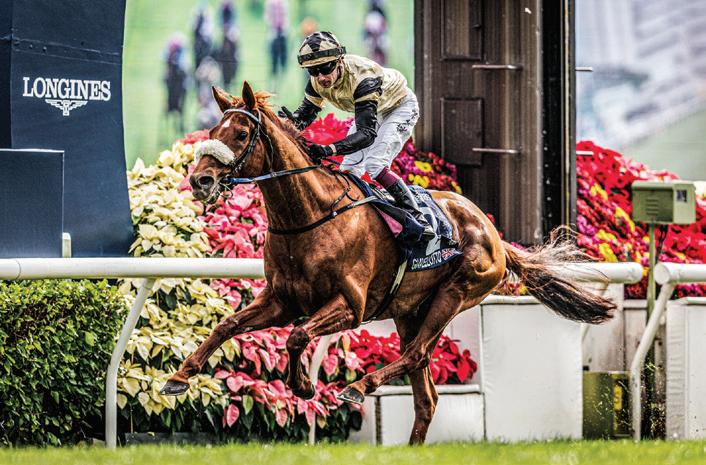
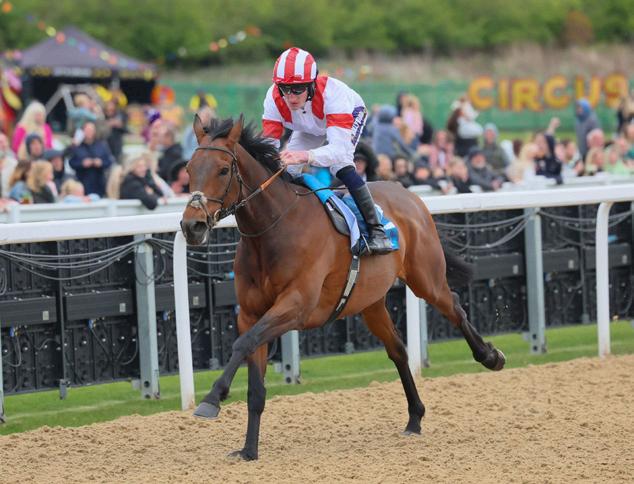

There are six Championship categories, with qualification achieved through either a minimum of three runs on the all-weather track and a high enough BHA rating, or by winning a Fast Track Qualifier.
There are also qualifiers in Ireland at Dundalk and in France at Cagnes-sur-Mer and Deauville.
Finals Day is the richest day of all-weather racing in Europe with prize money over £1m (€1.1m) and takes place at Newcastle on Good Friday, 3rd April 2026.
The Championship races comprise the Marathon over 3200m (2m) for four-year-olds up, The Fillies’ and Mares’ over 1400m (7f), the Sprint Championship over 1200m (6f) for four-year-olds up, the Three-year-old Championship over 1200m (6f), the Easter Classic over 2000m (10f) and the All-Weather Mile (1600m) for four-year-olds up.

Racing takes place fortnightly at Mons from October through to February, the highlight on 4th December being the 1500m (7.5f) Prix Open Mons worth €25,000 (£22,000), for three-year-olds and up who have not won or been placed second or third in a Group or Listed race. Prize money at each meeting ranges from €5,000 up to €8,000 (£4,000-£7,000).

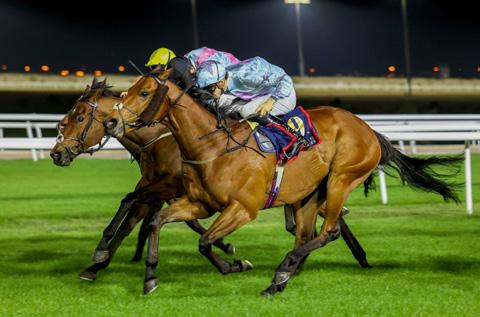

The Bahrain Turf Series is an initiative designed to attract international runners to compete in Bahrain. The series targets horses rated between 85+ to compete against domestically trained horses. For 2025/26, the Bahrain Turf Series has been expanded to comprise ten handicap races, and two condition races, now worth a total of $1m (€852,000/£743,500), with a further $80,000 available in bonuses.
The programme starts on 19th December and runs until 5th March, with the final two handicaps, each worth $100,000 (€85,100/ £74,300), run as part of the King’s Cup Festival. Additionally, the expansion of the Bahrain Turf Series last year means that all the premier races in the second half of the season fall within the dates of the international programme. This enables horses to progress from Bahrain Turf Series races to Bahrain’s premier races, such as The Crown Prince’s Cup, The Shaikh Nasser Cup, the Al Methaq Mile and The King’s Cup, along with further valuable races.
Edward Veale, Director of Racing and International Relations, tells us how important and rewarding it is to bring people to Bahrain. “The development of internationallyrecognised racing has been very rewarding and we need to continue to build our international profile in order to keep improving the quality of our racing. Significant investment has gone into the Bahrain Turf Club and the racing programme, and international competition is integral to the improvement of the domestic core of horses. For example last year, of the 18 races we promoted as international, nine were won by visiting horses and nine domestically-trained horses. It is important to maintain this balance.”
To nominate for stabling, email Max Pimlott, max@irbracing.com by Thursday 6th November.


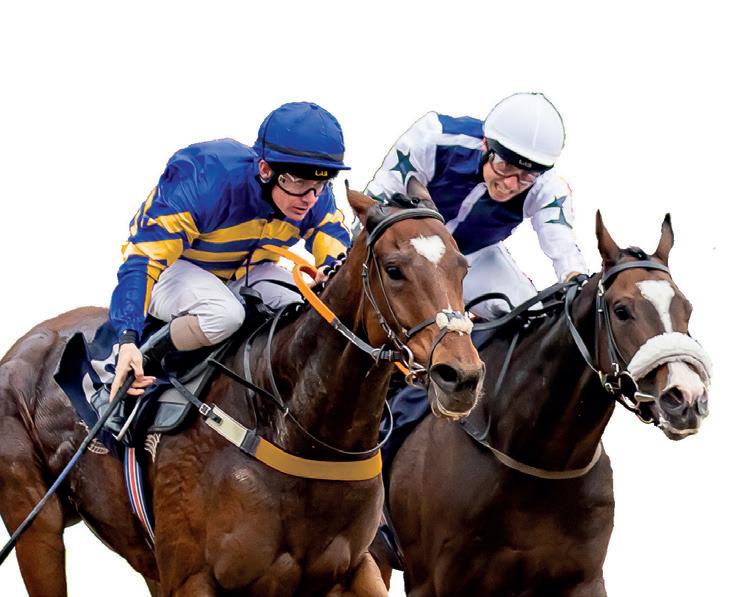
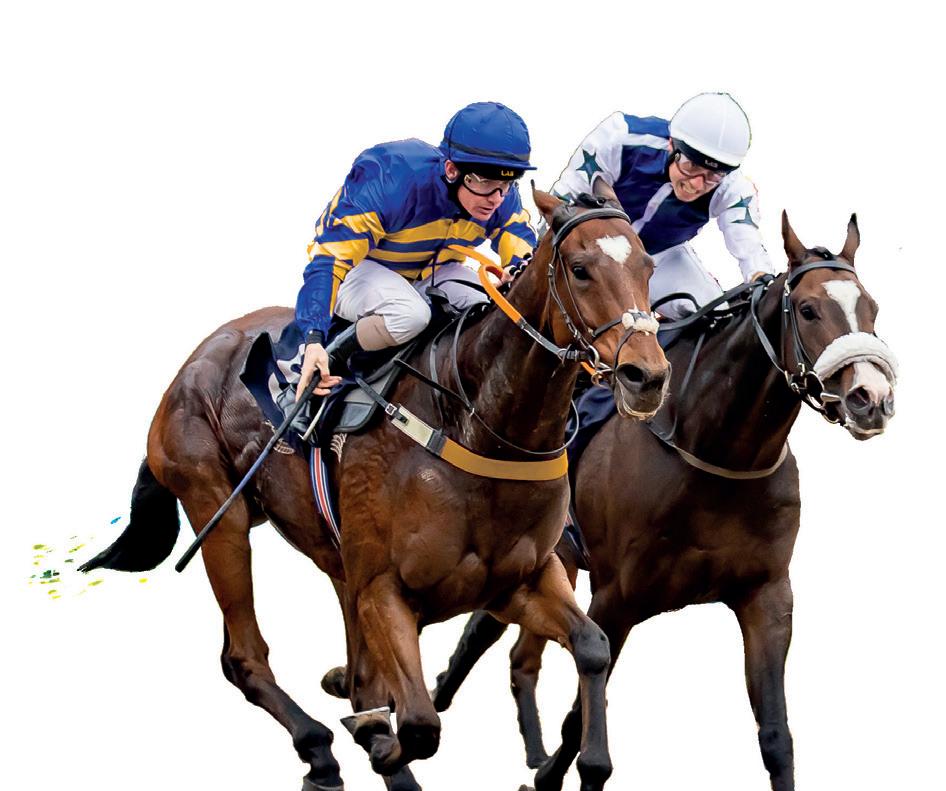



The Dubai Racing Carnival opens in November at Meydan Racecourse, the world’s largest racing facility hosting 17 meetings throughout the season, concluding in March with the 30th renewal of the Dubai World Cup on a card totalling $30.5m (€26.1m/£22.8m).
There are a number of valuable opportunities all season, beginning in November with the €125,600 (£106,912) Listed Dubai Creek Mile on dirt for three-year-olds up. January is busy, with 11 black type races from 1000m (5f) up to 2810m (14f) and ranging from €125,600 (£106,912) for Listed up to €213,489 (£181,719) for Group 2s and €924,282 (£786,662) for the Gp.1 Al Maktoum Challenge, 1900m (9f) on dirt. On turf, the Gp.1 Jebel Hatta, 1800m (9f) carries a purse of €464,658 (£395,469).
Beyond Meydan, the Abu Dhabi Equestrian Club hosts the Listed 1600m (8f) Sheikh Zayed bin Sultan Al Nahyan National Day Cup in December, and the Listed 1400m (7f) HH The President Cup, both on turf with a prize of €95,443 (£81,242) each. Jebel Ali Racecourse hosts the Listed Jebel Ali Sprint, the third leg of the Emirates Sprint Series, 1000m (5f) on dirt for a prize of €125,600 (£106,912), and the Gp.3 Jebel Ali Mile on dirt, €175,840 (£149,677). Fifteen black type races from Listed up to Group 2 are run at Meydan during February and March, again from 1000m (5f) to 2810m (14f) and with similar valuable prizes, all of which lead through to the end-of-season highlight of Dubai World Cup night.
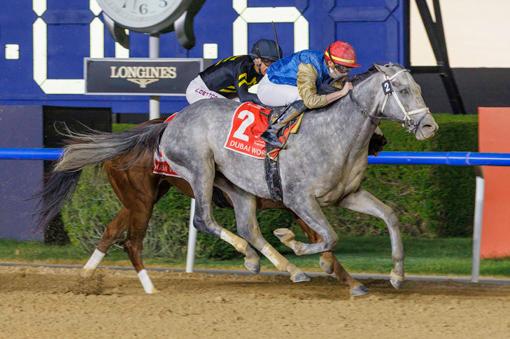

The 10th Running of the Gr.1 The Pegasus World Cup Invitational at Gulfstream Park Saturday 24th January will be worth $3m (€2.56m/£2.2m). For four-year-olds and upward, the 1800m (9f) dirt race is by invitation only, with no fees to enter or start, and is the finale on a star-studded 12-race card.
Also on the card is the Gr.1 The Pegasus World Cup Turf Invitational, over the same distance and under the same conditions, worth $1m (€852,000/£743,500), and the 1600m (8f) Gr.2 Pegasus World Cup Filly and Mare Turf Invitational, with a purse of $500,000 (€426,000/£372,000).
Entries close at noon on Sunday 18th January. The Pegasus World Cup Selection Committee will publish a list of invitees 31st December. There are automatic qualifiers into the 2026 Pegasus, the winner of the Sussex Stakes at Goodwood receives an automatic invitation to the Pegasus World Cup Turf and the winner of the Qatar Nassau Stakes (Gp.1) receives an automatic invitation to the Pegasus World Cup Filly and Mare Turf, and at Woodbine the invitation will be extended to the winner of the Dance Smartly, plus all receive a $25,000 travel allowance and VIP hospitality for the winning connections.
All of the connections of runners are assured they will be looked after better than anywhere else in the USA, with 5-star hotels available, ground transport and VIP accommodations on raceday.
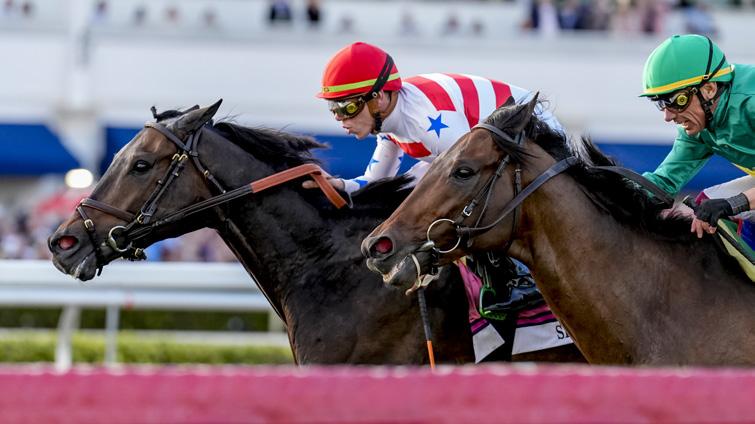
Supporting the invitationals are the 2400m (12f) Gr.3 William L. McKnight Turf race for four-year-olds and up, and the 1400m (7f) Gr.2 The Inside Information Dirt race for fillies and mares four-year-olds and up, both worth $200,000 (€170,000/£149,000).
Free nomination by 11th January, $2,000 (€1,700/£1,500) to enter. There are also three $150,000 (€128,000/£111,500) races, with free nomination by 11th January, $1,500 to enter, namely the 1000m (5f) The Gulfstream Park Turf Sprint for four-year-olds and up on Turf, the Gr.3 1600m (8f) The Fred W. Hooper on Dirt, and the 2400m (12f) Gr.3 The Christophe Clement for fillies and mares four-year-olds and up. Run on Tapeta over 1600m (8f) for $100,000 (€85,200/£74,300) are The South Beach for fillies and mares fouryear-olds and up, and The Carousel Club for four-year-olds and up, both handicaps.
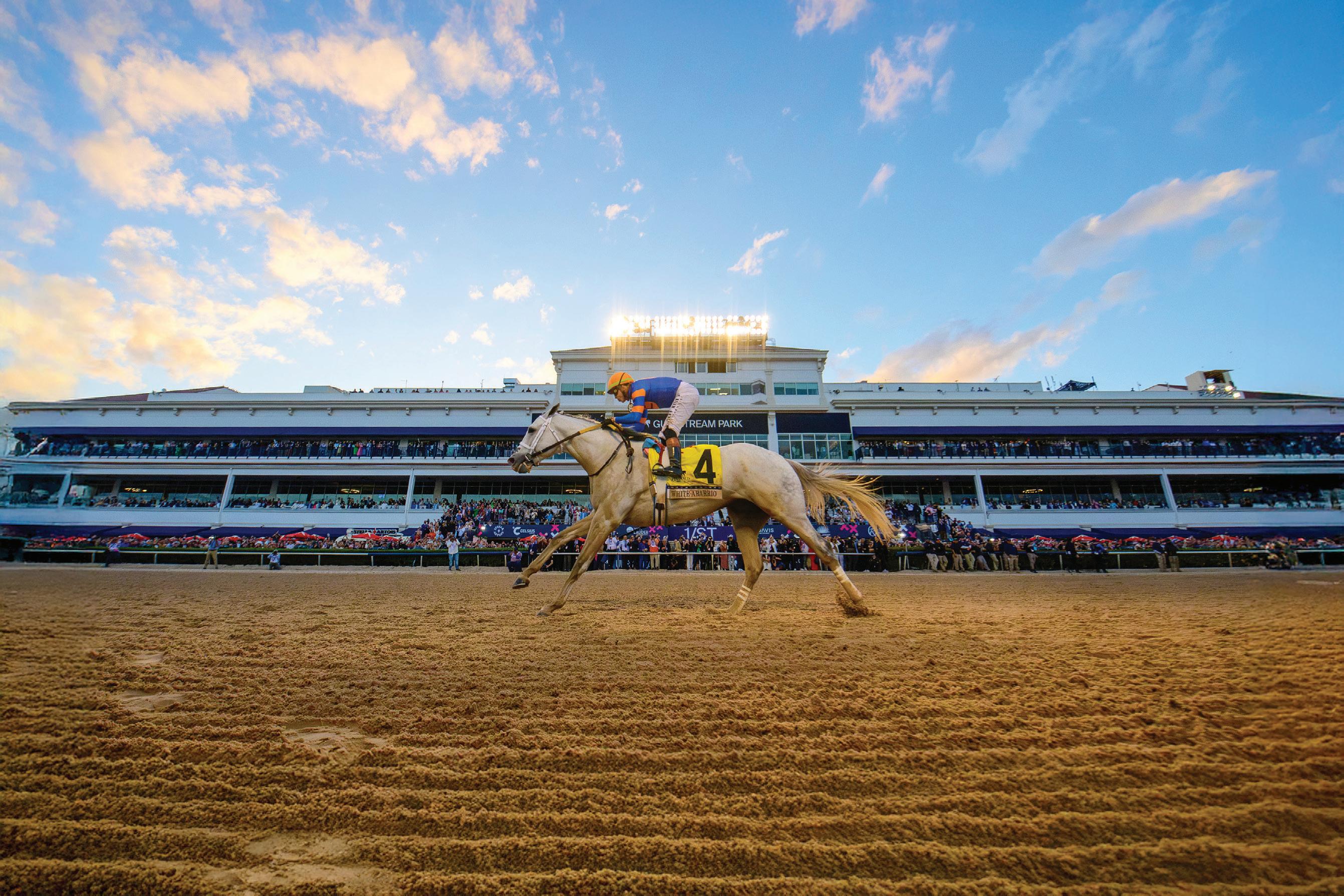



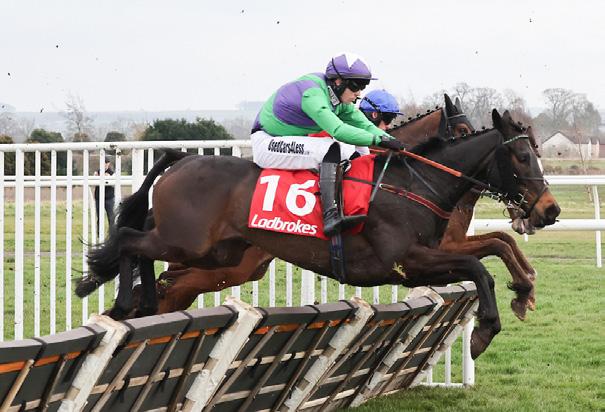

In Britain, £3.2m (€3.7m) will be invested in prize money for developmental races in 2026, comprising novice and maiden races on the Flat and over Jumps, 20% of the race programme. Over Jumps, a total of approximately 50 novice and beginners’ chases will be programmed in 2026, with minimum values at £20,000 (€23,000) for Class 2 and £15,000 (€17,000) for Class 3. The same values will apply to novice and maiden hurdles. Class 4 races will be permitted with a minimum value of £10,000 (€11,500).
A new bonus scheme will be introduced for point-to-point horses, with the aim of strengthening the programme as a development ground for future stars progressing to race Under Rules. The Maiden Series, which will be supported by £250,000 (€286,000) of funding, will take place at selected Point-toPoint Authority (PPA) tracks during the 2025/26 season. It will comprise 15 maiden races for four and five-year-old horses, with the winners of those races qualifying for a bonus when they win their first developmental novice or maiden race over hurdles or fences Under Rules.
A significant number of Class 3 Novices’ Limited Handicap Chases have been removed from the programme and replaced with ‘Chasing Excellence’ Beginner/Novices’ Chases, each run for an increased minimum value of £12,000 at Class 3 rising to £15,000 in 2026. The new Chasing Excellence initiative will see more Class 2 and 3 Beginners’ Chases weight-for-age contests restricted to horses that have not yet won a race over fences, and Novices’ Chases replacing a significant number of Class 3 Novices’ Limited Handicap Chases, from October 2025 and into 2026.
New requirements for Grade 1 Novices’ and Juvenile Hurdle races mean that horses will only be permitted to run in Grade 1 Novices’ and Juvenile Hurdle races if they have been allotted a rating or an assessment of 110 or more by the BHA Handicapper, taking account of races run up to and including the day prior to confirmation. The change brings the novice and juvenile hurdle division into line with Open Grade 1 Chases and Hurdles and Grade 1 Novices’ Chases, all of which require a minimum rating to participate.
Adjustments have also been made to the Junior National Hunt Hurdles programme. The start of the Junior NH Hurdle season has moved to the beginning of November (from October) to allow trainers more time to develop these horses at home. The number of races for the season will remain the same.
A penalty for a win in a Junior NH Hurdle will not be carried into other race types in future, except in other Junior NH Hurdles and in Class 1 races. This includes in Juvenile and Novices’ Hurdle races during the same season, but winners will still lose their maiden status over Jumps.
Non-winners of Junior NH Hurdles will be permitted to drop back to ‘Junior National Hunt Flat races’, three-year-olds only before the end of the year or four-year-olds only after 31st December, run until the end of the season.
In addition, several changes have been made to the Go North Series, which culminates in Finals weekend at Kelso, Musselburgh and Carlisle racecourses in late March. The Go North Series provides meaningful end-of-season targets for connections and this season’s series Finals will be run for increased minimum values, with a prize fund of at least £40,000 (€45,700) per race.
A new ‘Forgive ’n ’Forget’ Novices’ Handicap Chase Series will have Class 4 and 5 Novices’ Handicap Chases qualifiers and the Final will be run over 2m 5f 133y (4200m) at Kelso. A new ‘Night Nurse’ Handicap Hurdle Series will have qualifiers made up of Class 2-4 Juvenile and Novices’/Maiden WFA Hurdle races, and the Final will be for four-year-olds and up and run over 2m 3f 171y (3800m) at Musselburgh.

The Jumps Weekend concludes the season at Auteuil on November 15th and 16th, with 15 races over two days - eight over hurdles and seven steeplechases including four Grade 1 races.
The programme includes the Gr.1 Prix Renaud du Vivier, a 3900m (2m3f) hurdle for four-year-olds with a purse of €280,000 (£245,000). The €363,000 (£317,000) Prix Serge Landon Hurdle over 4800m (3m) for five-year-olds up; the €355,000 (£310,500) Prix Maurice Gillois Steeplechase over 4400m (3m2f) for four-year-olds; the €278,000 (£243,000) Prix Cambacérès Hurdle over 3600m (2m2f) for three-yearolds and the €580,000 (£507,000) Prix La Haye Jousselin over 5500m (3m4f) for five-year-olds up.
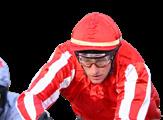
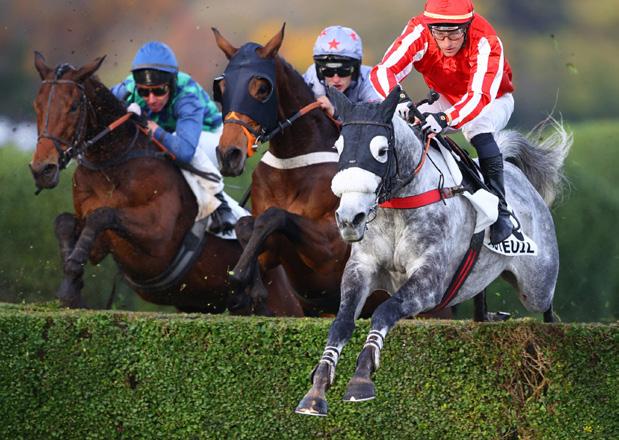






































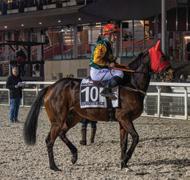












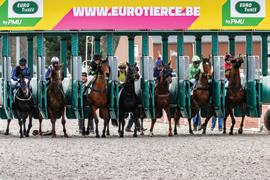
To learn more about the opportunities to train & race in Belgium this year contact Bernard Sto el +32 475 933 457 or by email contact@bgalopf.be RACE IN BELGIUM! TRAIN










Belgium is at the crossroads of horse racing in Europe: UK, Netherlands, Germany, France are only a stone’s throw from our training centers!

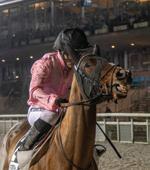

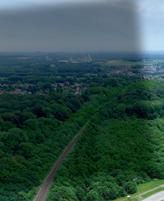
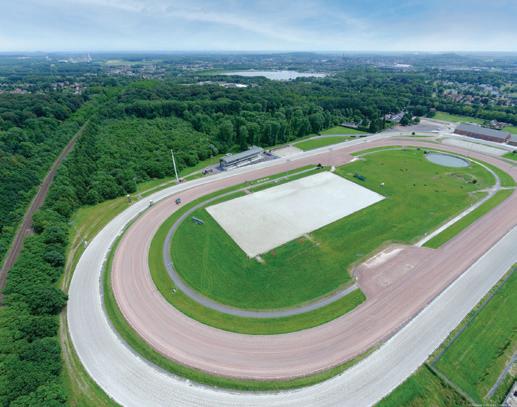

Coral Gold Cup Handicap Steeple Chase (Class 1) (Premier Handicap) 3m 1f 214y (4yo+)


The “Bet-In-Race” With Coral Intermediate Handicap Hurdle Race (Class 1) (Registered as The Gerry Feilden) (Premier Handicap) 2m 69y (4yo+)
The Coral Get Closer To The Action Handicap Steeple Chase (Class 2) (For The Jim Joel Memorial Trophy) 2m 92y (4yo+) (0-145)
The Sir Peter O’Sullevan Memorial Handicap Steeple Chase (Class 2) 2m 6f 93y (4yo+) (0-145) £250,000
The Coral John Francome Novices’ Steeple Chase (Class 1) (Grade 2) (Formerly known as the Berkshire) 2m 3f 187y (4yo+)
Coral Long Distance Hurdle Race (Class 1) (Grade 2) 3m 52y (4yo+)
Coral Racing Club Handicap Steeple Chase (Class 2) 2m 3f 187y (4yo+) (0-150)
“Bet-In-Race” With Coral Fillies’ Juvenile Hurdle Race (Class 1) (Listed Race) 2m 69y (3yo)
£55,000 £5k increase £50,000 £5k increase £50,000 GOLD CUP
£75,000 £15k increase

The Coral Challow Novices’ Hurdle Race (Class 1) (Grade 1) 2m 4f 118y (4yo+)

The Coral Mandarin Handicap Steeple Chase (Class 2) 3m 1f 214y (4yo+) (0-145)

£100,000 ENTRIES CLOSE TUES 28 OCT £250K International entries close day before

Injuries to the superficial digital flexor tendon (SDFT) and suspensory ligament (SL) are sadly a common occurrence in racehorses, with jump racing in particular placing these structures under intense mechanical stress. In a large UK study of 1223 UK National Hunt racehorses over two seasons, the rate of tendon and suspensory ligament injuries (TLIs) in training was 1.9 per 100 horse-months at risk. Of these, around 89% were SDFT injuries, with the remainder being SL injuries. The study also found that risk of TLIs varied by trainer and increased with the horse’s age. (Ely et al., 2009). Another noteworthy study performed regular ultrasonography on 263 National Hunt horses over two seasons, concluding that 24% of them showed structural changes of the SDFT, even before an injury was clinically evident. (Avella et al., 2009).
Focussing primarily on the SL, a study found SL injuries in racehorses to have an incidence of 2.7 per 1000 starts, with a prevalence range of 3.6% to 10% depending on type of race and population studied. (Davies et al., 2021). In flat thoroughbreds, rates of SDFT tendinitis in training/populations range between roughly 3.4% and 11.1%, and SDFT injuries are responsible for a significant portion of horses retiring from their racing careers. (Kasashima et al., 1999).
These two structures lie at the heart of the suspensory and passive stay apparatus, functioning like elastic springs which absorb energy and aim to prevent excessive extension of the fetlock. When the strain placed upon them is too great, too frequent, or inadequately managed, micro-damage builds up over time, leaving the limb vulnerable to more serious breakdown. This makes SDFT and SL injuries among the most significant welfare, performance, and economic concerns in the horse racing industry.
It is for this reason veterinary scientists and researchers alike will not be deterred from trying to find answers to the critical questions of; why the prevalence of this type of injuries is so high, what we can do to help prevent them occurring and what is the best rehabilitation strategy when the worst happens.
The SDFT is the continuation of the superficial digital flexor muscle, the top of the tendon attaches to the humerus, radius and ulna. The tendon properly begins on the back of the lower radius and extends down the surface of the limb, lying superficially to the deep digital flexor tendon (DDFT) and making it readily palpable along the length of the metacarpus or commonly known, cannon bone. Enclosed within the flexor tendon sheath, the SDFT glides over the DDFT and suspensory ligament, maintaining close anatomical relationships that are critical to their function. Just above the fetlock, the superficial flexor tendon forms a small “tunnel” of tissue that the deep flexor tendon passes through before continuing down the leg. At the level of the pastern, the SDFT divides into two branches that insert on both the long pastern (P1) and the short pastern (P2). Functionally, the SDFT acts not only as a flexor of the pedal bone/foot (P3) but also as a vital part of the passive stay apparatus, resisting over-extension of the fetlock and pastern joints. Its elastic properties allow it to store and release energy during locomotion, making it a key contributor to the horse’s stride efficiency.
The SL is a highly modified ligament that originates from the upper, back area of the cannon bone, with fibres also arising from the bottom row of carpal bones. From its broad origin, the SL runs downwards along the cannon, positioned deep (or below) to
Long Pastern Bone (P1)
Extensor branch of suspensory ligament
Short Pastern Bone (P2)
Pedal Bone (P3)
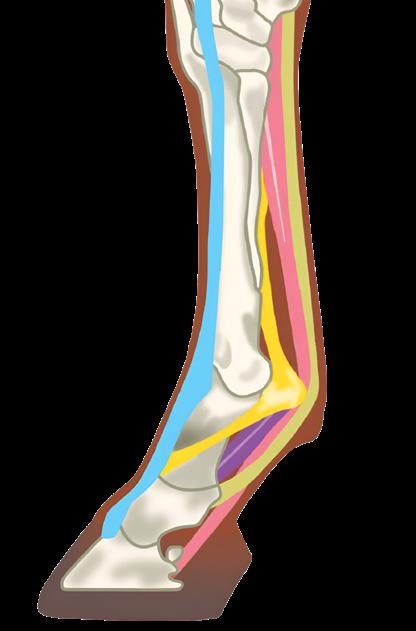
Superficial digital flexor tendon
Proximal suspensory ligament
Deep digital flexor tendon
Superficial distal sesamoidean ligament Suspensory ligament
Deep digital flexor tendon
both the superficial and deep digital flexor tendons. In the midregion of the cannon its fibres become more discrete and near the bottom third of the cannon the ligament divides into medial and lateral branches. Each branch curves around the outside of the upper sesamoid bones at the back of the fetlock, before continuing forward as the extensor branches, which attach into the main extensor tendon running down the front of the leg.
Functionally, the SL is the cornerstone of the suspensory apparatus, supporting the fetlock and preventing its overextension under the heavy loading of movement. Together with the sesamoid bones and lower sesamoidean ligaments, it acts as a dynamic support structure, storing elastic energy and releasing it to aid forward propulsion. Its critical role in both stability and energy efficiency explains why the SL is so frequently impacted by injury and disease.
In conclusion, the SDFT and SL are very interconnected, both anatomically and functionally. The SDFT primarily provides flexion of the foot and helps support the fetlock and pastern, while the SL suspends the fetlock and forms the foundation of the suspensory apparatus. Both are integral to the horse’s remarkable efficiency of movement and endure significant forces during training and on the racecourse.
A study at the Royal Veterinary College (Hertfordshire) by Hanousek and colleagues (2024) investigated how injury to the palmar supporting structures of the fetlock, the SDFT in the forelimb and the SL in the hindlimb, affects limb biomechanics. Using a retrospective cohort of clinical cases, the authors measured limb stiffness and fetlock conformation in injured and uninjured horses with a validated, non-invasive technique combining floor scales and electrogoniometry (electronic sensors to measure joint angles during movement).
In uninjured horses, forelimb stiffness was found to be significantly greater than hindlimb stiffness, reflecting their different roles in locomotion, while fetlock conformation did not differ between limbs. Age did not influence stiffness in this mature population (aged between 3yo and 35yo). This corresponds with the knowledge that tendon maturity is thought to be reached between 2 and 3 years old.
In horses with forelimb SDFT injuries, there was no long-term difference in stiffness or conformation between the injured and opposite uninjured limbs, even with follow-up examinations extending beyond three years. This suggests that SDFT injuries, despite fibrotic healing, may recover mechanical function sufficiently to restore overall limb stiffness. By contrast, hindlimb SL injuries were associated with both increased limb stiffness and greater fetlock extension, consistent with elongation of the ligament following injury. These changes persisted regardless of injury duration, indicating a lasting alteration in the biomechanics of the hindlimb fetlock after SL damage.
The findings highlight important distinctions between the biomechanical consequences of SDFT and SL injuries. While SDFT lesions appear to permit functional compensation within the limb, SL injuries lead to measurable and persistent changes in stiffness and fetlock angle. Clinically, these differences may explain the poor prognosis often associated with chronic suspensory disease and underline the importance of fetlock support during rehabilitation.
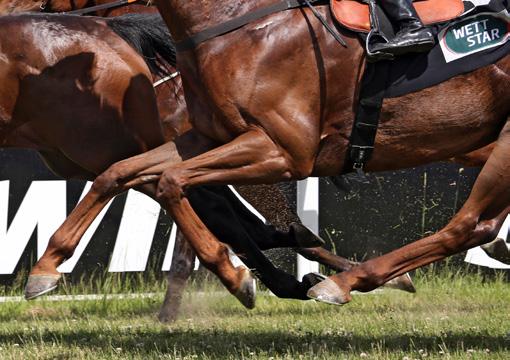
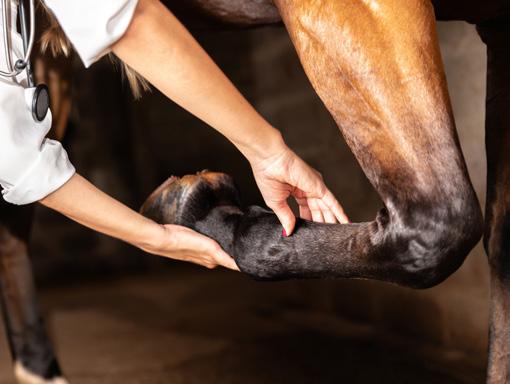
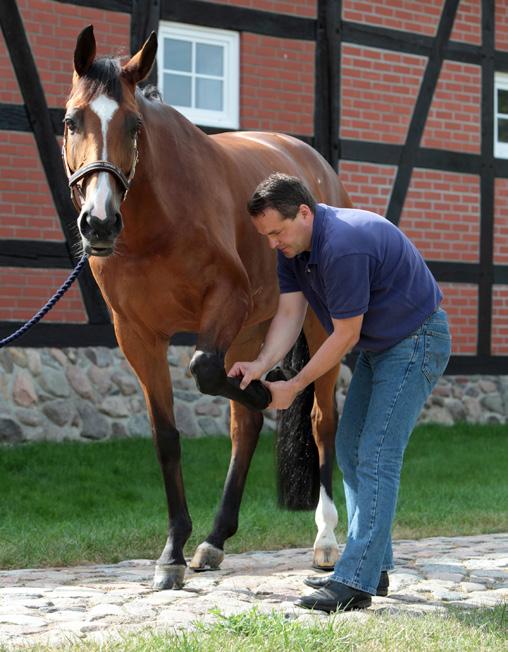
A review paper published last year, by Guest and colleagues provides a comprehensive analysis of the SL, emphasising its central role in athletic performance and its high susceptibility to injury. The review highlights that, despite the clinical significance of SL disease across a range of equestrian disciplines, research into its anatomy, biomechanics, and pathology falls short of that of the superficial and deep digital flexor tendons. The SL is described as a unique structure; an evolutionary adaptation from a muscle to a predominantly fibrous ligament that functions both as a key component of the suspensory apparatus and as an elastic energy store during movement.
The paper explores how the specialised functions of the SL open it up to being particularly vulnerable, especially in sports horses where the SL operates close to its mechanical limits. Large-scale studies on the prevalence and risk factors for SL injury are still relatively scarce; however, SL injuries consistently represent a large proportion of musculoskeletal conditions, with particularly high prevalence in racehorses. Prognosis is often guarded, as mentioned in the previously discussed study, especially in chronic hindlimb disease, where persistent biomechanical changes and reduced performance are common. The take home message of the review is the need for greater research attention to this structure, suggesting that improved understanding of its biology, loading environment, and healing response is critical to advancing prevention and treatment strategies.
In summary, Hanousek et al., 2025, provides experimental evidence of the long-term biomechanical consequences of SL injury, showing persistent increases in limb stiffness and fetlock extension in affected hindlimbs. In contrast, Guest et al ., 2024 shines the spotlight on how the SL remains comparatively understudied despite its clinical importance, noting limited epidemiological data and gaps in our understanding of its biology, biomechanics and healing.

new targeted PEMF
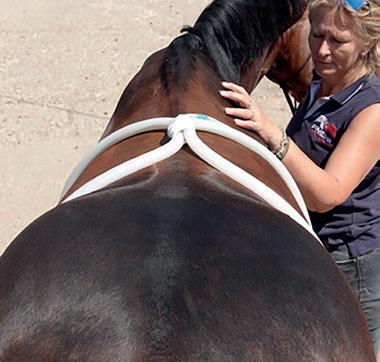
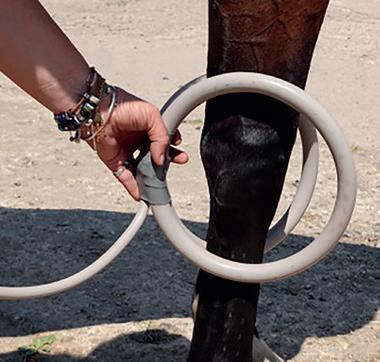
Accelerate recovery. Optimise performance. Support your horse’s natural healing—before, after, and beyond the track.
The FMB s POWERMAG , utilises pulsed electromagnetic fields to interact with cells and tissues in the horse’s body. These electromagnetic pulses stimulate cellular activity and can enhance the natural healing process post training, race or injury and for general wellness and performance.
The PowerMag is the first system of it’s kind to offer:
• Dual signals meaning both high intensity PEMF and lower intensity Schumann resonance at the same time
• Easily portable – battery operated so you can walk around the horse with the complete system as you apply the therapy
• Separate devices available for qualified physios / vets and trainers /owners
• Try before you buy available
• Trained and supported by industry qualified equine professionals i.e. vets, physiotherapists, chiropractors and osteopaths.
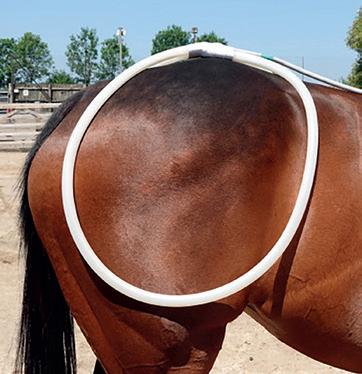

Tendon injuries remain one of the most frustrating problems in racing, hence the subject being debated and discussed in great depth at the Beaufort Cottage Educational Trust lectures, which recently took place in Newmarket, UK.
Mark Johnston’s perspective was a reminder of the hard reality: in flat horses especially, very few make a full return to their peak once a tendon has gone. Many may race again but shortened careers and recurrent issues are common. Johnston feels ultrasound is useful, but nothing replaces the trainer’s eye and feel, looking at tendon profile, monitoring for bowing, and using hands to assess changes. The advice is to act fast: throw every anti-inflammatory option at the injury in its early stages, manage workload with care and accept that rest alone rarely works. Prevention, early detection, and realistic expectations are the trainer’s best tools. He also raised the question of whether tighter rules around racecourse medications might now limit the ability to prevent some injuries that, in his experience, were reduced when prophylactic treatments were allowed.
Professor Roger Smith discussed the science behind why these injuries happen. He explained that the SDFT is like an elastic spring storing and releasing energy every stride, but in thoroughbreds it is working close to its limits. Damage often builds up gradually, causing small changes in the tendon matrix. Age and repeated training reduce the tendon’s ability
to repair itself and enzymes released after hard work can make things worse. His strongest advice was about prevention: avoid hard ground, spread out intense sessions, and ideally allow 72 hours between big gallops to let the tendon recover. He also highlighted the value of early detection using imaging like ultrasound, Doppler, or UTC to spot problems before they become injuries. When things do go wrong, rehabilitation has to be long, structured, and monitored closely, with new biologic treatments like stem cells and platelet-rich plasma showing promise for improving repair and reducing re-injury.
From a purely rehabilitation viewpoint, Amelia MacArthur discussed how she manages tendon injuries within her rehabilitation yard. Her message was clear: one size does not fit all. Every horse’s recovery should be tailored to its injury, temperament, and long-term goals. She uses tools like a water treadmill, deep sand gallop, and hacking, but stresses the basics first: controlled hand-walking, safe handling, and even simple in-stable physiotherapy exercises. Ultrasound checks and gradual increases in loading are essential, and work on surfaces must be varied and adjusted depending on the case. She also drew attention to rider weight and balance, something which is often overlooked and showed how even body condition can make or break a horses recovery.
The rehabilitation advice following a SL injury is much the same as with tendons, with an emphasis on early controlled exercise, progressive loading and close monitoring. As we discussed earlier, recovery can be more challenging due to the SL’s role in supporting the fetlock and its tendency to heal with elongation and prognosis is generally more favourable for forelimb injuries than hindlimb cases. Ultimately, the best approach is prevention through thoughtful training management, early detection, and timely intervention, rather than reliance on rehabilitation alone once major damage has occurred.
Our industry strives to not only continue to provide the best possible care of our equine partners in this wonderful sport but also further improve welfare and decrease injury rates on and off the racecourse. Across Europe standards are high, with close monitoring and consistent improvements made by bodies such as the IHRB and the Equine Injury in Irish Racing Risk Reduction Project, France Galop and the Equine Welfare Charter, the BHA and Horse Welfare Board. It is safe to say with all the dedicated research, fast developing technology and the support of our governing bodies we are on the right track!
Through the professionalism and expertise of our staff, together with the fantastic range of facilities, our goal for rehabilitation is to return every horse to its owner/trainer with the optimum chance of fulfilling its potential. Louise Collinson mobile +44 (0)7792 260666 email lou@lcequinerehab.co.uk www.lcequinerehab.co.uk

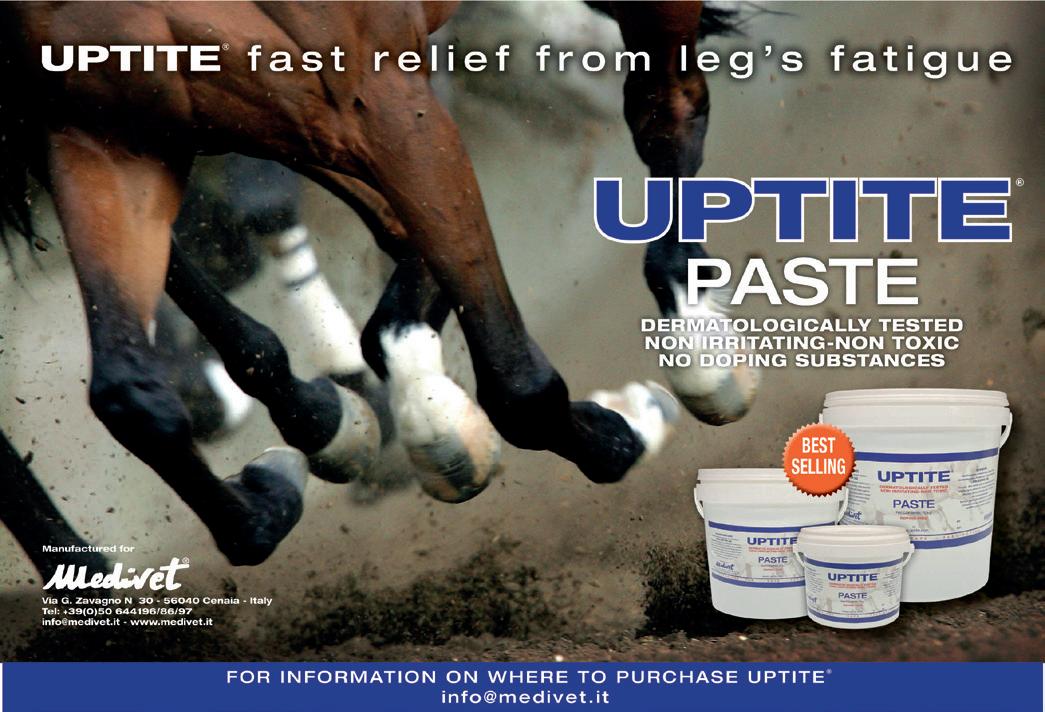

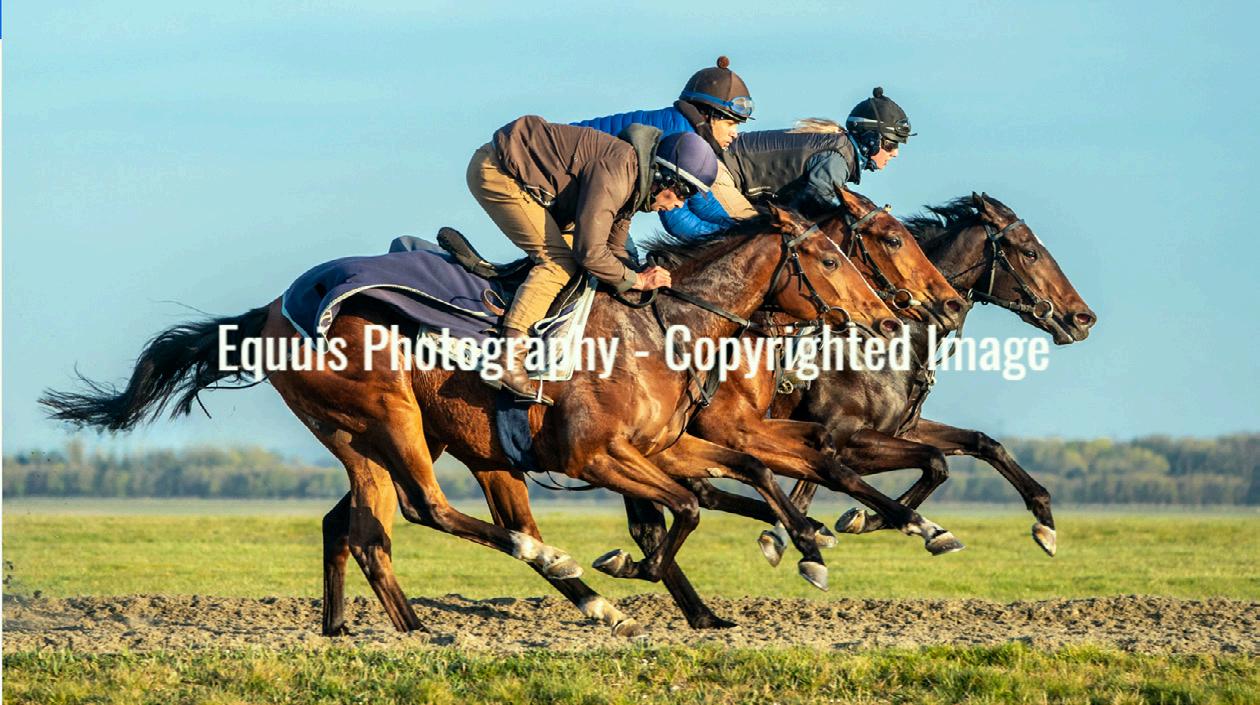

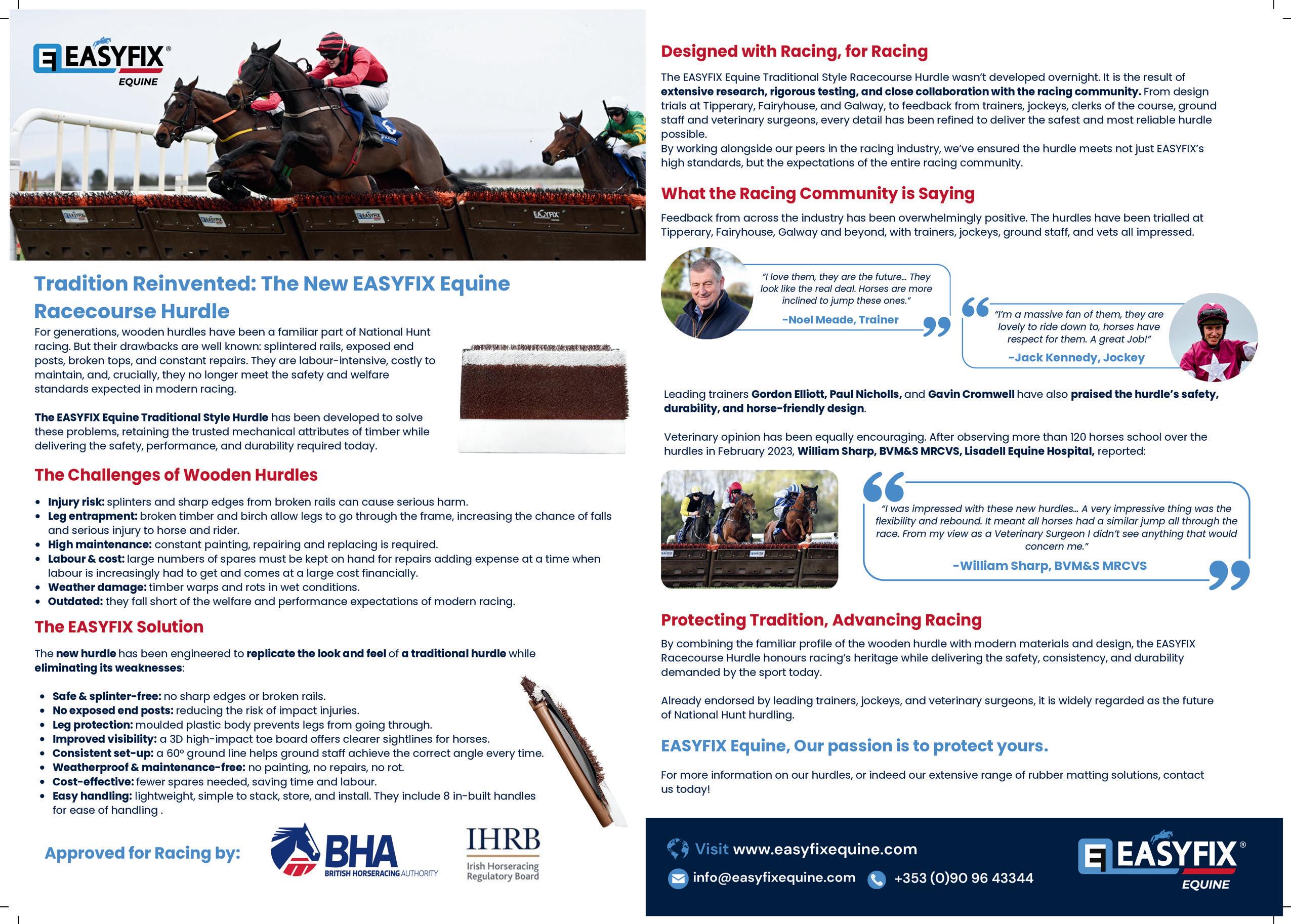



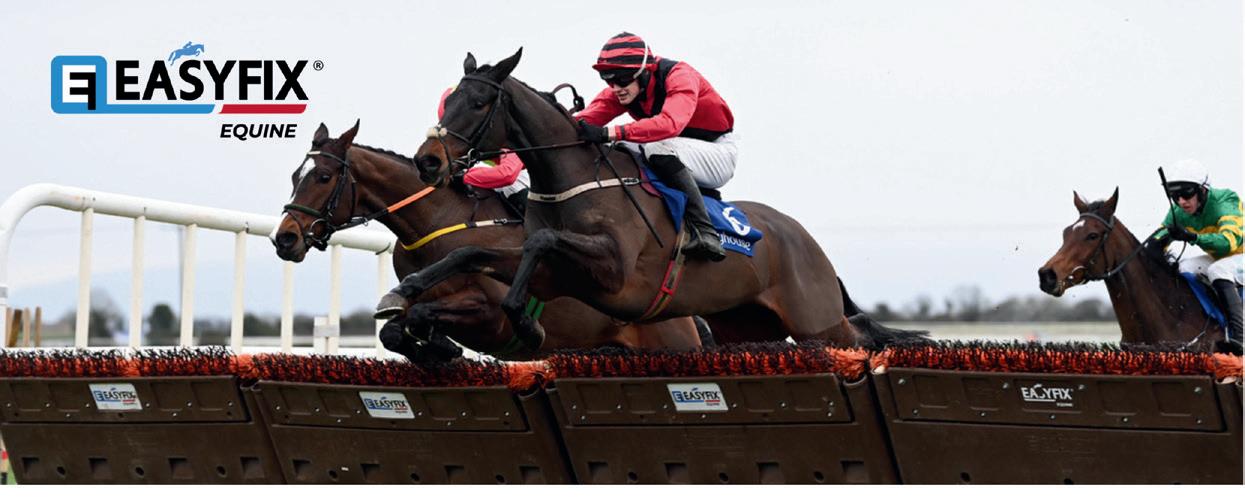









Jumping is a skill which, although innate, can be hugely demanding and takes considerable practice in order for horses to successfully tackle the fences seen in today’s steeplechase, cross country and hurdle races. We all know some horses are “natural jumpers”, and seem to find the job easy, others may require more refinement, either way the anatomical chain of events which need to happen are the same for every horse, regardless of jumping sphere.
Biomechanics is the scientific study of the movement of a living body, in this case a racehorse, looking at how muscles, bones, tendons and ligaments all work in sync to produce a specific movement. Analysing and interpreting how our racehorses look and move (static and dynamic evaluation) is a skill which many horse people have developed and perfected over countless years within the industry, but it can be subjective. A biomechanical understanding can only be a rewarding and beneficial practice from both a welfare and results point of view. This type of indepth evaluation is only possible due to high-speed cameras and
expert gait analysis technology; it would be inconceivable to take in all the different movements needed via the naked eye, since one jumping effort is over in all but a second!
As the jump racing season begins to ramp up in both Great Britain and Ireland, and the rest of Europe is still going strong, the importance of schooling remains. For trainers, developing horses that are not only bold and willing but also biomechanically efficient over fences is one of the keys to consistent, injury-free performance. While traditional training methods hold strong, recent advances in equine biomechanics are providing fresh insights into how different schooling approaches affect the horse’s body, stride, and ultimately, their jumping success.
The jump can be broken down into five clear phases, all with equal importance with the necessity to be coordinated in order to produce a careful and fluent jump. Of course, jockeys and riders will and can have an influence on all phases, but this is not something we will touch on; for this article let us assume the rider is in complete synchronisation with the horse, allowing all phases to be carried out as nature intended.
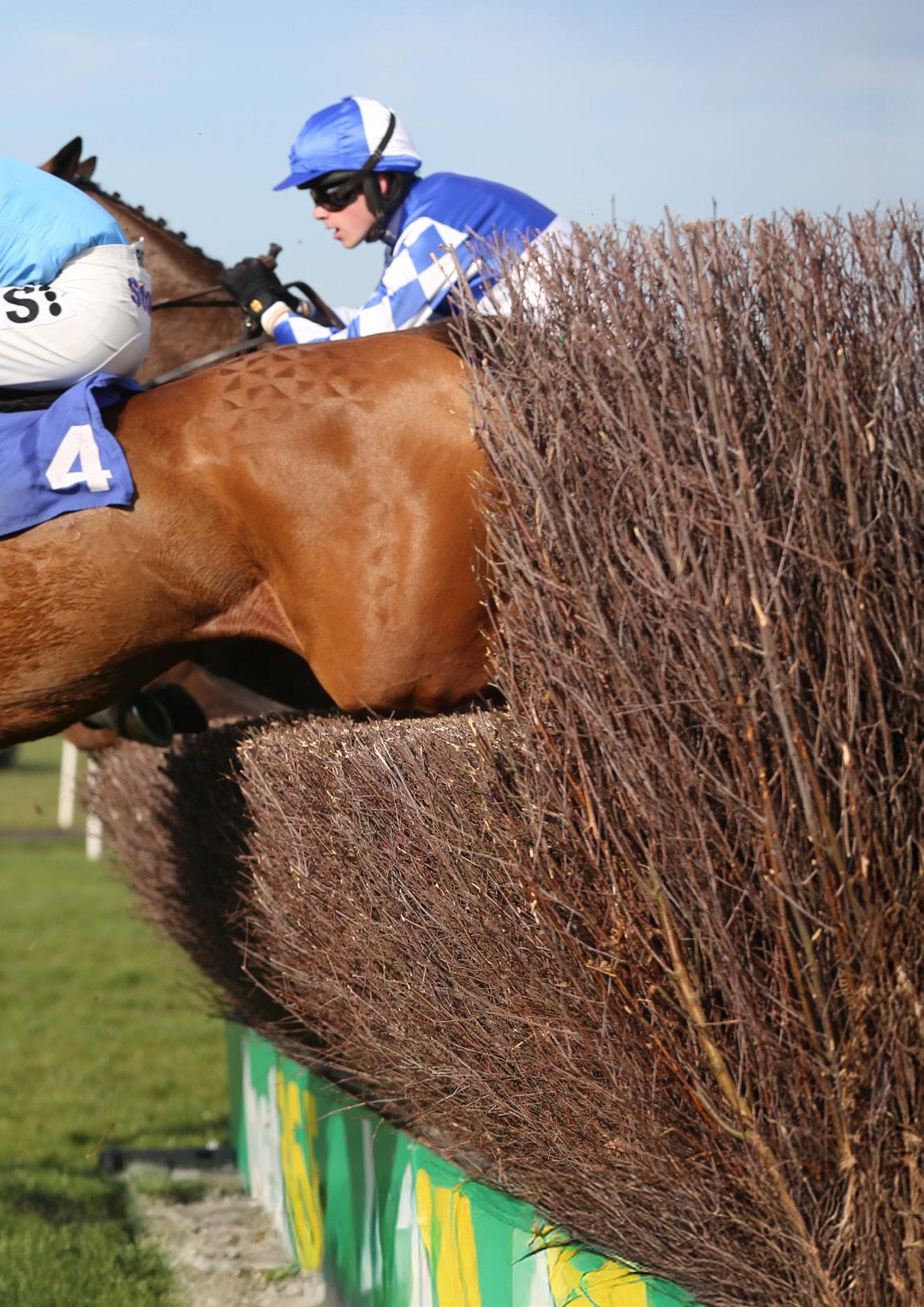
An often-overlooked component, the approach to a fence will have a profound effect on the quality of the jump, its function being to generate suitable conditions for take off. On the approach to a fence the horse needs to be in a well-balanced, rhythmic and forward-thinking stride. Obviously, we are looking at steeplechasers and hurdlers, therefore horses will be approaching in gallop, meaning strides will not be as easily adjusted and the horse will need the ability to judge and correct themselves as necessary. As a general rule, the faster the approach, the more strength and skill needed to tackle the fence efficiently.
The horse will need to be able to adjust their head carriage to see and judge the fence sufficiently, a high head position or restriction of the head and/or neck will inhibit this. In the final stride before the next phase (take off), the horse will reach forward and down with their neck, thus lowering their centre of gravity. This will produce a sudden braking action, stopping forward momentum for a brief moment, which will engage the hindlimbs under the horse’s body, allowing them to obtain the maximum amount of push from the hindquarters and producing enough energy for take off.
Maximum jumping capacity is entirely determined by the impulsion at take off, which in turn is a compromise between approach speed (which reduces the time for energy production) and muscle strength (which limits the magnitude of energy generated). Impulsion is defined as stored energy by engagement, achieved through controlled muscular power in the hindquarters, enabling increased hindlimb protraction and joint compression/flexion. There are many factors which can affect a horse’s approach, especially in a racing scenario where competitors can interfere and hinder each other, but in a perfect scenario an approach as outlined above will produce an idyllic take off position.
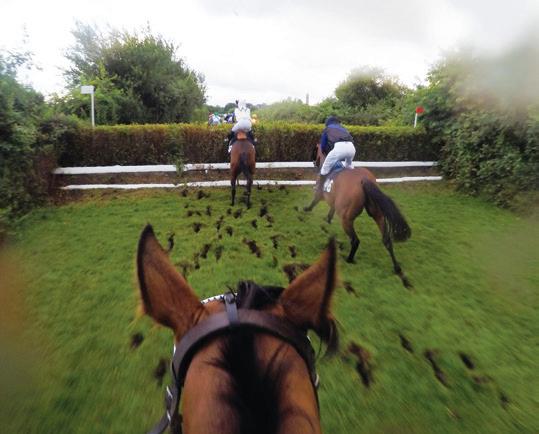
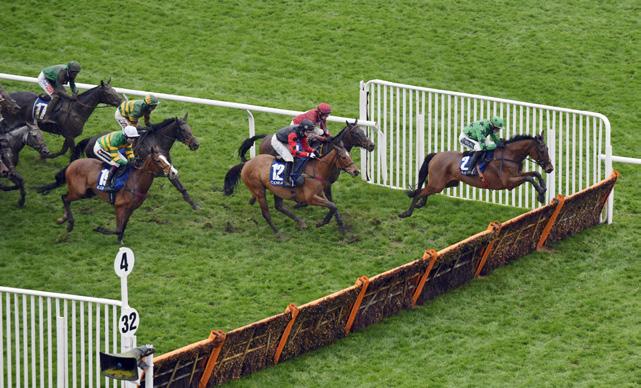

As the final stride is completed the horse’s weight is distributed backwards via the lifting of the head, shortening of the neck and lifting of the shoulders. This shortening of the neck also contributes to the halting of the forward momentum needed to gather energy, as discussed in the approach section.
The non-leading hind leg (the first beat of gallop) is the first to land at the base of the fence. Due to the horse’s weight being pushed backwards, the swing phase of the leading hind leg will be interrupted, this in turn will cause a shortening of stride, meaning both hind legs land almost symmetrically. If for any reason this process is interrupted or inhibited the horse will take off solely from the leading hind (landing in front of the non-leading hind as it would when taking a normal stride), this will cause the horse to be unbalanced and prohibit the flexion needed to jump the fence sufficiently.
Next, the forelimbs will fold up and in towards the horse’s body due to the upward rotation of the shoulders, thus creating a more streamlined

shape. The hindlimbs should now be equally flexed in order to push against the ground and create the necessary propulsion. The amount of flexion required is directly linked to the height of the fence, more flexion equals a longer phase of hesitation, creating more force and a larger jump. The quicker the approach the shorter stance phase achievable, therefore strength, suppleness and agility is of upmost importance in a racing scenario.
The average stance phase for a horse tackling a steeplechase fence will be approximately 0.2 seconds. Along with the hindlimb flexion, there will also be rotation of the pelvis due to the flexion of the sacral and iliac junction in the loins, this is at its most effective when the hip joint is placed vertically above the hoof. With maximum flexion of the hindquarters obtained the horse can begin to extend the hind legs and release the coiled energy, a force which must exceed the horses body weight by 3 – 5 times! A study on show jumpers indicated that maximal vertical force increased by about 0.22 N/kg for every 10cm increase in fence height—meaning a 550 kg horse needed roughly +360 N extra vertical force at 1.4m compared with 1.1m (Chateau et al., 2020). The abdominal muscles lift the extended topline, and the shoulders rotate forward and upwards assisting the lifting of the hindlimbs off the ground. This is arguably the most important phase, because it is at this point that the trajectory of the horse’s flight is determined, and many studies have rightly focused on the take-off parameters in their research.
The flight phase begins the moment the hind hooves leave the ground, from here nothing can be done to change the path of the horse’s centre of gravity. In this phase the hindlimbs will reach full extension while the forelimbs are flexed tightly against the horse’s girth area. The height of which the hindlimbs can achieve has already been determined at this point, and it is proportionate to the strength of the coil and the push off from the ground via the hind legs. If the approach and/or take off has been suboptimal the horse may twist their pelvis in order to allow the hindlimbs clearance of the fence, the same principle can be applied if the forelimbs are too low, the horse can move their shoulders sideways to assist, but this is likely to have a detrimental effect on the rest of the sequence.
The neck will extend forward, allowing the horse to stretch over the fence due to the pull on the nuchal and dorsal ligament
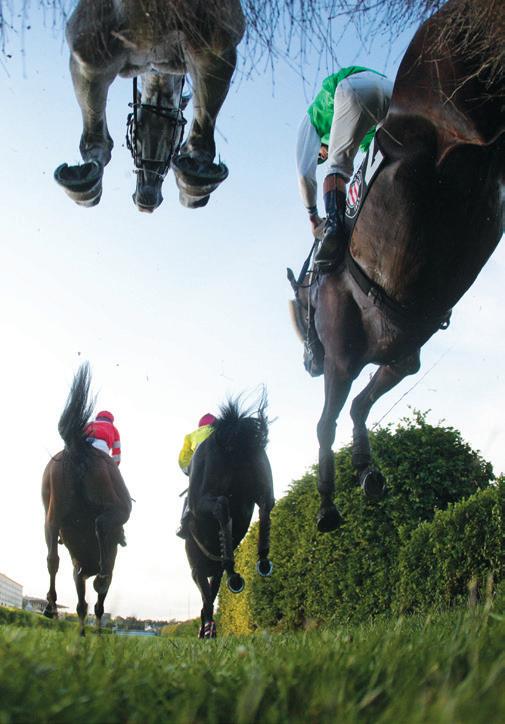
systems, particularly the supraspinous ligament that runs down the top of the back, this is of increased importance the wider the obstacle, for example ditches. The hindlimbs will tuck up underneath the horse’s body, via flexion at the stifles and lifting in the hocks, and the knees will lift, bringing the forelimbs higher away from the fence and increasing their streamline potential –this position is known as a bascule, a French word meaning “arc in motion”. Some horses naturally produce a bascule shape over fences from the moment they begin their training, often a good sign for future form.
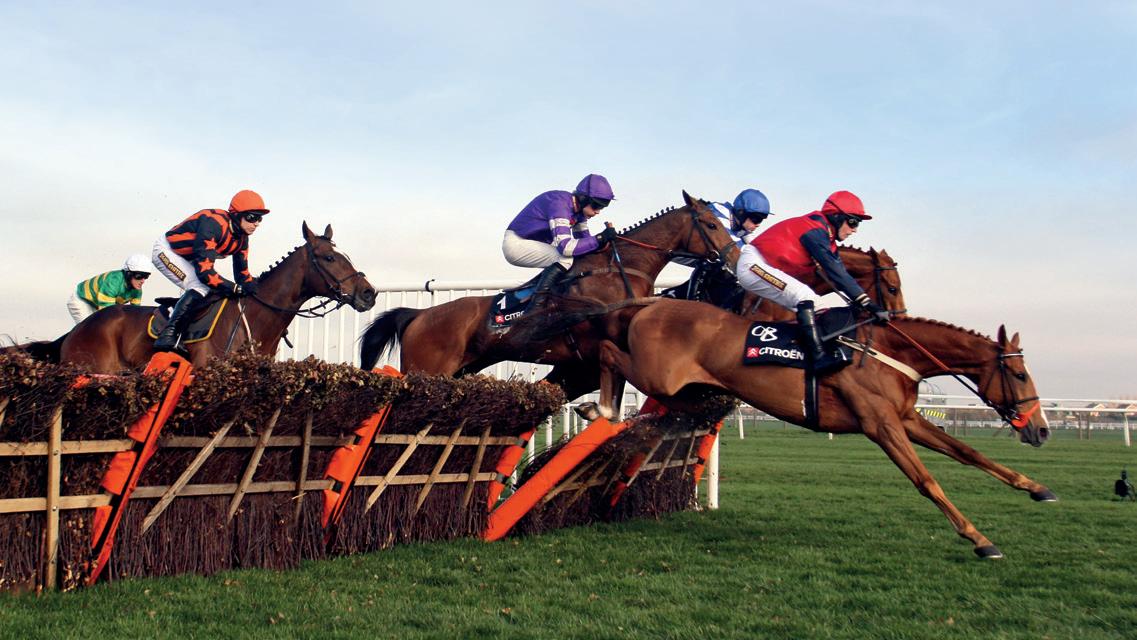
The purpose of this phase is to absorb the impact of landing, retain impulsion and ensure clearance of hindlimbs. On landing the horse will lift their head and neck upwards as the forelimbs descend to the ground, this will slow the horse’s forward momentum so that the force of impact is reduced. The non-leading forelimb lands first and takes all the weight of the horse and force of landing, research has indicated that the force on the horse’s foot on landing from a 4ft fence is approximately 4000 pounds, which is approximately three times the average thoroughbred’s weight. (Schamhardt et al., 1993).
This creates an intense (albeit short lived) amount of pressure on the joints, muscles, tendons and ligaments of the forelimb, particularly the flexor tendons (deep and superficial) and suspensory ligament. It is understandable that injuries to the superficial digital flexor tendon (SDFT) are one of the most observed injuries in racehorses, in a study of steeplechase horses diagnosed with tendon and ligament injuries sustained during training, 89% occurred in the SDFT (Ely et al., 2009).
When the leading forelimb lands, both legs push against the ground in an upward and backward direction. The horse can essentially choose which leg to land on, many horses will favour a landing leg, this is quite a natural thing for them to do and will not cause any issues, the most important thing is that the horse is balanced and comfortable. The hindquarters rotate underneath the trunk and reach toward the ground as the forehand moves forward and out of the way of the hindquarters. The more relaxed a horse is the better, a tense horse will not allow sufficient shock absorption and they are more likely to injure themselves and/or make a mistake. Similarly, if a horse is tired or lacks impulsion blunders are more readily made.
The sole aim here is to produce a smooth transition from landing to the potential approach for the next fence. The horse should be able to resume a balanced gallop stride directly after landing (proportionate with the going), this should seem effortless with no restriction of forward momentum. Recovery will be more difficult and take longer if mistakes have been made, or impulsion is lost. Deep ground or pecking on landing can lead to over-reaching, where the forelimbs fail to move before the hind limbs land.
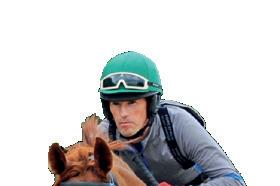

Attempting to optimise these phases through targeted schooling can help improve energy efficiency, reduce injury risk and increase a racehorse’s confidence. As with everything equine, the “one size fits all approach” is rarely successful. Conformation, environment and behavioural traits will all play pivotal roles, therefore the below mentioned methods will vary greatly on relevance and suitability between horses and trainer preference.
• Ground poles which are placed before, after or between fences help regulate stride, improve stride awareness and build confidence and co-ordination. With the use of high-speed video analysis, we can clearly demonstrate that training with strategically placed ground poles significantly improves limb symmetry during the flight phase and reduces variability in take-off distances (Walker et al., 2022).

“I’ve noticed my horses move better in Fairfax Saddles” - Nicky Henderson OBE
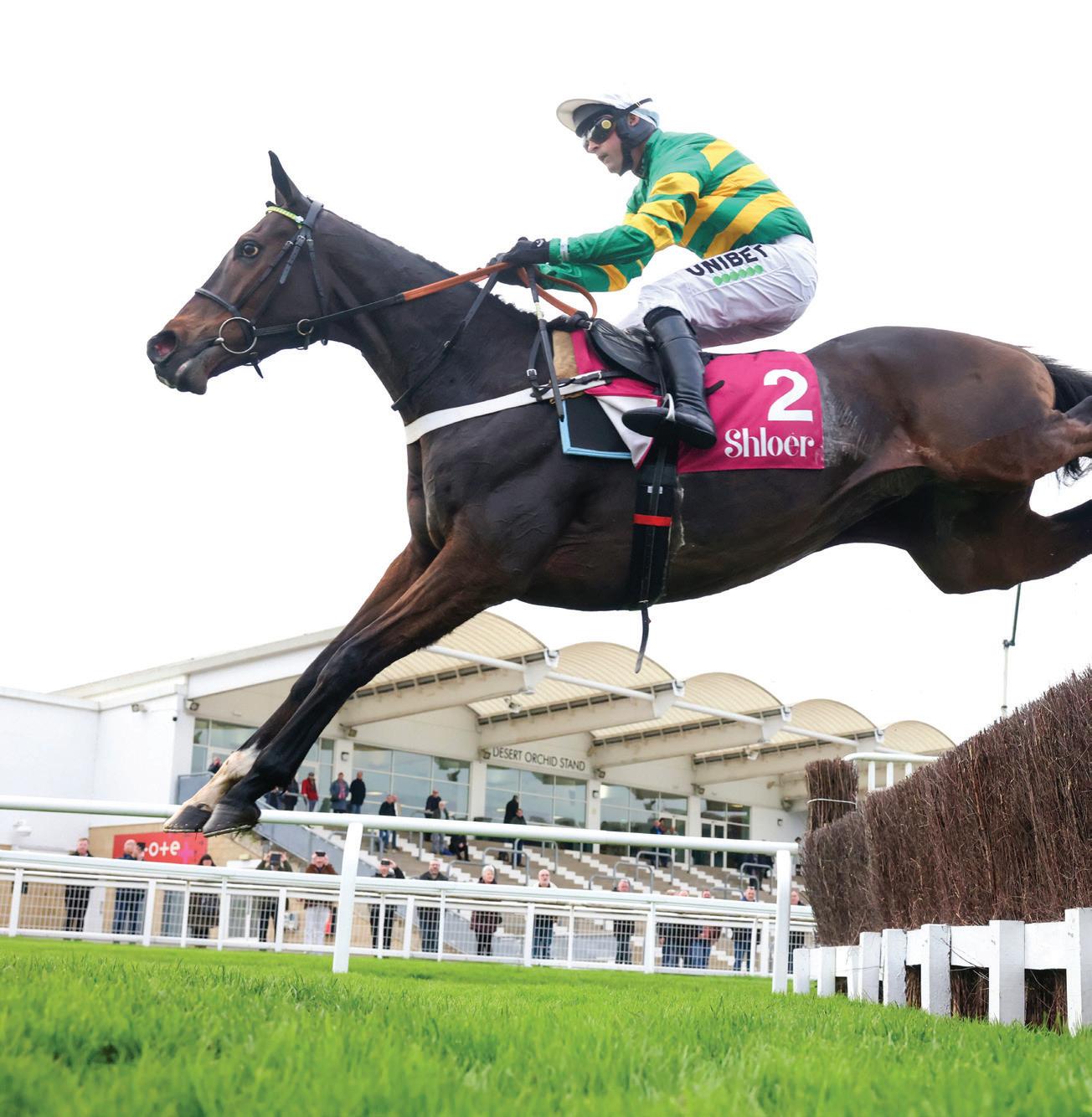
Jonbon, winner of the Tingle Creek Chase 2023 and 2024
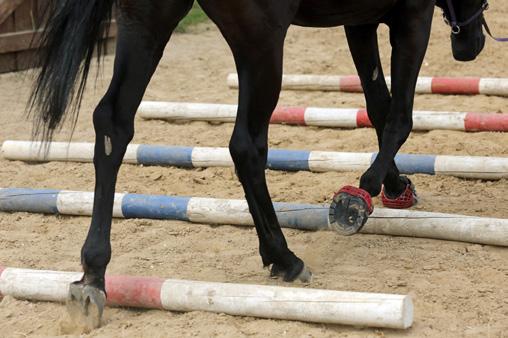
• Take-off markers can encourage consistent correct take off points, which in-turn improves bascule quality/jumping efficiency and decreases injury risk. Horses develop a better eye for a fence by associating distance with effort, allowing for more accurate takeoff preparation. This is particularly important in races where decisions are made at high speed, sometimes under fatigue.
• Gridwork exercises , such as bounce fences or one to two stride combinations are commonly used to develop coordination and timing. Gridwork encourages horses to adopt a more compact frame, increase flexion in the hock and stifle, and improve spinal articulation. However, overuse of gridwork can lead to a mechanical, overly rehearsed jumping style due to horses becoming reliant on the rhythm imposed by the grid rather than learning to make independent adjustments.
• Jumping out of a gallop replicates race conditions but presents different biomechanical challenges. Horses must generate sufficient power from a longer stride and adjust mid-flight without the benefit of a collected approach. It is logical to assume that horses trained regularly at gallop over fences will display more consistent take-off and landing patterns. It is also considered to have a positive effect on limb shock absorption due to stronger muscle recruitment and joint control. Still, if overused or poorly executed, galloping fences can reinforce bad habits and/or exacerbate innate biomechanical issues. Horses may flatten their jump excessively or incorrectly anticipate takeoff, thus increasing the risk of stifle or suspensory injuries.
• Schooling on hills can offer unique biomechanical benefits. Uphill jumping increases demand on the hindlimbs, promoting hindquarter engagement of the gluteals and semimembranosus muscles crucial for a powerful take-off. Conversely, downhill jumping challenges the horse’s balance and encourages better forelimb deceleration control during landing. Research has shown that training on uphill gradients significantly increases activation in the longissimus dorsi and biceps femoris muscles in thoroughbredss compared to flat-ground training (Takahashi et al., 2014). That said, downhill schooling must be used judiciously. The additional forces placed on the distal limbs and hocks can exacerbate underlying conditions and cause unnecessary strain if used flippantly.
• Jump schooling on varied surfaces has numerous benefits from a physiological point of view, such as; increased proprioception, improved muscular recruitment and engagement and quicker recovery post landing. From a psychological standpoint, varying terrain reduces monotony and mental fatigue, thus improving concentration and willingness.
All the above schooling tools and techniques possess different advantages and should be chosen on an individual basis. Improvement of jumping technique and fitness is absolutely achievable; however, the over use or incorrect use of schooling techniques can have the opposite effect. Also, excessive repetition of a single fence type or layout reduces adaptability and may lead to habitual errors. Equally important is recognising signs of fatigue, such as reduced jump height, shortened stride after landing, or repeated take-off errors, and ensuring that technical schooling is balanced with mental freshness to maintain motivation and prevent over-schooling. A balance between repetition to build muscle memory and variation to build decision-making and adaptability is the take-home message.
An increasing range of technologies are now available to assess and monitor equine biomechanics, each offering different levels of precision and practicality for field use. High-speed video analysis remains one of the most accessible tools, enabling frame-by-frame review of gait patterns, joint angles, and jump patterns through readily available smartphone apps or more advanced motion-capture systems. Inertial measurement units (IMUs) and wearable motion sensors provide stride-by-stride data on limb symmetry, stride length, acceleration, and impact forces, often in real-time and during normal ridden work. Surface electromyography (sEMG) is increasingly being applied to measure muscle activation patterns, allowing assessment of back and hind-limb musculature during different exercises.
Effective jump schooling is about more than clearing fences cleanly—it’s about developing movement patterns that are efficient, repeatable, and safe under race conditions. Combining traditional horsemanship with scientific insight offers the best of both worlds: a methodical, measurable approach to preparing racehorses that jump well, recover fast, and stay sound through the season and beyond. To conclude, I feel it is important to pay some respect to how resourceful our racehorses are. Often dealing with unfavourable going, interference from fellow competitors and at times unfamiliar courses and fences, they put their heart and soul into their jobs. It is safe to say, biomechanics will always play a vital role, but nothing tops a horse with the will and determination to succeed and a huge heart to match!
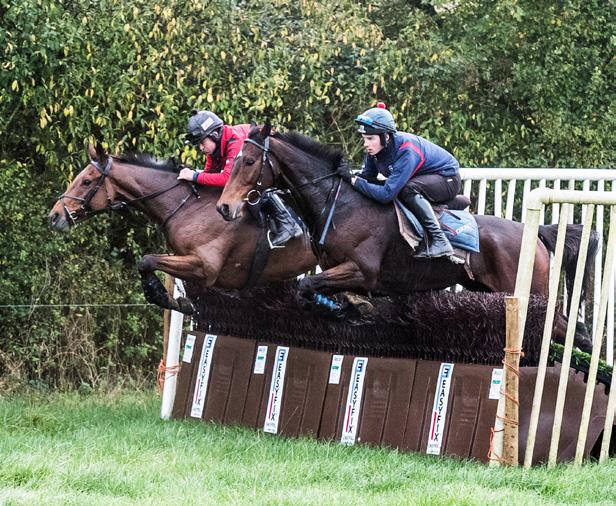
The Flexineb® E3 is a portable, silent equine nebuliser. Battery or mains-operated, it can be used for daily airway maintenance therapy prior to racing and the targeted delivery of inhaled medication for the management of equine airway disease.
Nebulisation of non-prohibited substances complies with FEI General Regulations.

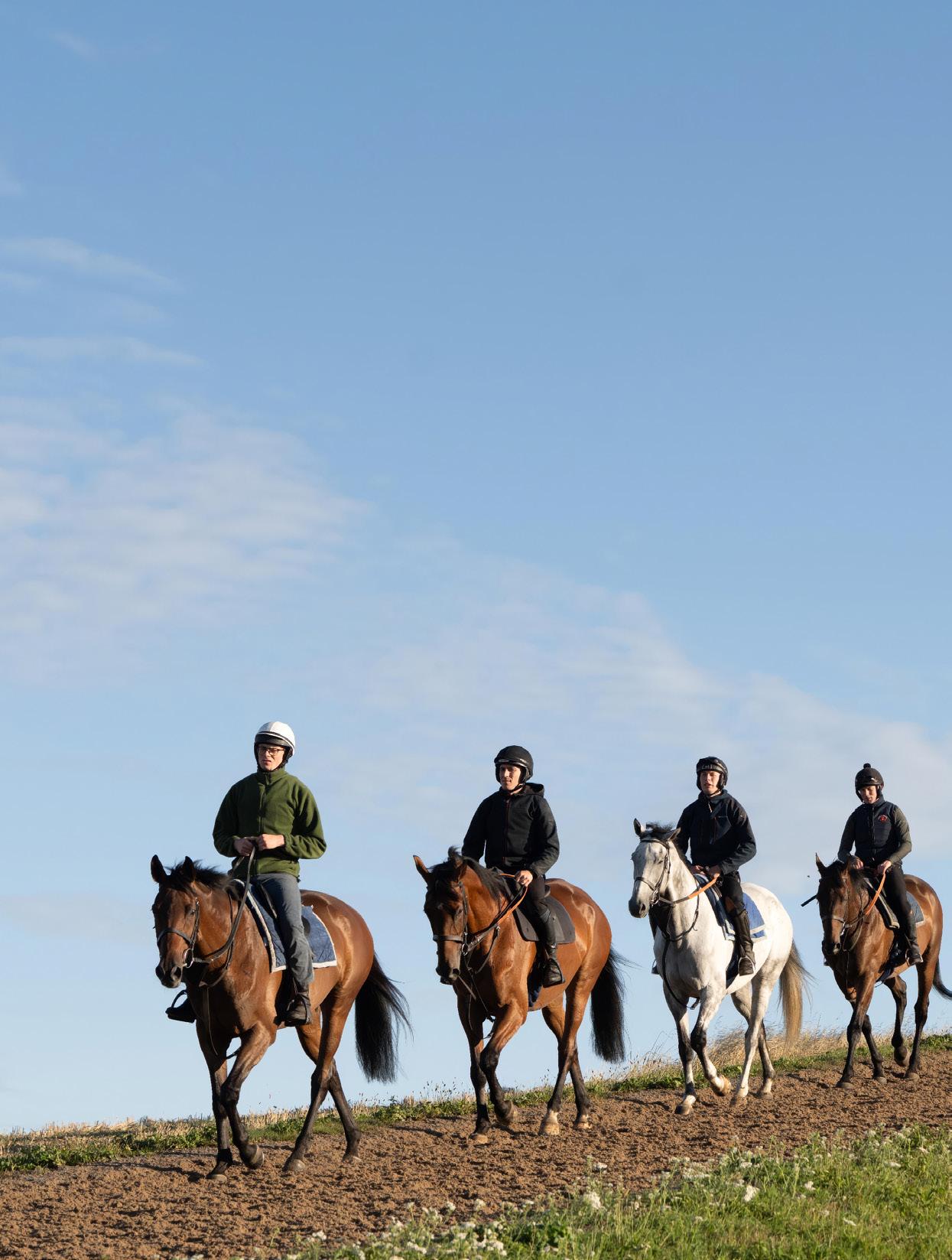
This article must start with an expression of gratitude to the 141 trainers/pre-trainers who gave of their valuable time to respond to our Survey of European Thoroughbred Racehorse Practices. The survey was prompted by the review currently being conducted by the European Commission (EC) on animal husbandry, and its specific focus on horses. The EC has engaged its scientific advisors, the European Food Safety Authority (EFSA), to produce a scientific opinion on the protection of horses, and a technical report on current practices for their keeping. The terms of reference for this work specifically include horses kept for ‘competitive activity’ (eg. racehorses). The report is wide-ranging but will also consider the access that horses do or do not have to the outdoors and to other horses, the periods they have at grass, as well as their nutrition and feeding regimes. It will look at how these husbandry practices affect such things as gastro-enteric disorders; it will comment on how horses’ welfare is impacted by such aspects of their housing conditions as air quality, temperature and lighting (including natural light and visual horizon). More specifically, it will look at:
Social needs … (i.e. access to conspecifics, including in visual, auditory, and olfactory form and including stallions). and
Outdoor access (or lack of), providing the opportunity for grazing and free movement and including the risks related to … the absence of an outdoor enclosure.
EFSA’s opinion will be evidence-based and it will examine the available scientific and other literature which has a bearing on the terms of reference it has been given. This research is limited, but what there is gives further clues as to likely areas of focus.
A matter which appears to be a growing area of concern is around the degree of social contact which racehorses enjoy, and whether this is sufficient for their needs. Discussion of this subject often leads to the specific consideration of the length of time horses spend outside their boxes, especially when turnedout and freed of training or racing duties. It is in this context that the expression ‘the other 23 hours’ has quickly gained currency, often evoking censure: the implication being that racehorses are ‘let out’ for just one hour a day.
The organisation Eurogroup for Animals, has pronounced on this issue. Based on a ‘case study’, it concludes: “Looking at the holistic picture and multiple indicators, including animalbased indicators, demonstrates that the positive experiences for a racehorse do not counterbalance the negative experiences. When looking holistically at this thorougbred racehorse’s life experiences, it is clear he is not living a Good Life, but rather is having only his basic needs met.”
In our struggle to retain our social licence, anthropomorphism is, of course, a potent enemy and it is easy to imagine the general public being led to compare the ‘fate’ of the racehorse with that of the prisoner, allowed out of his cell to exercise for just one hour a day.

The abstract of a 2019 study Housing Horses in Individual Boxes Is a Challenge with Regard to Welfare (Animals, Alice Ruet, Julie Lemarchand et al.) begins in trenchant fashion:
“Horses are mainly housed in individual boxes. This housing system is reported to be highly detrimental with regard to welfare….” The study duly concluded that: “…the longer the horses spent in individual boxes, the more likely they were to express unresponsiveness to the environment. To preserve the welfare of horses, it seems necessary to allow free exercise, interactions with conspecifics, and fibre consumption as often as possible, to ensure the satisfaction of the species’ behavioural and physiological needs.”
Time out of the stable is, of course, not the only measure of social contact. Even when in their boxes, there are opportunities for social contact between horses. The degree and quality of such contact is variable, depending on the design and layout of the boxes.
One of the most relevant studies that has been conducted in this area, Racehorse welfare across a training season , a doctoral thesis by Rachel Annan et al., was published in Frontiers in Veterinary Science in 2023. This paper noted:
“Our results suggest that a racing season indeed represents a form of challenge for a racehorse’s welfare state, but that some specific factors—such as opportunities for social contacts and increased visual horizons—have potential to help horses overcome the challenge.”
“If racehorses are expected to work at the upper limit of equine athletic ability, it is important that, overall, they experience many positive experiences in order to ensure a positive welfare balance.”
“Our results highlight the importance of the opportunities for social contact for racehorse welfare. All horses were individually housed in a variety of types of stables with differing amounts of social contact both between, and within training yards. Thereby, 54.1% of horses had physical social contact when stabled, which meant they could at least sniff another horse through a social panel or grill between stables, a low wall or at the stable door. This level of social contact is higher than that reported in the leisure horse population where 39%–44% had physical contact while stabled. In our study, access to physical contact (sniff or head and neck) was associated with more lying down, suggesting a greater level of relaxation and quality of sleep. Indeed, horses are more likely to lie down in a sternal or recumbent position when they feel safe and there are social companions nearby. Furthermore, horses can also only enter paradoxical Rapid Eye Movement (REM) sleep when they lie down in a recumbent position, making lying down an essential activity. Providing opportunities for social contacts appeared therefore positive for the welfare of the present racehorse population.”
“As a social species, the importance of well-established bonds with known conspecifics has been well documented as an essential welfare need for horses. Our results suggest that efforts to increase social contacts for racehorses have been made within the racing industry and has positive repercussions. However, improvement is still required as the majority of social contacts we observed were still restricted to nose-to-nose contacts, usually through bars. Previous research indeed showed that even if horses are intrinsically motivated to access any level of social contacts, full-body contacts are necessary to the establishment of social relationships. As we observed in our study, racehorses are still mainly housed in individual stables during training, as protection from injury and cross-contamination of pathogens is a major concern. Yet, in 2020, the International Federation of Horseracing Authorities published minimum horse welfare standards, which
included “opportunities to bond with other animals as a desirable condition to optimise horse welfare.” The Irish Thoroughbred Welfare Council also included social contact as an important aspect of horse welfare in their recently published welfare principles. Finally, social contact was highlighted as “the best life” scenario for racehorses by stakeholders within the racing industry. Altogether, these elements suggest that pursuing the efforts to increase social contacts for racehorses would be an effective and concrete way to improve equine welfare in the industry.”
Studies such as those above, together with the terms of reference of the EC study, helped us shape our questionnaire, which concentrated on stabling, feeding and turnout (both when in and out of training).
A purpose of our pan-European survey - believed to be the first of its kind - is to enhance knowledge of the current situation on the ground in racing yards across the continent. What are trainers’ practices, and what are the experiences of the horses in their care? Are these static, or evolving?
Beyond this, it is hoped to stimulate thought and discussion among trainers and racing regulators, in order that we, as a sector, can best contribute to the broader discourse which is bound to flow from the EC’s review.
We received 141 responses from nine countries: Belgium, Denmark, France, Germany, Great Britain, Ireland (Republic and Northern), Spain and Sweden.
The vast majority were trainers, but 6 responses (4%) came from pre-trainers. There was a good spread of trainers over the two codes. While half described themselves as ‘predominantly flat’, 27% were ‘both flat and jump’ and the remaining 23% were ‘predominantly jump’.
Similarly, there was pleasing representation of all sizes of yard. The survey asked: ‘What is the approximate number of horses you have in your yard at peak season?’ For 31%, this number was up to 15; 39% reported peak totals of between 16 and 35 horses and 30% gave a figure of 35 horses or more.
<15 horses = 31%
16-35 horses = 39%
36+ horses = 30%
Twelve yards had 100 or more and five had between 150 and 200.
The figures indicate that, between them, our respondents accounted for over 5,000 horses and over 6,000 boxes.



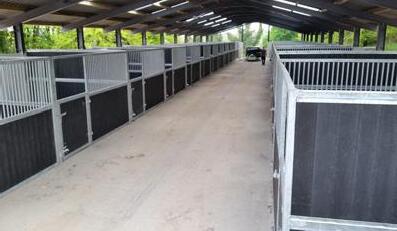


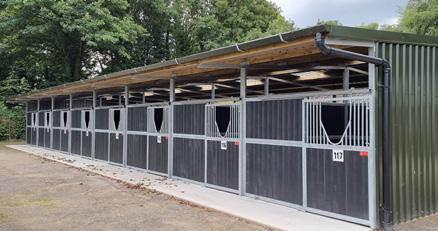

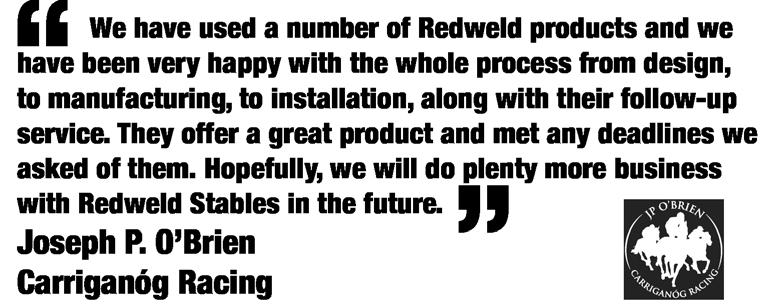
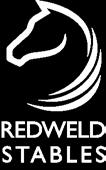
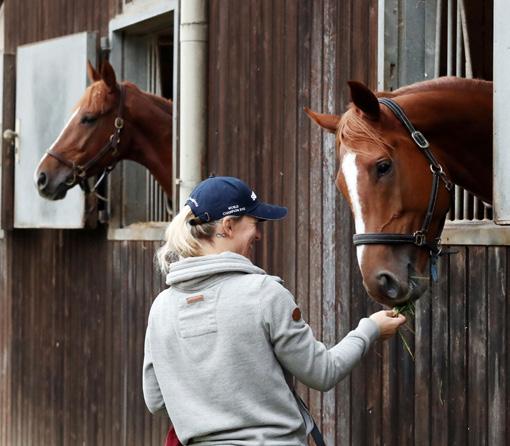
Our responses indicate that, out of the 5,000 or so horses covered, fewer than 150 are stabled in groups. Over 97% are housed individually.
We asked trainers about the design of their boxes, with specific regard to the degree and nature of the contact with other horses that they afforded. Specifically, we asked whether the horse could see out, could put its head out, could see other horses, could do so when lying down (eg. through floor to ceiling grills), could sniff/ touch noses with another horse, could interact with another horse, could see a short distance (eg. to stables opposite), or a long distance (eg. a large courtyard or field), or could see people (eg. working in the yard). Trainers were asked to tick all those which were applicable. The breakdown of responses is shown below.
With regard to the feeding regime which trainers adopt, we first asked: “What percentage of time do your horses have free access to forage (hay / haylage etc.)?”
Hours/day when horses have free access to forage
Two-thirds of trainers give their horses free access to forage all, or virtually all, of the time. All but 15% give access for at least 16 hours daily. We then asked: How many times per day are your horses fed forage?
Almost universally, trainers’ horses can look out of their box and see other horses. Over 95% replied that their horses could put their heads out of the box door/window and see people. Seventy per cent said their horses could see a long distance from their boxes. A little over half said their charges could interact with another horse, and sniff/touch noses with another horse. One quarter of respondents had boxes which allowed the horse to see another when lying down.

There is a broad spread of practice when it comes to the number of times a trainer’s horses are fed forage. The most popular answer was 3 to 4 times a day (40.8% of trainers). Around 30% of trainers forage-fed their horses on an adlib basis, with around a quarter of trainers feeding once or twice daily. A small percentage (6.4%), fed four or five times a day.
We next asked: How many times per day do your horses receive hard feeds?
times
times
times
There is greater consensus when it comes to frequency of hard feeds, with 84% choosing their feed their horses three or four times a day. Those who feed less frequently and those who feed more frequently are roughly evenly split.
We defined ‘turnout’ as more than 15 minutes on a field or pen. We asked “What percentage of your horses in training are turned out daily when weather conditions allow?”
More than half of respondents said they turned 90% or more of their horses out every day. Fewer than one trainer in eight answered that they turned out less than 10% of their horses daily.



We turned next to the typical duration of turnout, asking: “On each occasion, for how long would your horses typically be turned out?”
As can be seen from this chart, the most popular duration was 1 to 2 hours, with significant numbers of trainers selecting 2 to 3 hours and 3 to 4 hours. For more than a quarter of trainers, turnout spells of between 4 and 24 hours were the norm.
The great majority of trainers turn their horses out on grass. For 72%, this was the sole surface, with a further 15% divided between grass and another surface, variously described as ‘sand’, ‘woodchip’, ‘all-weather’ or ‘dirt’. Where more than one
surface was used, the reason was seasonal and weather-related, with grass favoured in summer and the alternative surface in winter. But one trainer’s choice was based on the horse’s gender, answering thus: “Fillies on very large grass fields in groups/colts on 400qm sand paddocks.”
One respondent elaborated further: “Mainly grass or sand or inside round pen (sand mixed with fibres - great to have a roll, it’s soft), indoor manege = sand surface.”
Indoors = 7%
Outdoors = 93%
Ninety-three percent of respondents turned their horses out outdoors.
TURNOUT: ACCESS TO WATER
Yes = 89% No = 11%
Almost 90% of trainers reported that their horses had access to fresh water when turned out.
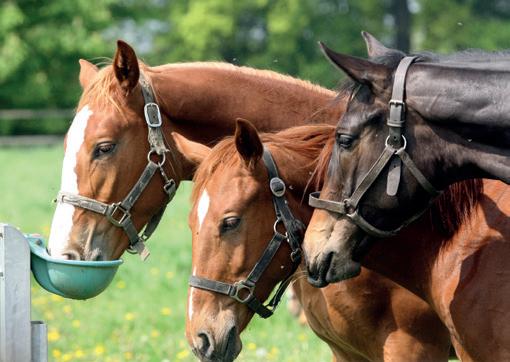
We then asked: “What is the approximate area (square metres) of the space in which they are turned out?” There was great variability in the answers here, as shown by the chart.

We next asked whether trainers turned their horses out alone, or with others. Two thirds of the replies indicated that at least some horses were turned out with others.
(To help interpret these figures, it might be noted that 1 acre is approximately 4,000 square metres, and a hectare is 10,000 square metres).
Almost universally, when asked: “Do they have forage availability (grass, hay, etc.)?”, trainers answered affirmatively.
A majority (54%) of trainers provide the horses which they turn out with shelter against the sun or rain.
Mixed
Where there was a mixture of solo or accompanied turnout, the most common reason cited was gender based, with fillies and geldings, but not colts, being trusted to coexist peaceably. For some, the decision was made on the basis of the horses’ character or friendships with other individuals. Several trainers set a limit on the numbers put out together.
Trainers were asked: “If they are turned out alone, do they have the opportunity to (a) sniff/touch other horses (over a fence), (b) see other horses or (c) neither of the above.” It can be seen that all but 4% of trainers give their solo turned-out horses the chance of some contact with others, with a majority allowing them to sniff and touch another horse.
Sniff/touch other horses (over a fence) See other horses

One aspect of a racehorse’s life that can easily be overlooked is their time spent out of training. We sought to build up a picture of racehorses’ experiences during this ‘downtime’, when not in training and consequently not in their trainer’s yard. We asked: “When out of training, are you aware of any instances where horses you train are not either at grass 24 hours a day or at least part of any day (stabled at night for example)?”
Almost universally, it was reported that, when out of training, horses are at grass for all or part of each day, other than when injured or ill. Many yards reported that they come in at night, some said that they would be housed in inclement weather.
Next, we enquired: “While out of training, typically, for how long each year would your racehorses not be housed in the yard?”
For the great majority, this ‘downtime’ lasts for one to three months. One respondent explained: “It varies a lot. Every horse is an individual and their holidays and how they are turned out is based on their health and mental well-being.” Where trainers specified a typical length of time out of the yard, the spread of responses is shown in the chart below.
We enquired: “If future legislation were to require horses to be turned out, please select the option that best applies to your situation”:
• It would be impossible to accommodate this.
• I could accommodate this, but only after making extensive and costly adjustments.
• No problem, I have the facilities to do this already.
Thirteen per cent of trainers stated that there was no time out of the yard. Around one quarter gave a figure of 1 to 2 months, with 38% saying 2 to 3 months. One quarter of trainers reported ‘down-time’ of three months or more.
No problem Possible but costly
Effect on respondent
Half of the trainers explained that they could cope without a problem with any such theoretical future legislation. Thirtyone per cent could do so, but that it would require costly and extensive changes. Eighteen per cent replied that it would be impossible for them to comply.
We were keen to ascertain the extent to which trainers were settled and static in their approach to such matters as box design and turnout, or, on the other hand, were making changes in these areas. We asked: “Have you recently changed your practices in any way relevant to the above (for example, modifying your boxes or turnout regime)? If so, please describe what you have done.”
No fewer than 30% replied that they had modified their practices in recent years in regard to their housing or turnout regimes. The changes they cited were many and varied. Here is a selection of their comments:
“ Increasing air, light and social contact in the boxing, adding a paddock and utilising a forest riding area for turnout.”
“ Increasing size and modifying box design so as to allow mutual visibility (eg. adding a window in the back wall, or contact/interaction with others.”
“ Taking out the top grills to allow grooming and touching.”
“ Increasing ventilation in the stable block.”
“ Bigger boxes and daily turnout (suitably rugged if inclement weather).”
“ Increasing the number of horses turned out in pairs.”
“ Creating more opportunities for colts to be turned out.”
“ I created 3 paddocks and a large meadow for their recovery and well-being.”
“ I have changed from having water buckets to automatic drinkers in the stables. I previously preferred to know how much water a horse drank on a daily basis but I have not had any issues since switching.”
“ We’ve put webbings in our boxes (American style) to have open doors, more sunshine and better airflow in the boxes.”
“ We built 400qm sand paddocks to bring all colts out 7/7 for at least 1.5 hours; (fillies on big fields in groups).”
“ In the past only groups of 2 horses were outside for 2 hours; now all horses are together outside in two groups (racehorse/riding horses and old racehorses).”
Lack of additional space was a common problem, so some initiatives were aimed at making improved use of the space available: “we constantly move the pens and rest the paddocks, harrow, roll and re-seed when necessary”, or converting areas especially prone to muddying into all-weather areas: “Added more all weather areas. Our rainfall is high so fields get muddy quickly which then causes the horses to be miserable.” Also “we work hard to find pre-trainers who can turn horses out.”
However, some trainers were keen to point out that turnout is not a simple panacea, as is reflected in these comments:
“ Four years ago we started turning the horses out for 2 hours after exercise. Not all horses will settle turned out though and have been upset or even injured themselves.”
“Geldings and fillies in training are turned out in pairs to minimise risk of injury. We used to turnout in larger groups of four but risk factor was higher. We don’t turn out colts in training - risk of injury to themselves is too high. Colts can be turned out individually in pen or lunge ring if needed.”
“ More turnout places available in the past but it is far from certain that the horses have benefitted from this.”
Finally, in this section, we enquired as to future plans: “Would you consider doing so in the future? If so, please describe what you would consider doing?”
Almost half of those who responded replied in the affirmative. Here are some examples of their plans:
“ Build more paddocks for our colts to be able to keep each one out for longer.”
“Get a loan to do fencing on the 10 ha I have bought. Safety fencing. Create more individual paddocks, around the yard, to turn horses out for a few hours a day. Create better access to the private ponds, to walk through/ play. Swim? Re-installing solarium, a treadmill.”
“ If I had the money, I would prefer all my horses to live outside as it’s their nature to live in groups. It keeps them relaxed and happy.”
“Going forward I hope to continue to have a large window area in each stable and I would choose gates rather than standard doors as far as is practical.”
“ I am considering altering the partition walls in my stables to allow horses to see each other and interact with the horses adjacent to them. The cost of this is a factor though.”
“ I think turnout is very important and a great way to keep a horse fresh and happy. If it were possible, all my horses would have some turnout each day.”
Again, though, a few trainers struck a cautionary note about the concept of turnout:
“ I find there is always one or two that can’t be turned out due to injury or they are a danger to themselves therefore a legislation would have negative impacts on horses welfare.”
“ We have turnout but would struggle to turn every horse out every day, the reality is not every thoroughbred is relaxed and settled turned out when in full training. We have a variety of box settings and they are all large, with direct sight of horses again some horses are happy with lots of opportunity to interact with others whilst other prefer a more isolated setting.”
“There are pros and cons to turnout and the fact that people have come to perceive turnout as a principal requirement of good husbandry, doesn’t necessarily mean it is right.”
The implications of the EC’s review should not be over-stated. We are led to expect that what will result will be guidance, rather than new legislation. But, even if that proves to be so, individual governments may choose to introduce national legislation. Some European countries already have laws which require turnout. Norway requires horses to be turned out/exercised for a minimum of two hours daily; Sweden and Finland mandate daily turnout without specifying the duration. Sweden requires conditions under which horses can exhibit ‘natural behaviour’, (ridden exercise does not count as ‘turnout’).
It is important that racing understands the realities of the way our horses are kept and looked after and hopefully this survey provides a step forward in that aim. The survey highlighted the weight given by trainers to individual care regimes, reflecting a widespread recognition that horses are individuals, with different needs and preferences.
What appears very clear from the responses is that European trainers are indeed sensitive to the welfare needs of the racehorses in their care, and are far from resistant to considering where further improvements might be made. This should not surprise us, on the basis that a happy racehorse will be one who will perform better on the track and therefore it is in trainers’ own interests to provide the best possible environment for their horses. It may well be that this flexibility will prove critical in the long-term retention of our social licence
References:
1 Eurogroup for Animals, White Paper: Good Welfare for Equids (2024).
2 Ruet, Alice, et al. “Housing horses in individual boxes is a challenge with regard to welfare.” Animals 9.9 (2019): 621.
3 Annan, Rachel, et al. “Racehorse welfare across a training season.” Frontiers in Veterinary Science 10 (2023): 1208744.



Organised by The Irish Field, the “AI in Equine” Conference was held on 9th September 2025 at Naas Racecourse, sponsored by CIRCET and supported by the Department of Agriculture, Food and the Marine.
This event brought together trainers, breeders, technologists, regulators, and veterinarians to explore how artificial intelligence (AI) is shaping the future of the equestrian industry.
The event was MC’d by Brendan McArdle and opened by The Irish Field Editor, Mark Costello, who explained that inspiration came from the recent “AI in Agriculture” conference. The oversubscribed audience highlighted the appetite for serious debate on how AI could transform racing while respecting its traditions.
Delegates were reminded of racing’s deep reliance on tradition and asked to consider how rapid technological change could disrupt long-established roles. Research presented showed that while trainers adopting tech gain new insights, it can also prompt them to second-guess instinct — illustrating the tension between data and experience.
KEYNOTE:
Shaymus Kennedy, CTO of Horse Racing Ireland (HRI), outlined a bold vision for racing’s digital future. HRI is prioritising innovation, investing heavily in data infrastructure to serve as the sport’s “bedrock” for transformation.
He emphasised AI’s dual role: driving efficiency while safeguarding integrity. Horses, he noted, should be seen as “data-generating creatures,” a perspective that creates opportunities but also risks, from deepfakes to AI-assisted betting.
Kennedy highlighted international examples, such as Susumu Fujita’s success engaging young audiences through the game Umamusume Pretty Derby. He also encouraged delegates to watch Oscar Zhou’s TEDx talk “Horses and AI Machines.”
The keynote ended with a call to collaborate on new CyberAwareness and CyberTraining initiatives, designed to help trainers defend against targeted cyberattacks.
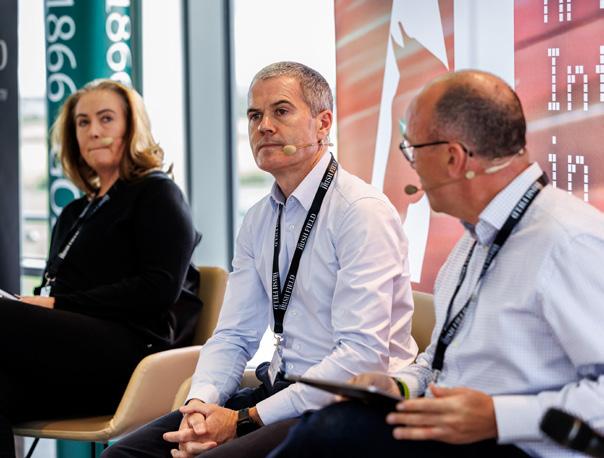
Moderated by Lynn Hillyer, Chief Veterinary Officer at the Irish Horseracing Regulatory Board, this session focused on welfare.
• Rob Sheppard (Ellipse Data) described RaceIQ, which uses trackers to generate live position and speed data, improving media storytelling and offering new welfare insights.
• Marcus Swail (EquiVET Ireland) explained how digital imaging (X-ray, MRI, CT) has revolutionised diagnosis, with AI soon expected to advance gait analysis.
• Annemarie O’Brien (Equimetrics) presented equine monitoring tools V-Pro and S-Pro, designed with trainers in mind. She stressed that technology must empower equestrians to make better decisions.
Pricing models were shared, including affordable rentals, making adoption more feasible for breeders, vets, and trainers.


Chaired by Mark Boylan (The Irish Field), this session explored using AI for performance and fan engagement.
• Will Duff Gordon (Total Performance Data) explained how tracking systems are being adopted worldwide. His model brings new money into racing by selling products to bookmakers, aligning success with industry growth. TPD also uses AI to instantly summarise races for fans, introducing concepts like stride length and speed.
• Patrick Harty (Trainer) shared his cautious adoption of tech, noting that trainers should first focus on documenting observations before diving into advanced sensor tools.
• Valentin Rapin (Arioneo) showcased wearable sensors (Equimetre and Equisense) used in 32 countries, providing ECG, GPS, and locomotion data. Arioneo combines hardware with training and AI-driven analysis reports to ease adoption.





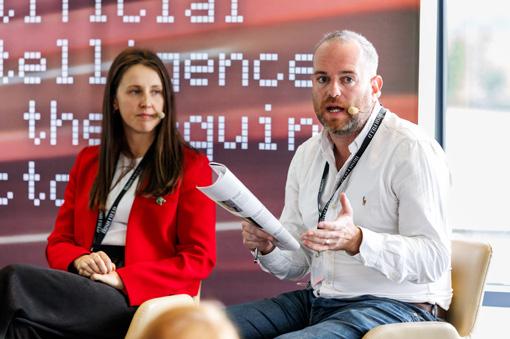
Moderated by Kevin Blake (Racing & Bloodstock Analyst) this panel looked at AI in bloodstock. Blake argued that the thoroughbred may be “maxed out” after generations of selective breeding, raising debate about whether performance can still improve.
• Tom Wilson (Racing2) demonstrated AI pedigree analysis, breeder rating systems, and computer vision for conformation and gait, already applied to 25,000 horses at sales.
• Dr Sonja Egan (Horse Sport Ireland) described using genetic data, including hair samples, to improve breeding decisions, while noting gene doping as a potential existential threat.
• Anna McKenzie (Pythia Sports) explained how machine learning is used to predict race outcomes and spot talent at sales, a service now being commercialised after early success.
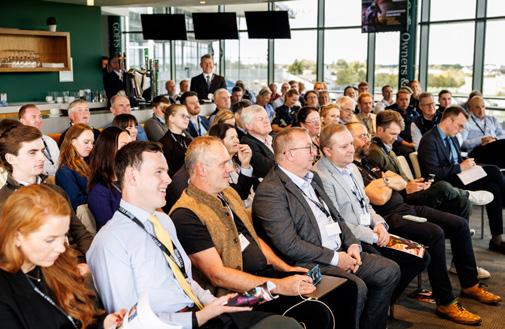
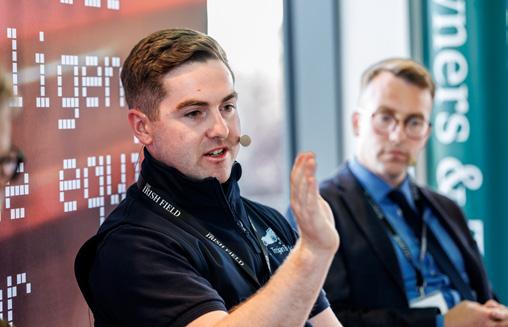
Chaired by Judith Faherty (The Irish Field), this session gave practical advice for businesses.
• analysis service using standard smartphone video, cautioning startups about data entry demands.
• including innovative marketing hacks and the use of AI to generate commentary scripts. He noted that AI is also helping with accounting and other administrative tasks.
• but highlighted AI’s broad potential, encouraging equine professionals to apply it even in simple productivity tasks.
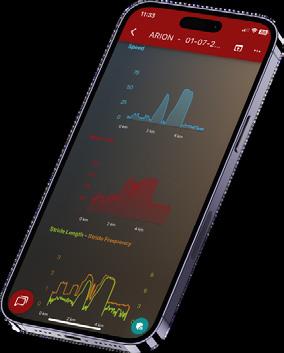

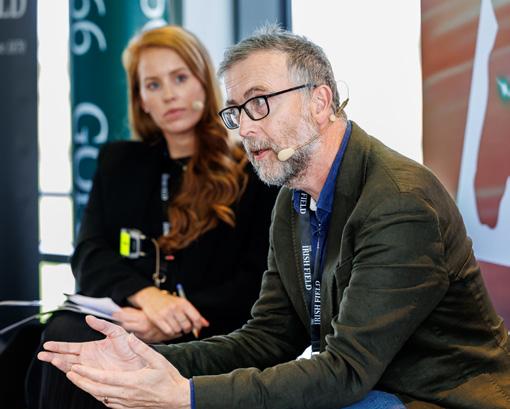
The conference made it clear that AI will shape every part of the equine industry from training and performance to welfare, breeding, integrity, and fan engagement. The challenge lies in balancing innovation with tradition, ensuring technology serves the horse, the sport, and its community.
It was fascinating how speakers were referring to horses as “data-generating creatures” but thought it would be interesting to see this perspective expanded so data scientists can better appreciate horses as the most complex “data-gathering noble creatures” known to man.



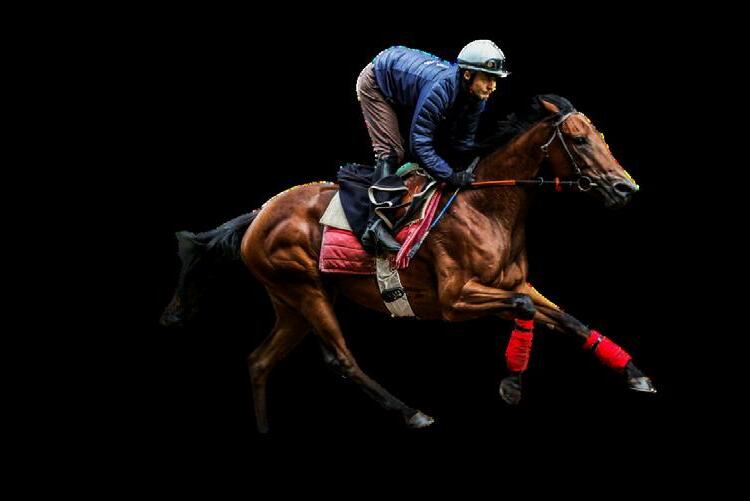


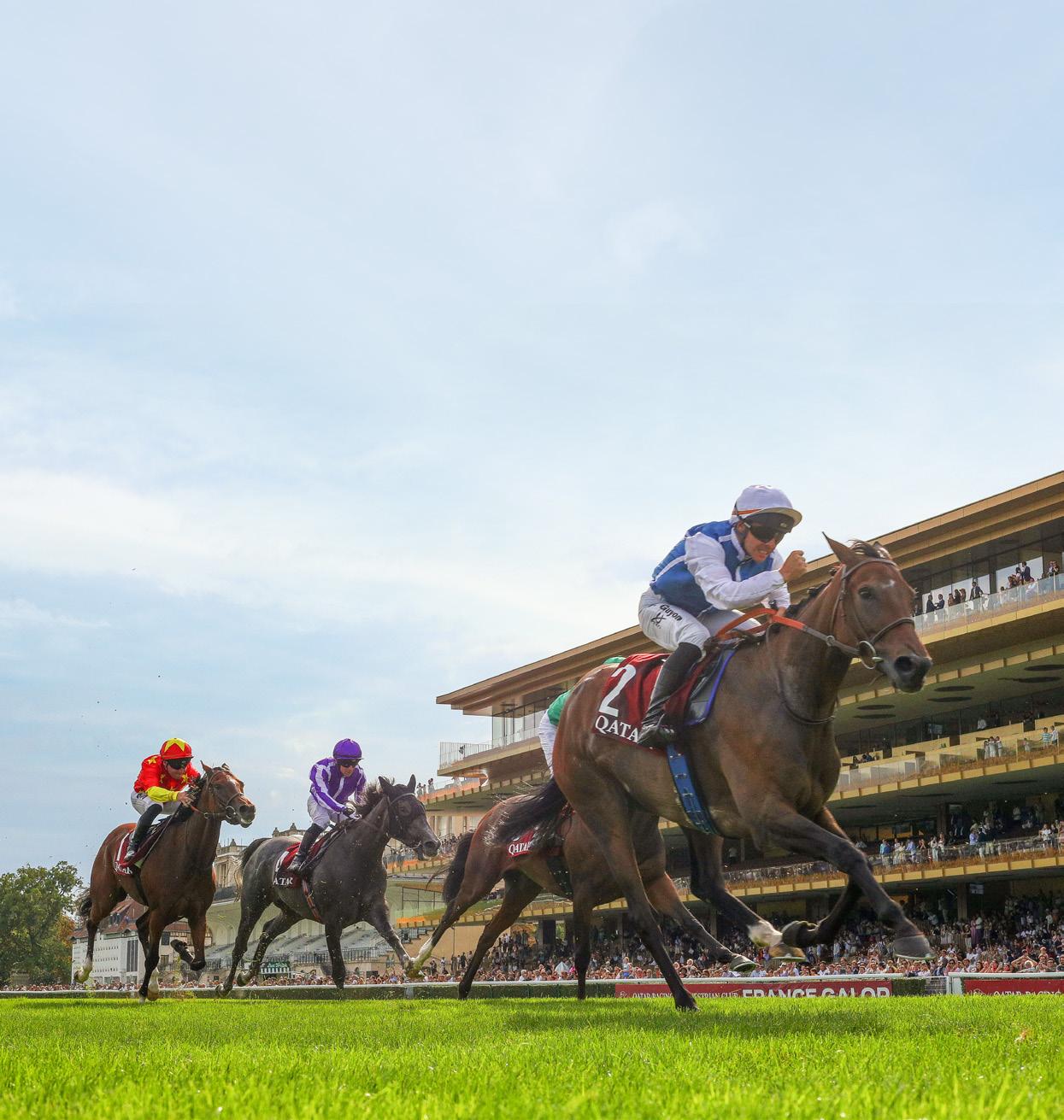
Born in Belgium and raised at the dual-purpose gallop and trotting racecourse and training centre of Sterrebeek near Brussels where his father Max Hennau was responsible for around 80 horses and was a founding member of the European Trainers’ Federation, Elie Hennau was nominated as CEO of France Galop in January 2024. This represents a return to his roots for the former amateur rider who counts almost 100 wins from 600 rides after teaching himself to ride on a Shetland pony he received for his fourth birthday, and a new professional challenge at a pivotal time for French and international racing.
Why did the position at France Galop appeal?
My father taught me the love of horses and racing, competition and teamwork. That has forged who I am today, both personally and professionally.
My parents pushed me to pursue a career out of racing but when I went to university, I declared that one day I would work in the industry. At 50 years old I was very happy in my role with AXA and didn’t expect to change careers, but I was passionate about racing and couldn’t pass up the opportunity.
France has an extremely rich racing patrimony. We have 233 racecourses, 9000 thoroughbreds in training at around 20 public training centres, and extraordinary people. In addition, we are fortunate that the state understands the relevance of racing, under the guardianship of the Ministries of Agriculture and Budget.
I must also mention the PMU which generates 9.5€ of turnover annually, contributing to prize money and tax for the French state. Finally, the France Galop teams are renowned around the world. I have already proven in my career that I am capable of undertaking important transformations, and determined to take up the challenge for French racing.
France Galop recently held a major promotional event in Paris, « les Chevaux dans la Ville » at the Place de la Concorde. Tell us about the objectives of this operation, and how pleased you were with the results.
France Galop’s signature slogan is “des émotions à toute allure”, (emotions at full speed). Symbolically we wanted to take horses into the city, to the mythical site of Place de la Concorde, to demonstrate the emotions involved with our sport. The operation represented a strong symbol to reinforce the strategy of France Galop’s President, Guillaume de SaintSeine, which is to bring racing back into the hearts of the French public. In France we have 233 racecourses and 2.4 million visitors, which is a significant amount, but we have lost in market share for bettors and many people are unfamiliar with racing and unlikely to consider a day out at the races.
When people come to the races they want to see horses, and so we created a parade ring in central Paris to present our activity, and visitors were glued to the rails to get a close look at the horses. Attendance is important as racehorse ownership is a leisure activity and a large part of the experience is to win a race in front of a full grandstand. Nobody wants to watch a football match when the stadium is empty, even with the best players in the world.
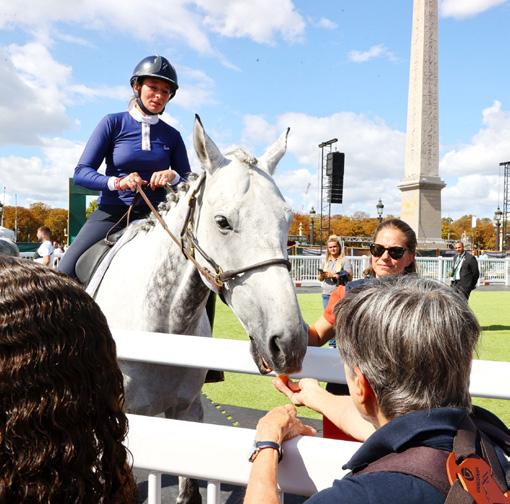
We would like to increase attendance levels to 3 or 4 million, in order to set up a virtuous circle attracting new owners, more runners, and more turnover.
The “Horses in the City” event ticked all the boxes. We welcomed over 35,000 visitors and the operation generated a lot of interest from French media. All our collaborators who took part in the event, such as the AFASEC racing school, the National Racing Federation (FNCH), plus all the professionals who attended, felt great pride to be involved, and the City of Paris officials were able to see for themselves how the public engaged with the sport.
The Arc Trials meeting converted the try with 8000 spectators, up 56% from 2024. This can’t entirely be explained by the Chevaux dans la Ville, but over 300 people used tickets picked up at the Place de la Concorde. We intend to deploy the operation in towns and cities across France in the future.
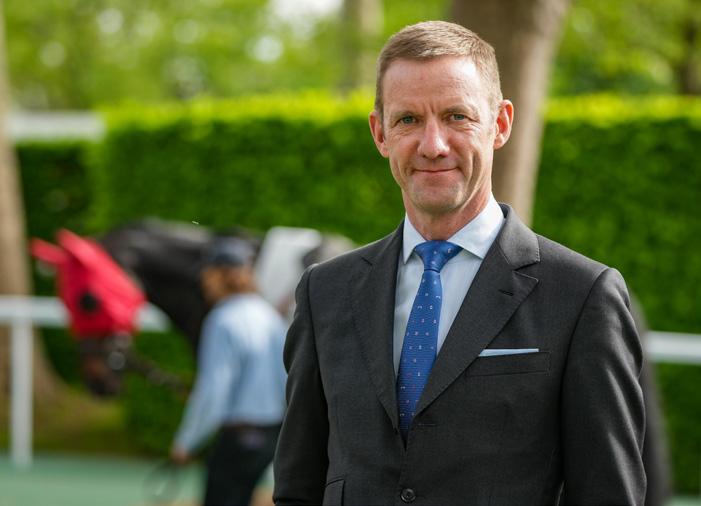
As in many jurisdictions, the financial situation is difficult for French racing. France Galop announced in May a reduction in prize money of 6.9% for the second semester onwards. Explain the choices behind the structure of the reductions in prize money and premiums.
In France we are not confronted by affordability checks, but we do have some restrictions on betting activity, and these plus the economic context and events such as the Olympics which distracted people from racing last year, have had repercussions on betting turnover. The PMU activity still generates 9.5€ billion turnover, but its contribution to racing has decreased from 840€ million to 807€ million, of which 270€ million is prize money for flat and jumps racing. When compared to other European countries, France is the clear leader in terms of prize money. The situation is not grave, but we shouldn’t put our heads in the sand, we need to take responsible action. Rather than a problem, I see an opportunity to ask fundamental questions. When we know that our income is set to decrease by 20€ million to 40€ million, we must take measures to balance the books.
We have a global reduction of 6.9% but at the same time our prize money is very high on a European scale. We have tried to make the most intelligent decisions possible to manage the different parts of the pyramid. At the top of the pyramid, Group 1 races have a different financial model as these are also funded by the entry pool and sponsors. We wanted to maintain international attractivity of our races to attract the best in the world and are proud this year to have so many Japanese runners, which also brings in income and preserves our position as one of the leading racing nations, which in turn will attract major owners to invest in horses in training in France.
Races such as handicaps and claiming contest are important to maintain field sizes and turnover, so prize money for these races has been reduced by 4% in order to support this horse population and their connections.
Owners’ premiums for French-bred horses are also very important to our system and we wish to continue to support these. France is the only nation in Europe with these bonuses.


Structural reforms within the economic plan and notably savings for France Galop on the running of training centres such as Chantilly. How will these affect trainers?
Human nature prefers to keep the status quo so when we make changes there are always reactions, that’s natural. However, to construct the future, our responsibility is to look at the situation and see what we can do differently. For example, training centre fees for Chantilly are 100€ per horse per month, for access to approximately 280 hectares of tracks with upkeep from almost 50 groundstaff. This equates to 3€ per day. There aren’t many leading international training centres which are as good value. Gallop fees are paid by owners and when asked if they saw a problem with paying 50 centimes more day per horse they replied that this is just
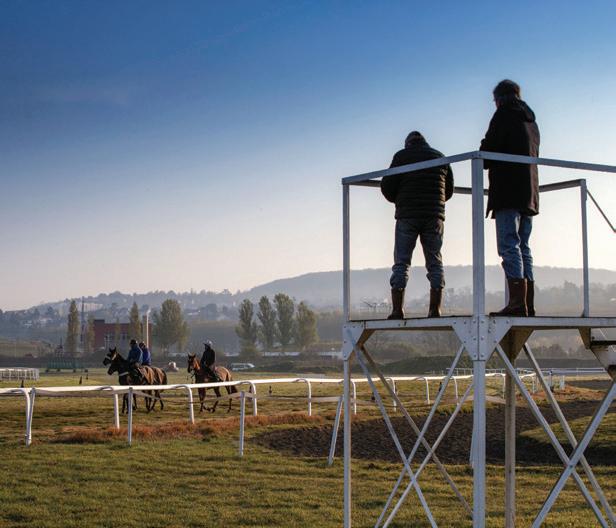
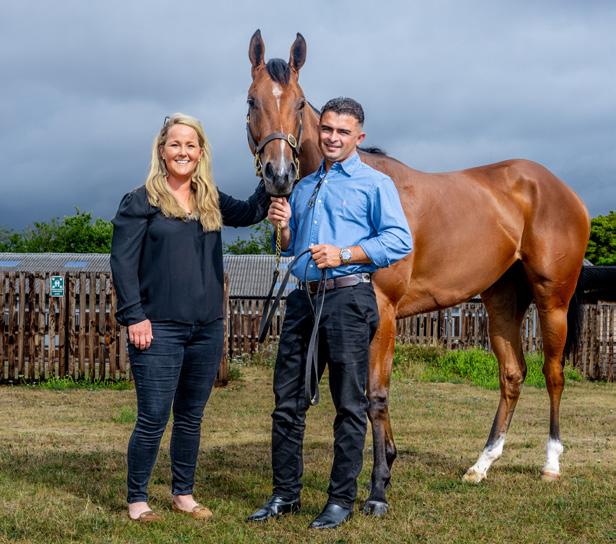
a detail compared with the overall cost of having a horse in training. In the interest of horse welfare, we prefer to maintain the standards and review the pricing, while still remaining competitive, at around 50% of what is proposed abroad.
Chantilly is a remarkable site but France has many other public training centres across the country, from Maisons-Laffitte to Deauville, Strasbourg to Senonnes, and Pau to Marseille. This variety offers something to suit all different training methods and budgets.
We have made reductions but also invested in the future, in our product, promotion, or tracks and facilities. It’s also important to remember that France Galop participates in the funding of regional racecourses, the AFASEC racing school and TV channel Equidia.
Over the past 12 months, two young British trainers, Amy Murphy and Adam West, have relocated to France, adding to an already-cosmopolitan panel of trainers here. Is this something France Galop wishes to encourage and facilitate for the future, and how?
We wish to continue to welcome new talents, whether from France or abroad. It is positive to see many younger members of the profession enjoying great success and we are delighted to have talented people launching their career here.
We have relaxed two licencing aspects which have been an obstacle to trainers setting up here. If a professional has significant experience, the number and level of previous successes can be considered in reducing the requirements for acquiring a French licence. Each case is looked at individually by the panel.
We have also introduced an evolution concerning the language aspect. From now on we have a provision to complete the examinations in English. Speaking Voltaire’s French is not an essential quality to become a good trainer. We prefer our future trainers to have knowledge of horses, racing, clients and staff management.
It is worth noting that there are 115 trainers registered in the Chantilly area, hailing from 20 different countries. Once they arrive, they rarely leave France!
Tell us about the deployment operation that you and the France Galop teams have undertaken in 2025 to meet with trainers across the country to discuss ownership issues.
In France, as elsewhere, racehorse ownership has undergone a transformation. Ten years ago in this country, 60 owners had more than 20 horses, today only 30 own more than 20, which mathematically leaves a large hole. At the same time, we have seen a large increase in co-ownership, however even though we have 20-30% more individual owners, this does not compensate the reduction of big owners.
An ownership plan has been formed to work on the two axes of retaining existing owners and recruiting new ones. These include the popular French picnic at Royal Ascot which was launched several years ago by the FRBC, and a wide range of actions lead by Marie Rohaut and the Owners’ Department, including an operation with the female version of the MEDEF who visited ParisLongchamp and met with leading female racing professionals, partnerships with three-day-eventing, businesses, behind-thescenes tours etc.
It is important to realise that an owner is not a client of France Galop, but a member of France Galop. He is the client of a trainer, and so trainers should be associated with our work, both for retention and recruitment.
We conducted a survey to establish whether France Galop fulfils its role to trainers, and vice-versa. The results are yet to be published but one important element which arose is a need for training, in matters like staff management and client acquisition. As a solution, we hope to establish a partnership with a French university to propose a course to assist new trainers with these aspects. For existing trainers, training modules will be created within the AFASEC to help them in these areas.
With the French Trainers Federation, we are currently discussing the creation of a charter with reciprocal engagements. For example, France Galop expects that trainers communicate regularly with our members, who are their owners, that they communicate in a transparent manner with the press, etc. In return, France Galop will endeavour to provide an attractive ownership experience with high-quality facilities, competitive prize-money and prestigious race meetings.
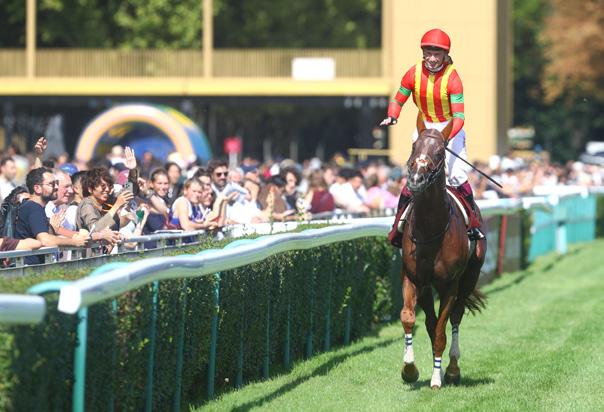

Horses in training typically have a low risk of parasitic worm infections due to their limited access to pasture. However, young horses, especially those newly arrived from breeding farms, may harbour significant burdens and experience related health issues. Once established full-time on racing yards, horses are not generally at risk of worm infection. However, during training, they may be exposed to worms in certain situations, such as during rest periods at grass or regular short turnouts to contaminated paddocks, or when allowed to graze in training areas. For these reasons, it is crucial to regularly monitor horses in training for worm infections.
Nearly all horses are exposed to worms at some point. The most common are the small redworms (Fig. 1) and tapeworms (Fig. 2). Horses become infected with these parasites when they ingest contaminated grass (Fig. 3). Large burdens of small redworms can cause weight loss, diarrhoea or colic, particularly in horses under five.1 This is because some horses can accumulate considerable burdens (10,000s-1,000,000s) of small redworm larvae in their gut wall, and when these larvae emerge in large numbers, they cause severe damage. Tapeworms can also cause colic.2 Immunity to both parasites develops gradually, and some horses remain susceptible throughout life, especially if they graze heavily contaminated fields or have weakened immune systems. Ascarids, a type of roundworm, affect foals and are commonly found on breeding farms. 3 While these worms are less of an issue as foals mature, infections can cause long-lasting lung damage due to the ascarid migratory life cycle.
Other parasites that infect horses include large redworms and pinworms; these are infrequently seen in horses in training due to their sensitivity to wormers (large redworms) and management practices [pinworms]. It’s important to remain vigilant, though, especially when introducing new horses; large redworms can cause a life-threatening colic requiring surgery, while pinworms can cause severe itching around the tail and are challenging to treat.
In small redworm and tapeworm infections, immature larvae are found in the gut or gut wall.
Immature worms develop and grow to adult worms.
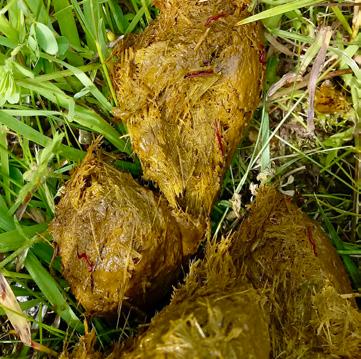

Small redworm adult worms are found throughout the large intestine. Tapeworm adults are mostly found at the junction between the small and large intestine.
Small redworm females release eggs. Tapeworm hermaphrodite adults release eggs within body segments.
Small redworm larvae ingested with grass.
Tapeworm larvae ingested within mites.
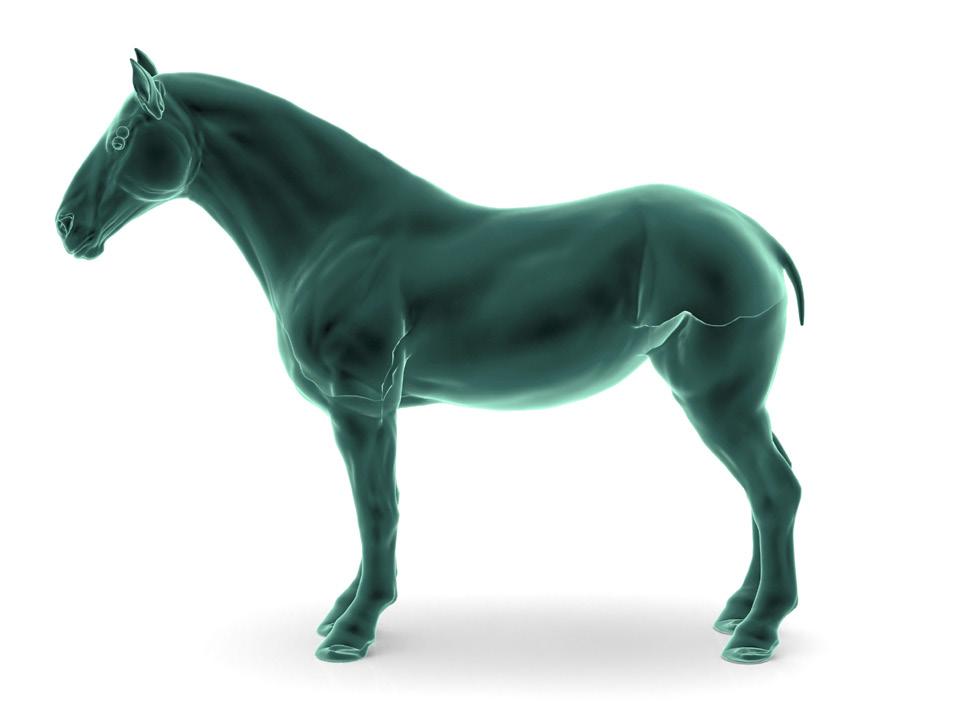
Tapeworm larvae develop in mites to become infective in 8-12 weeks.
Small redworm worm third stage larvae migrate onto grass in as short as 1 week.
Both processes are temperaturedependent: the warmer the conditions, the faster is development.
Eggs excreted in dung.
Regular dung removal prevents infective stages developing.
Fenbendazole Small redworm, ascarids, large redworm and other roundworms
Pyrantel salts
Small redworm, ascarids and other roundworms Effective against tapeworm at double the dose used for roundworms
Ivermectin Small redworm, ascarids and other roundworms
Moxidectin
Small redworm, ascarids and other roundworms
Praziquantel Tapeworm
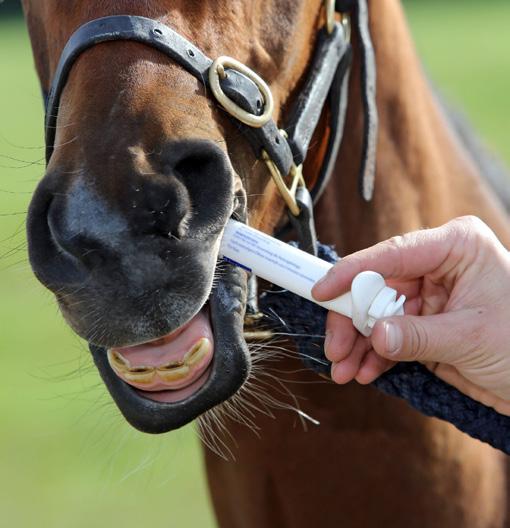
The impact of worms on athletic performance in horses in training remains unclear. One study conducted on healthy Standardbred trotters found that high strongyle (small redworm) faecal egg counts (FEC) did not significantly affect race performance.4 However, since very few horses had high counts in this study, the evidence was inconclusive. High worm burdens, which can cause long-lasting tissue damage in the lungs and gut, will certainly affect performance.
There is a limited selection of medications available for treating equine worm infections, and unfortunately, resistance has been reported against all types of wormers (Table 1). It is therefore essential to balance the need for worming with the preservation of these medicines for horses that have high parasite burdens that require treatment. To effectively manage this balance, evidence-based programmes are necessary. These programmes must include risk assessments, diagnostic testing and the avoidance of practices that contribute to the spread of worms.
Commonly reported in small redworms, with emerging resistance in ascarids
Commonly reported in small redworms, with emerging resistance in ascarids and tapeworms
Commonly reported in ascarids, with increasing reports in small redworms
Commonly reported in ascarids, with increasing reports in small redworms
Emerging reports in tapeworms
Risk assessments, ideally, conducted with a veterinary surgeon, will evaluate an individual’s likelihood of worm infection. The assessment results can then be used to guide decisions on management, testing and treatment. The online tool “What’s Your Worm Risk” (whatsyourwormrisk.com) simplifies the risk assessment process by asking nine straightforward questions about each horse’s profile. Based on the answers given, this tool categorises worm infection risk as low, moderate or high, and offers recommendations for improving parasite control in the individual and their cohort, including:
1. How to use monitoring tools to determine the need for treatment and assess resistance.
2. Management strategies to reduce the risk of infection.
Most decisions regarding worming should be based on diagnostic testing. However, in certain high-risk situations, a strategic worming treatment approach may be more suitable as the available tests do not provide enough information to guide treatment decisions. Such situations include administering strategic treatments to young foals for ascarid infections and treating horses identified as being at high risk of significant small redworm encysted larval burdens. In all other cases, diagnostic tests should be used to inform treatment decisions. These tests include those that estimate worm egg numbers in dung (FECs, Fig. 4) and those that measure antibody responses to worms (Fig. 5).
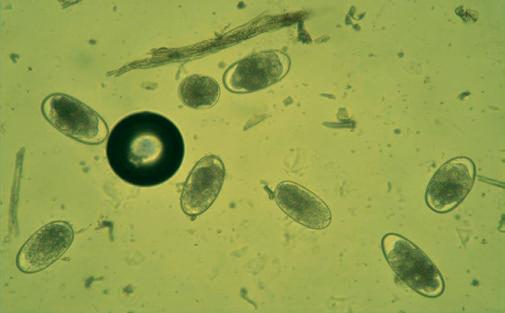

Worms in the intestine stimulate specific antibody responses
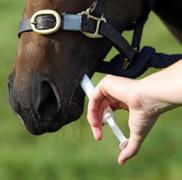
Knowledge of the worm burden level informs the decision to treat or not treat
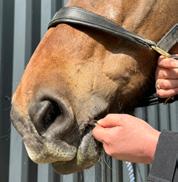
Antibodies to specific worm molecules can be detected in blood and saliva

Following guidelines for each test, the result readout provides information on the burden level of the tested horse
FEC tests mainly determine a horse’s potential for contaminating paddocks with ascarid or strongyle eggs, making these tests especially useful for horses that have access to grazing. In low-risk groups, 80% or more of horses shed only 20% of the eggs being shed, indicating that many horses do not require treatment. Horses should be FEC tested every 12 weeks. Treatment thresholds are indicated in Table 2. For horses that need worming, a follow-up FEC test should be done two weeks after treatment to evaluate the effectiveness of the wormer. FEC tests only detect the presence of egg-laying adult female worms; they do not provide information about the number of immature or male worms present and are greatly affected by the sporadic egg shedding behaviour of tapeworms. To address these limitations, antibody tests are available for detecting small redworm and tapeworm infections.
Faecal egg count tests

Levels of worm molecule-specific antibodies have been shown to correlate with the level of worm burden
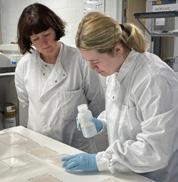
The ELISA method allows quantification of worm moleculespecific antibody to provide a readout
It was previously recommended that all horses be treated for encysted small redworm larvae during late autumn/winter to reduce the clinical impact of these parasite stages. However, this treatment is now advised only for high-risk horses. Routine treatments in low-risk horses contribute to resistance. Veterinary surgeons can assess small redworm burdens in individuals using the Small Redworm Blood Test (Austin Davis Biologics). This test measures specific antibodies to determine if horses have low worm counts that do not require treatment. Studies indicate that, using this test, high proportions of low-risk horses, such as sport horses, harbour low burdens of small redworms.6
Tapeworm antibody tests are available in two formats: the EquiSal saliva test and the Tapeworm Blood Test (both Austin Davis Biologics). These measure specific antibodies that indicate the level of tapeworm infection and reliably identify horses with
PARASITE(S) DETECTED RECOMMENDED
Roundworm (small redworm, large redworm, ascarid, lungworm) eggs and tapeworm eggs
Small redworm blood test Small redworm (cyathostomins)
Tapeworm tests Tapeworm (Anoplocephala perfoliata)
Offered by specialist labs to differentiate small redworm from large redworm larvae
Strongyle eggs (mostly small redworm): 200500 eggs per gram
Ascarid eggs: detection of ascarid eggs in horses in training warrants treatment
Total small redworm burden thresholds are provided with the test results. These are 1,000, 5,000 and 10,000 small redworm thresholds
Blood test: ‘Borderline’/‘Moderate/High’ serum score
Saliva test: ‘Borderline’/‘Moderate/High’ saliva score
Detection of large redworm larvae warrants treatment of the tested horse and all horses that share grazing with it.
Large redworm eggs cannot be discriminated from small redworm eggs. Larval culture is required (see below).
Sensitivity for tapeworm infections is low.
Attending veterinary surgeon selects the small redworm burden threshold for treatment based on a horse-specific risk assessment
Studies show that all horses with a potential disease-causing burden of >20 tapeworms were diagnosed correctly 5
Larval culturing and worm identification service is now available in the UK from WestgateLabs.co.uk
over 20 tapeworms (burdens above this level have the potential to cause disease 7). Horses should be tested for tapeworm once or twice a year, depending on the assessed risk level and ongoing test results. Many horses do not need regular tapeworm treatments; analysis of over 160,000 EquiSal results revealed that over two-thirds of horses tested did not need worming.6 If multiple horses do test positive on a yard, it is important to identify the source of the infection and improve management practices to reduce transmission. All horses should be tested at the same time. It is advantageous to combine small redworm and tapeworm testing, as this will provide the best information for selecting the appropriate worming product. Since antibodies take time to decrease after treatment, horses should not be tested until four months (blood tests) or three months (saliva test) have passed.
For horses with access to grazing, it is essential to implement management practices that minimise the risk of infection. Daily removal of dung from paddocks is recommended, and dung should be disposed of well away from the grazing area and water sources. Maintaining a low stocking density will further reduce worm transmission, with at least one acre of grazing land recommended per horse. For groups of horses that have rest periods at grass (for example, national hunt horses in summer), it is essential to evaluate their worm load before they are turned out to grazing and when they return to training. This can be done by conducting FEC or small redworm testing and tapeworm testing.
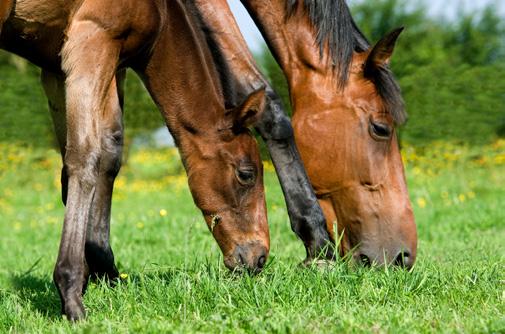

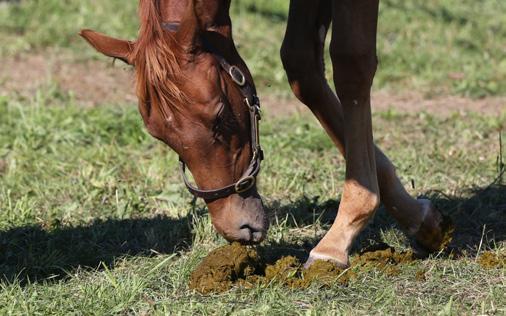

A high-risk circumstance for training yards is when new horses are introduced or horses return from periods at other sites. The traditional practice of treating all arrivals with a broad-spectrum wormer is outdated and should be avoided. Instead, new horses should be isolated, tested (using FEC or small redworm blood tests and tapeworm tests), and wormed based on the results. The effectiveness of treatments should be assessed by conducting a FEC test two weeks after worming. Arrivals should be kept off grazing areas until test results are known and, if treated, for three days after worming.
Studies have demonstrated that there is widespread and unnecessary overuse of worming products in the racing sector.8 This needs to change because of the increased threat of wormer resistance in the most important parasites of horses. Working closely with their veterinary surgeon, trainers can develop effective worm control strategies that help safeguard the effectiveness of these important medicines, especially as no new wormers are coming to market in the foreseeable future.
References:
1. Matthews & Mair. 2025. Eq. Vet. Ed. www.beva.onlinelibrary.wiley.com/doi/pdf/10.1111/eve.14182.
2. Proudman & Edwards. 1993. Equine Vet J. 25:224-6.
3. Clayton. 1986. Vet Clin North Am Equine Pract. 2:313-28.
4. Fog et al. 2011. Equine Vet J Suppl. 39:89-92.
5. Lightbody et al. 2016. Vet Clin Pathol. 45:335-346.
6. Matthews et al. 2024. In Practice 46:34-41.
7. Matthews et al. 2023. Pathogens. Pathogens 12:1233
8. Rosanowski et al. 2016. Equine Vet J. 48:387-93.
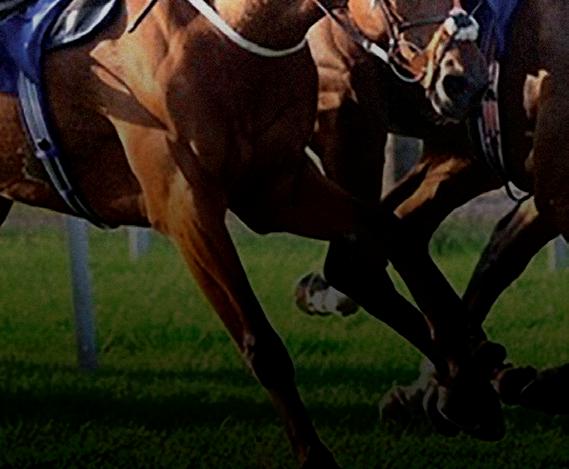
Apply best practice worm control for horses in training
New guidelines advise diagnostic-led programmes for worm control in horses1
Horses in training are generally at low risk of worm infection*
Testing low infection-risk horses results in substantial reductions in wormer use, reducing selection pressure for drug resistance
* When at pasture, apply excellent paddock management, including daily dung removal and low stocking densities




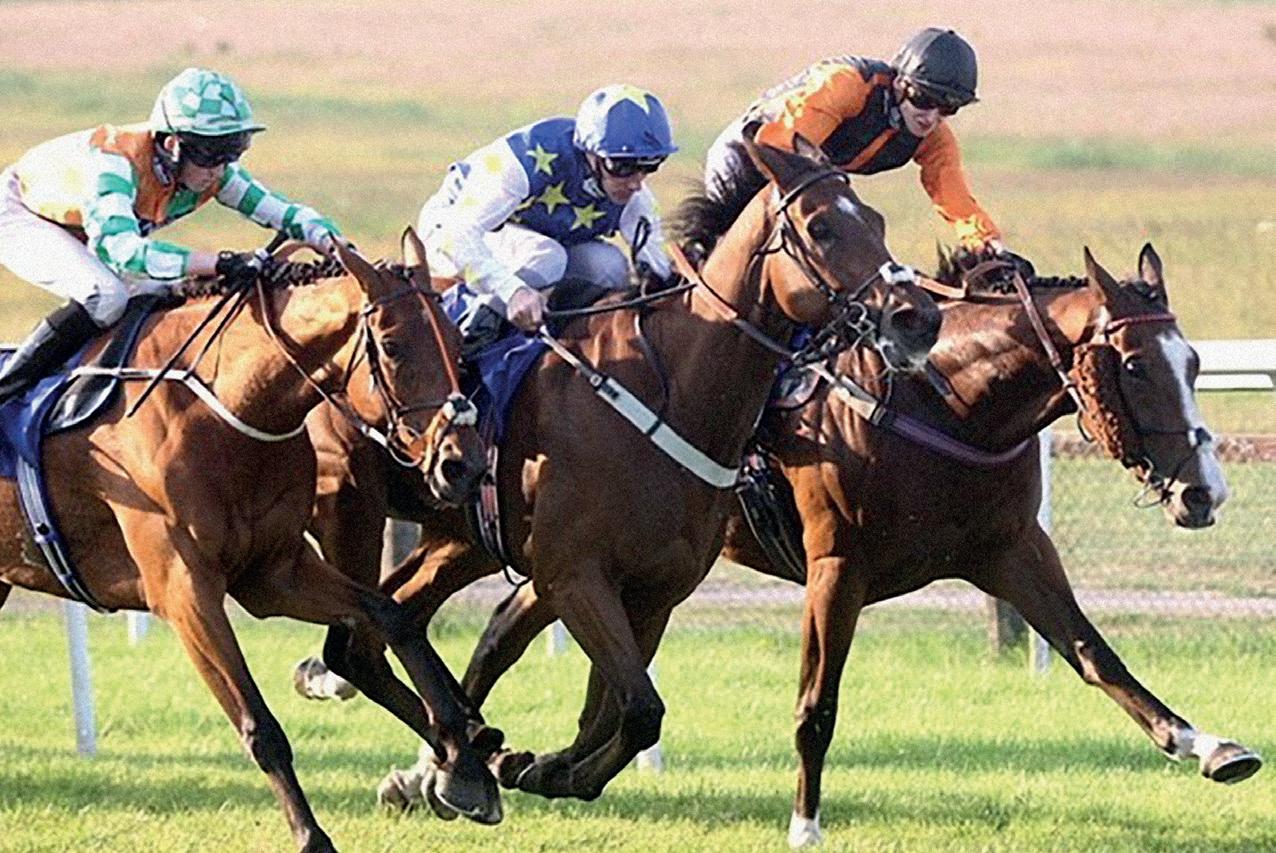
Strongyle worm egg shedding (FEC) patterns in adult horses mean that >70% of those tested do not need worming2


In low-risk groups, >60% of horses fall under the lowest small redworm burden threshold3 Only 1/3 of UK horses tested using the EquiSal saliva test have tapeworm infections that require treatment3
1 BEVA Anthelmintic Toolkit (beva.org.uk), 2 Relf et al. 2013. Parasitology 140:641-652, 3 Matthews et al. 2024. In Practice 46:34-41.
Diagnostic-led programme for horses in training




















Who doesn’t want to produce a performance athlete who is less stressed, experiences fewer setbacks and enjoys improved welfare? It has been shown that correct application of learning theory principles, starting from a young age, can clear the track.
Learning theory explains how each horse acquires, processes, and remembers the knowledge they need to perform as a racehorse. For handlers this means developing a deep understanding of how a horse learns. Naturally gifted horsepersons are already employing some of the principles, often without even knowing it, with their impeccable timing of cues.
In the past two decades, both social license to operate and equine welfare have come to the forefront. Failing to grasp how the horse’s brain works (both their capabilities and limitations) can lead to confusion, unnecessary stress, and dangerous behaviours. Conversely, understanding equine learning theory can streamline training, lessen the chances of injury to both horse and handler and improve efficiency in training.
How Foal NZ is using learning theory for the win
Globally recognised for their success training thoroughbred foals, Foal NZ has been achieving remarkable results in New Zealand. Through utilising learning theory they have completed over 35,000 training sessions without injury for the past two decades. Yearlings fetching million-dollar price tags and Group One race champions such as So You Think, Military Move and Jimmy Choux emerged from the program, earning acclaim in thoroughbred racing circles.
Learning theory is a way of explaining the different types of training typically used with horses and contains four main quadrants that explain how consequence is used to shape behaviour. Sally King of Foal NZ explains how they use learning theory to create confident, capable young athletes.
Aim:Tomakeadesirable behaviour more likelyinthefuture


The Foal NZ team use primarily positive and negative reinforcement to encourage the foals to learn the desired behaviour while becoming confident in both their ability to learn and their relationships with people. Using negative reinforcement (removing a cue the horse doesn’t enjoy as soon as the horse responds), the handler will ask the foal to move forward using pressure from a rope around the foal’s rump, releasing the pressure as the foal moves the first foot off the ground.
Once the foal is confident about being touched by people, then they will start to include positive reinforcement (doing something the horse likes) by offering the foal neck scratches once a desired behaviour is performed. “This encourages the foal to try to find the solution to what we are asking as they feel relaxed and confident in their abilities – the perfect mental state for accelerated learning,” says King.
Positive punishment (adding something the horse does not like such as vocal or physical reprimand) is less effective than other methods. An example of positive punishment is when a horse rears and ‘shanking’ the horse’s face is employed to punish them. While this may work temporarily as the horse attempts to avoid pain, numerous studies in children have shown that using positive punishment creates anxiety and fear and reduces brain function. Likewise, if the horse is afraid, they are hindered from using their brain to find solutions. Handlers that can recognise stress from facial expressions, muscle tension, and behaviours can pre-empt the rear by changing the situation to reduce tension.
Negative punishment (taking something away that the horse enjoys or values) is generally not recommended as this may cause stress and increase anxiety.
Desensitising and flooding are two learning concepts that have also been used in training. Desensitising involves gradually getting the horse accustomed to something, while flooding entails exposing the horse to a frightening stimulus in an intense and unavoidable manner. For instance, a young horse may spook or hesitate at a particular part of the track during their morning workout due to something new or unusual appearing in that area.
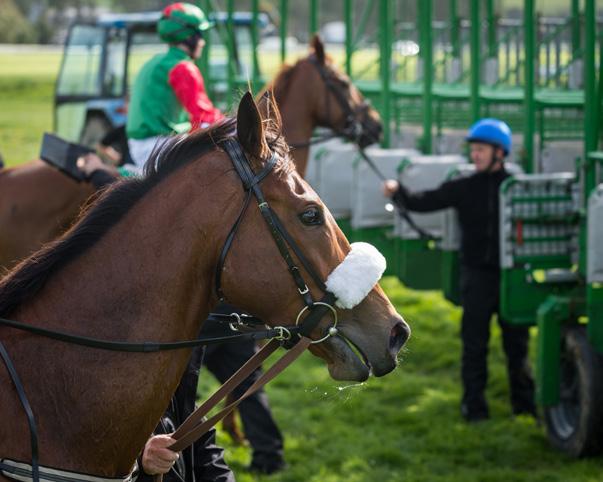
If a colt spooks and stops, and the handler was to tie them or hold them so they were forced to stay near what was frightening them, this would be called flooding. Eventually the horse would stop showing the fear behaviours but only because they have learned that nothing they do will make the scary object go away. It is not because the horse now feels comfortable in that area. Flooding can have a compounding effect called ‘trigger stacking’. Initially, the horse may suppress signs of fear, but as stress accumulates and the threshold is crossed, it can lead to sudden, intense reactions or behavioural outbursts.
In contrast, desensitisation could involve putting more distance between the horse and the ‘scary’ area at first. They may pass that area alongside another horse to gradually increase comfort with that part of the track, enabling pace to be maintained in future laps. A jockey that can sense his mount starting to hesitate or veer away can use their powers of prediction to desensitise and foster confidence rather than risk escalating stress.
Another well-applied example of learning theory is how trainers typically ‘shape’ responses when introducing horses to the starting gates. Trainers typically break down the elements of being able to use starting gates successfully into multiple parts, gradually going from walking past the gates to walking through open gates following a lead horse, to being beside the lead horse, to stopping inside the open gates, to stopping with one gate closed, then two, then waiting inside, then breaking at a walk and subsequently faster gaits. This way of training called ‘shaping’ also considers the horses ethology in understanding that they are social, prey animals and can feel uncomfortable being restricted in small spaces.
Timing and consistency are arguably the most important tenets of effective training; if the horse can predict what the handler or rider wants and knows they will consistently ask for the behaviour in the same way each time, they are much more likely to perform successfully and confidently.
Effective training relies on the simple relationship between the cue, the response and the reinforcement and being able to read stress levels. “In the bloodstock industry, young horses are more likely to be exposed to a wider range of handlers and environments than sport horses but will typically have to perform a smaller range of behaviours than a sport horse,” says King. Thorough training of cues and responses will set the horse up for future success when a wide range of handlers, with varying experience ask the horses to perform behaviours during varying states of arousal.
Using a training system that uses clear principles of learning and lessens the occurrence of conflict behaviour, avoidance and escape behaviours has positive outcomes for both horse and human safety and welfare. A young horse that has been trained this way will be more compliant, better able to cope with environmental and social changes and consequently safer. Not only that, but they will feel like they can predict their world, succeed at their job and have some sense of control over what happens to them – all things that increase self-confidence and thus optimise performance.
Within a busy yard, there are time pressures often resulting in limited time to achieve results. Using clear and consistent approaches based on learning theory results in quicker and more robust training, more efficient use of staff time and therefore increased productivity; and for most organisations, improved commercial viability.
This brings us to the next question – How well can you tell? Can a wide range of horse handlers accurately gauge a horse’s behaviour as positive, neutral or negative? Dr. Katrina Merkies, a professor in the Department of Animal Biosciences at the Ontario Agricultural College has collaborated on numerous horse behaviour studies and recently published a paper on this very topic.
As it turns out, most of us might not be as perceptive as we think. Merkies’ recent study explored how accurately people can interpret horse-human interactions by looking at photos and watching videos. On average, participants correctly identified whether a situation was positive, negative or neutral only about 52% of the time, which is barely better than chance.
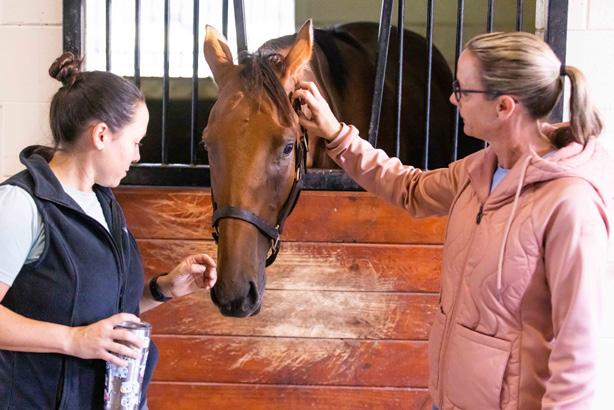
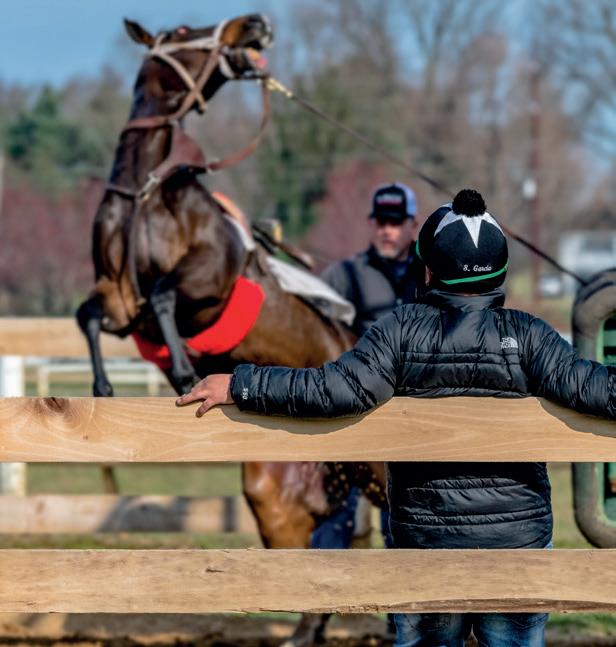
One of the central questions of the study was whether people who are more in tune with their own bodily sensations—such as heartbeat, breathing, or muscle tension—are also better at interpreting the emotional states of horses. This idea stems from human psychology research, which shows that individuals with greater internal awareness, or interoception, tend to be more empathetic toward others.
To explore this in the context of human-horse interactions, the researchers used a tool called the Multidimensional Assessment of Interoceptive Awareness (MAIA-2). This reliable questionnaire measures how aware people are of their internal bodily states across eight dimensions, including emotional awareness, attention regulation, and body listening. Participants rated themselves on a scale from 0 (not at all) to 5 (very much) for each item.
Participants were asked to evaluate the various horse-human interaction clips before the MAIA-2 results were recorded to avoid skewing the results. Surprisingly, the results showed no significant correlation between a person’s interoceptive awareness and their ability to accurately assess the horse’s emotional state.
This unexpected outcome raises several possibilities. It could mean that interoceptive awareness simply doesn’t translate across species, or that the MAIA-2 isn’t the right tool for this kind of cross-species empathy. Another possibility is that the participants—many of whom were highly experienced with horses—relied more on their practical knowledge than on emotional intuition when evaluating the clips.
To establish a benchmark, the researchers first had equine behaviour specialists evaluate the same media. Their assessments were treated as the gold standard. When the study participants viewed these clips, their interpretations often missed the mark— unless the emotional cues were especially obvious. For instance, people were more likely to recognise a negative scenario when a horse clearly refused to walk across a tarp, or a positive one when a foal willingly approached a person for attention.
These results raise important questions about how well we understand the emotional lives of animals, and how that understanding—or lack thereof—can impact their welfare and how we approach training.
While people were somewhat successful at identifying obvious emotional cues in horses, the study revealed a significant gap in recognising more subtle indicators. According to Dr. Merkies, many of these nuanced signals are found in the horse’s facial expressions. Participants often reported focusing on the horse’s face to gauge their emotional state but frequently overlooked finer details.
Some of the key subtle cues included the direction of the horse’s ears, tension lines around the eyes, and the flaring of nostrils. These small but telling signs can reveal a lot about how a horse is feeling— whether they are anxious, curious, or relaxed. Unfortunately, these indicators are not always easy to spot, especially for those without specialised training in equine behaviour.
Improving our ability to recognise these subtle cues could raise the bar for increasing positive human-animal interactions and improving the chances of early intervention at the first sign of physical issues.
The study highlights a clear need for improvement in how people perceive and interpret subtle equine behaviours. So how can we get better at this? According to Dr. Merkies, education is the obvious starting point—but it’s not the whole solution. “We can learn about these cues,” Merkies explains, “but being able to apply that knowledge in real-life situations is a different challenge.”
One promising approach is the use of tools like the Horse Grimace Scale which can help observers assess facial expressions and other subtle signs of discomfort. These tools are gaining traction in professional settings; for example, the Hamilton Mounted Police unit uses facial grimace scoring as part of their daily horse care routine. Incorporating such practices into everyday horse management can train people to notice and interpret the finer details of equine behaviour.
Scan the QR code for the Horse Grimace Scale
Dr. Merkies emphasises the importance of shifting our perspective: “We need to stop, listen, and pay attention—not from an anthropomorphic viewpoint, but by trying to understand how the horse is experiencing the situation.” This means resisting the urge to project human emotions onto horses and instead learning to see the world through their eyes.
Another barrier to better understanding horses is the normalisation of certain behaviours within the equine industry. “There are a lot of myths that get passed down and accepted as just the way things are,” says Dr. Merkies. Take, for example, a horse pinning their ears when the girth is tightened. This is often dismissed as the horse being a grouch or even ‘normal’ behaviour for that horse, but this mindset can prevent us from asking deeper questions: Why is the horse reacting this way?
What are they trying to communicate? Is there a physical reason for this reaction?
Another great example of negative feedback, often ignored or normalised, is a horse that displays discomfort while being groomed by constant fidgeting, head tossing or grimacing. Again, the discomfort should be acknowledged and addressed, perhaps with softer brushes or counter-condition using positive reinforcement. Is there a physical issue that requires veterinary intervention?
By challenging long-held assumptions and encouraging critical thinking, the equine community can move toward more benevolent and informed interactions with horses.
One of the most promising ways to improve horse training and welfare is through the use of positive reinforcement—a method that rewards desired behaviours to encourage their repetition.
Dr. Merkies emphasises that this approach not only works but often leads to better outcomes than traditional methods that rely on punishment or pressure.
Despite its effectiveness, positive reinforcement is sometimes misunderstood. Common myths suggest it might make horses ‘mouthy’ or lead to weight gain from treat overuse. Others argue it’s unnecessary because a horse should obey out of affection or loyalty. These misconceptions can discourage people from adopting more compassionate and effective training techniques.
Positive reinforcement doesn’t have to be complicated—or even food-based. While treats are a common and convenient reward, other reinforcers can include scratches, companionship, or access to a favorite location. The key is understanding what motivates your individual horse.
Dr. Merkies offers a simple but powerful example: “When you go to halter your horse, do they come to you, ignore you, or turn away?” These responses are forms of feedback. Even subtle

behaviours—like a horse turning its head slightly away when approached—can signal discomfort or reluctance.
Recognising and responding to these cues can transform training into a more cooperative and enjoyable experience for both horse and handler.
Ultimately, positive reinforcement fosters a relationship built on trust and mutual respect. “It’s super satisfying,” says Dr. Merkies, “when they come running up to the gate or whinny from the field. Then I know they’re looking forward to the training session.”
The benefits of a horse experiencing more positive interactions with humans than negative ones are obvious from a welfare and safety standpoint. When a horse is repeatedly exposed to negative interactions with humans, they may develop fear or resistance, which can make handling more challenging and increase the risk of injury for both the horse and the handler. If you are looking for ways to use more carrot and less stick to reduce stress and setbacks, consider applying the principles of learning theory to your horse training program.
References:
• Sally King, Leigh Wills, Hayley Randle, Early training of foals using the ISES training principles, Journal of Veterinary Behavior, Volume 29, 2019, Pages 140-146, ISSN 1558-7878,
• Merkies K and Trudel K (2024). How well can you tell? Success of human categorisation of horse behavioural responses depicted in media. Animal Welfare, 33, e50, 1–11
• The Horse Grimace Pain Scale: Dalla Costa, Emanuela & Minero, Michela & Lebelt, Dirk & Stucke, Diana & Canali, Elisabetta & Leach, Matthew. (2014). Development of the Horse Grimace Scale (HGS) as a Pain Assessment Tool in Horses Undergoing Routine Castration. PloS one. 9. e92281. 10.1371/journal. pone.0092281.
• Operant conditioning chart reprinted with kind permission of World Horse Welfare. www.worldhorsewelfare.org/advice/training-how-do-horses-learn
Equine Guelph offers both short courses and an in-depth 12-week online program in horse behaviour. Scan the QR code for more details
